
Welcome to our blog.

Welcome to our blog.
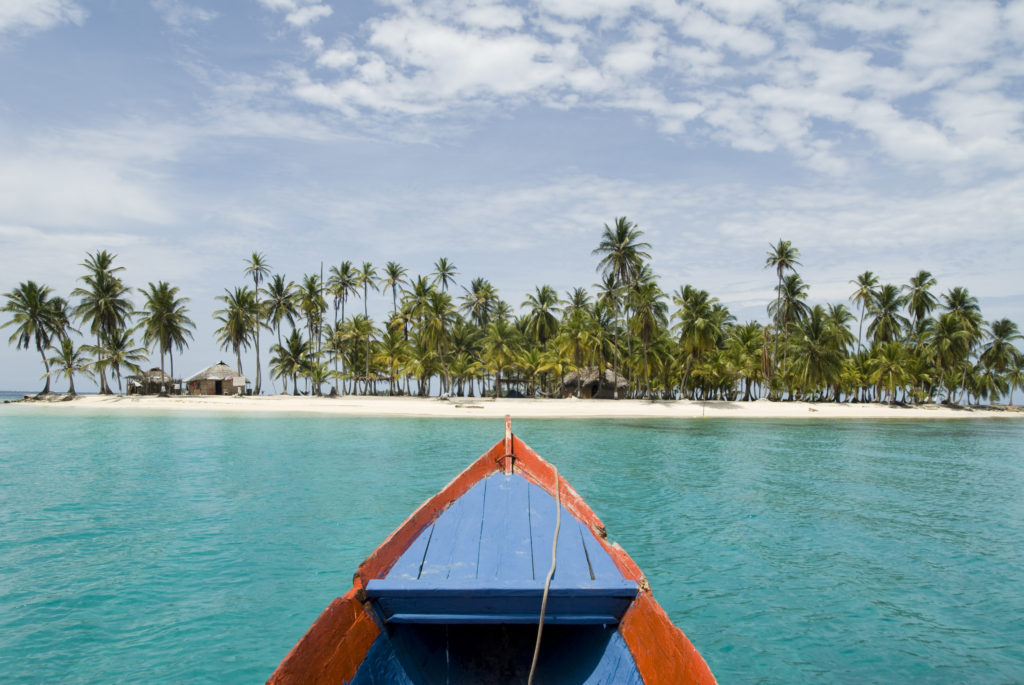
Have you ever wanted to live like Robinson Crusoe and sleep on a deserted island for a night? If yes, then you should add the San Blas Islands to the TOP of your bucketlist. This remote island archipelago off the north coast of the Isthmus of Panama, east of the Panama Canal is a paradise yet to be discovered by the masses. Compromising of around 370 islands (mostly inhabited), these islands make the perfect island getaway. If you are looking for adventure, culture and a unique and once-in-a-lifetime experience, San Blas island hopping with kids will be a trip the whole family will enjoy!
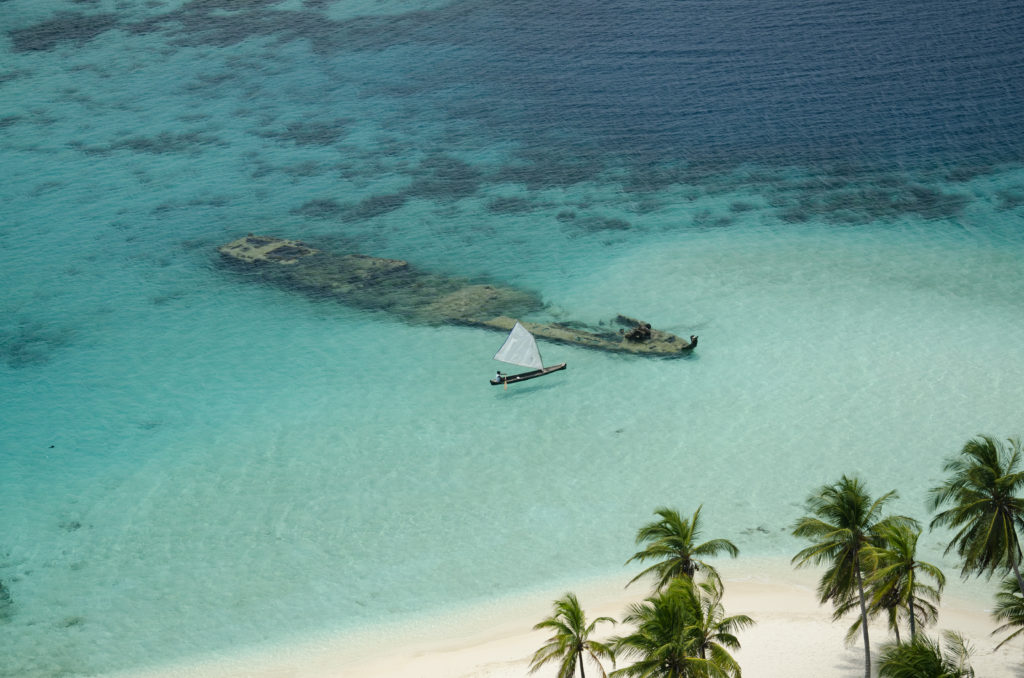
Unlike most island paradises where you stay on one island at a resort, the San Blas islands are a bit different. The best way to experience the magic of these islands is by hopping from one island to another. It’s quite the adventure! The San Blas feel untouched and pristine since the islands aren’t overcome with tourists yet, which make the whole experience more authentic and peaceful. It is here where you can really get away from it all and leave your troubles behind.
Snorkeling in pristine coral reefs, taking a nap under the palms, eating fresh caught lobster and sipping coconuts–that’s just a snippet of what to expect in the San Blas islands!
Since the San Blas islands are occupied and owned by the Kuna Yala tribe (an indigenous group of people in Panama who have existed here for hundreds of years), you really get to observe this beautiful culture up close and personal. You will feel like you’re taking a step back in time, as things are at a slower pace of life here. You also don’t have the amenities that you might be used to. But that’s what makes this island hopping trip so memorable!
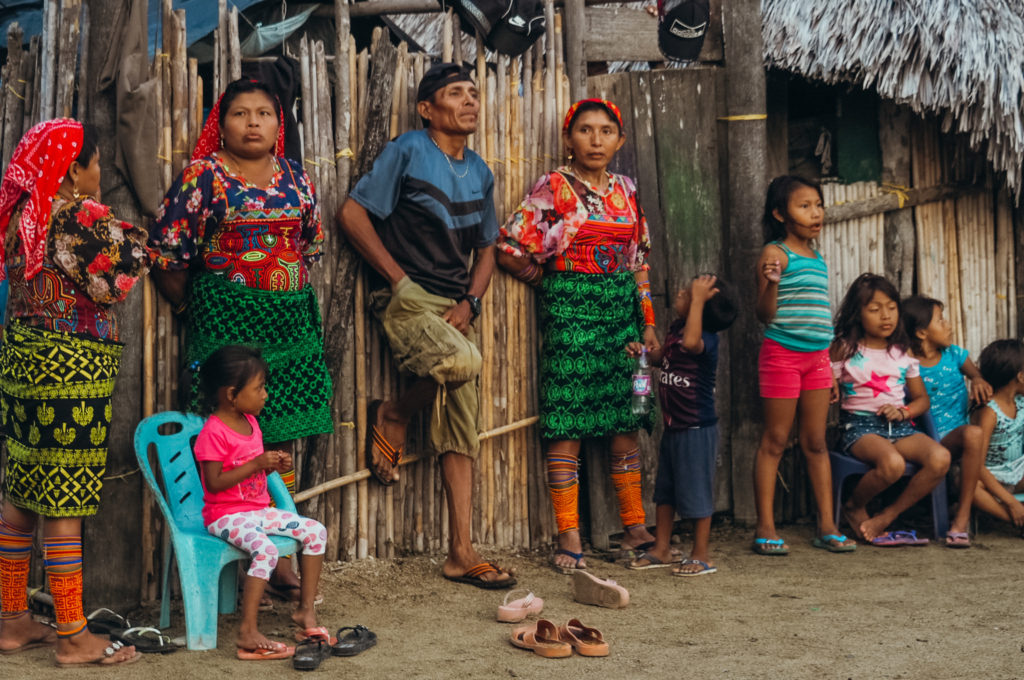
The Kuna people are incredibly warm, welcoming and kind and being among them is both an educational and inspiring experience. San Blas island hopping with kids was truly one of our favorite adventures!
You have 3 ways to get to the San Blas Islands and it all depends on from which direction you are coming from: Panama or Colombia. We came from Panama City after spending a week in Bocas del Toro.
*Note: You cannot cross the border from Panama to Colombia or vice versa. This is because traveling over the land border, known as the ‘Darien Gap’ can be very dangerous. This is a popular drug trafficking route out of Colombia to Panama and is not safe (plus it’s just untamed jungle the whole way!).
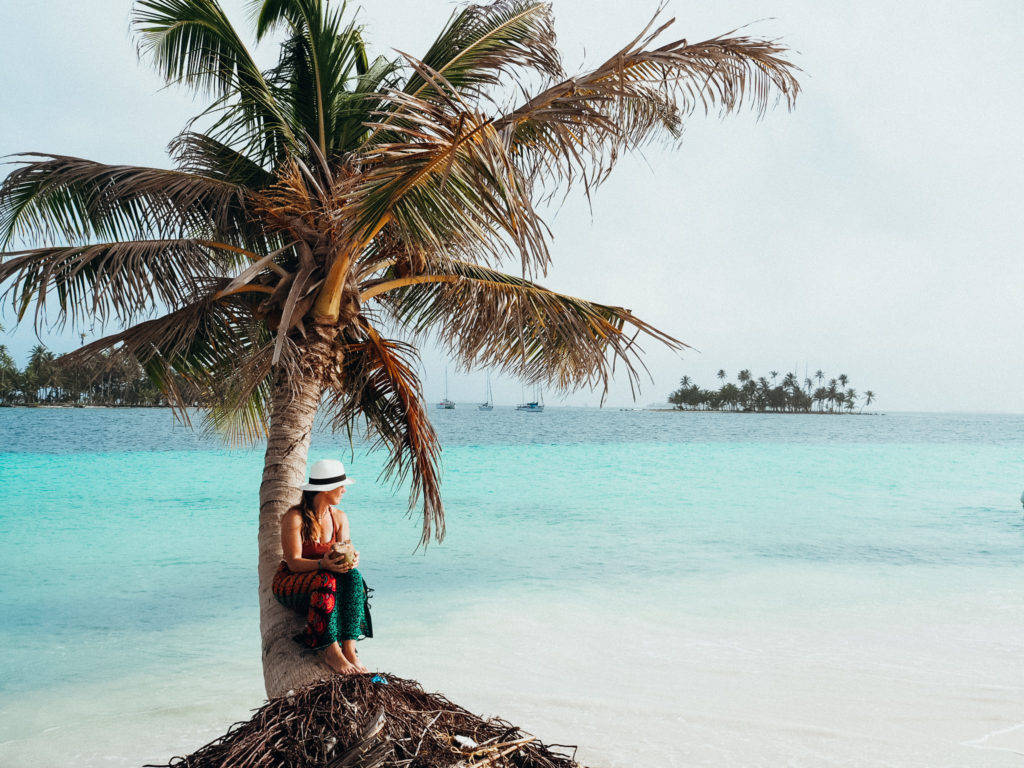
Option 1: Fly to the San Blas Islands
The first and most expensive option to reach the San Blas islands is to fly via Air Panama from Panama City. This option is good if you want to get to San Blas quickly and comfortably and don’t care to island hop. If you choose this option, you will need to stay in one of two lodges: Sapibenega or Yandup Lodge.
However, most travelers don’t make this choice because it’s pricey and you’ll miss out on the opportunity to travel through the Caribbean Sea by boat! The flight leaves to various landing spots around the San Blas islands. Be sure to book the flight at least one week in advance as only one plane leaves per day at 6am.
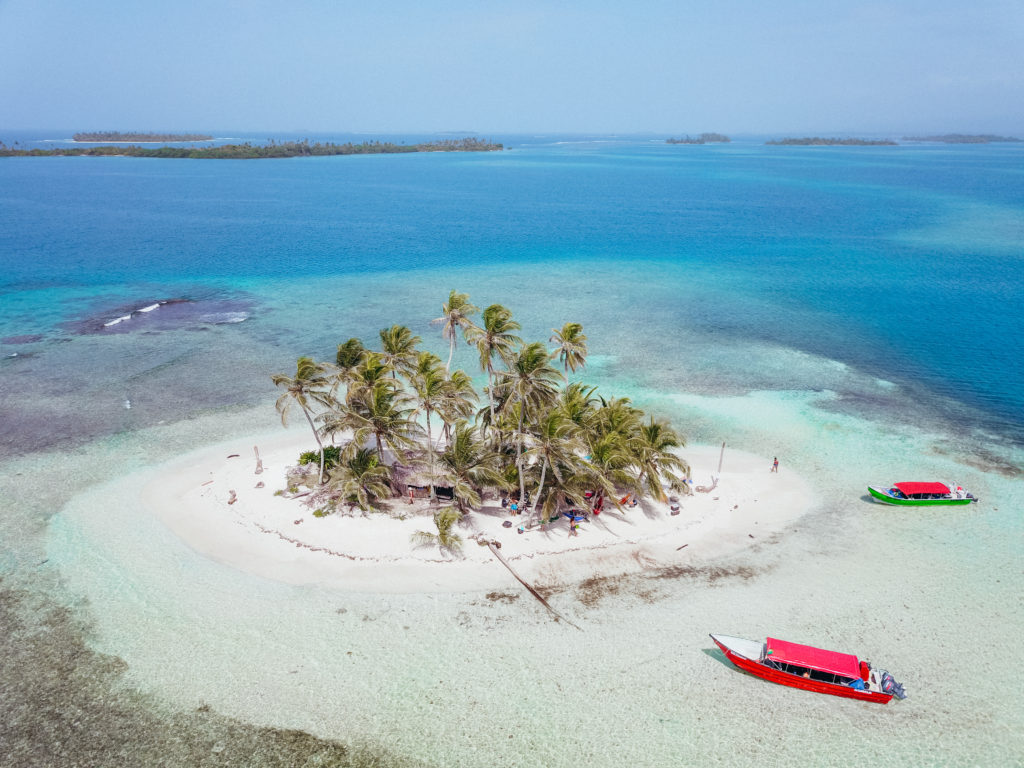
Option 2: Catch a 4 X 4 from Panama City and then boat around the islands
This is probably the most common way to get to the San Blas islands. From Panama City, you can take a 4 X 4 shuttle (most guided companies include this transportation) to the port city of Carti on the mainland and then from there, you will get on a boat (sail or speedboat) and island hop around San Blas for a few days before reaching Capurgana or Cartagena.
We will go into the differences between taking a sailboat vs a speedboat later.
Option 3: Take a bus and then a ferry from Colombia
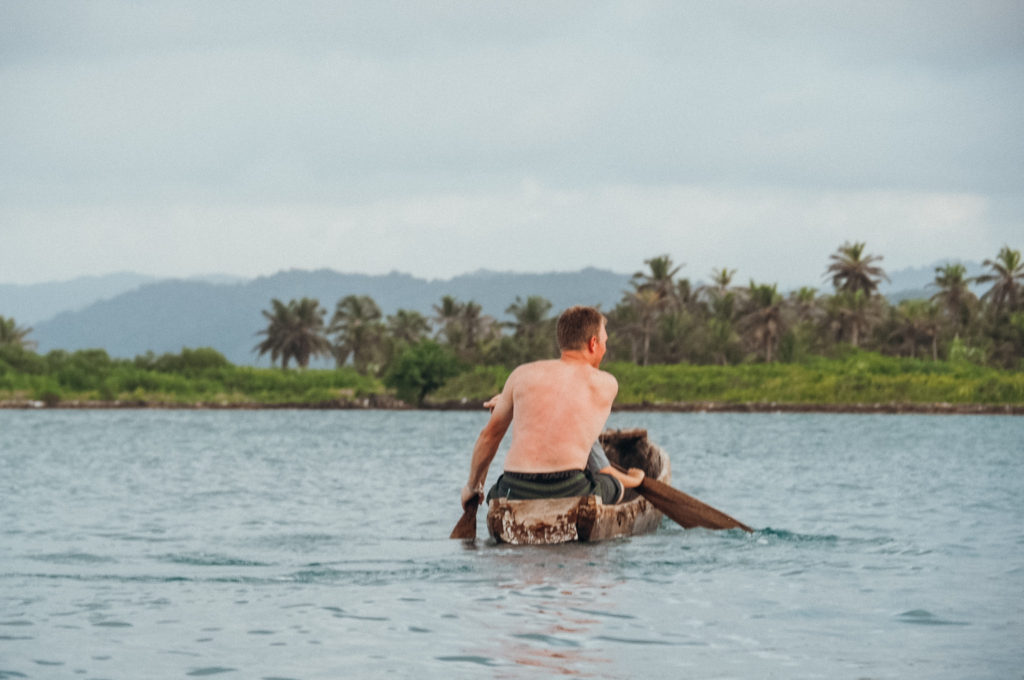
As stated above, if you are coming from Colombia, you can either take a sailboat from Cartagena or a speedboat from Capurgana (a small border town). To get to Capurgana, you will need to take a bus and a boat ferry from wherever you are in Colombia (most travelers come from Medellin or Cartagena). For example, you can take a bus from Cartagena to Necocli and then a ferry boat over to Capurgana (which takes about 1.5 hours and costs around $24 USD).
Once you are in Capurgana, there are plenty of great hostels to stay at, lovely beaches and hikes (stay a day or two if you can to enjoy it fully!), and of course, this is where you would catch the speedboats to the San Blas islands. More on that below.
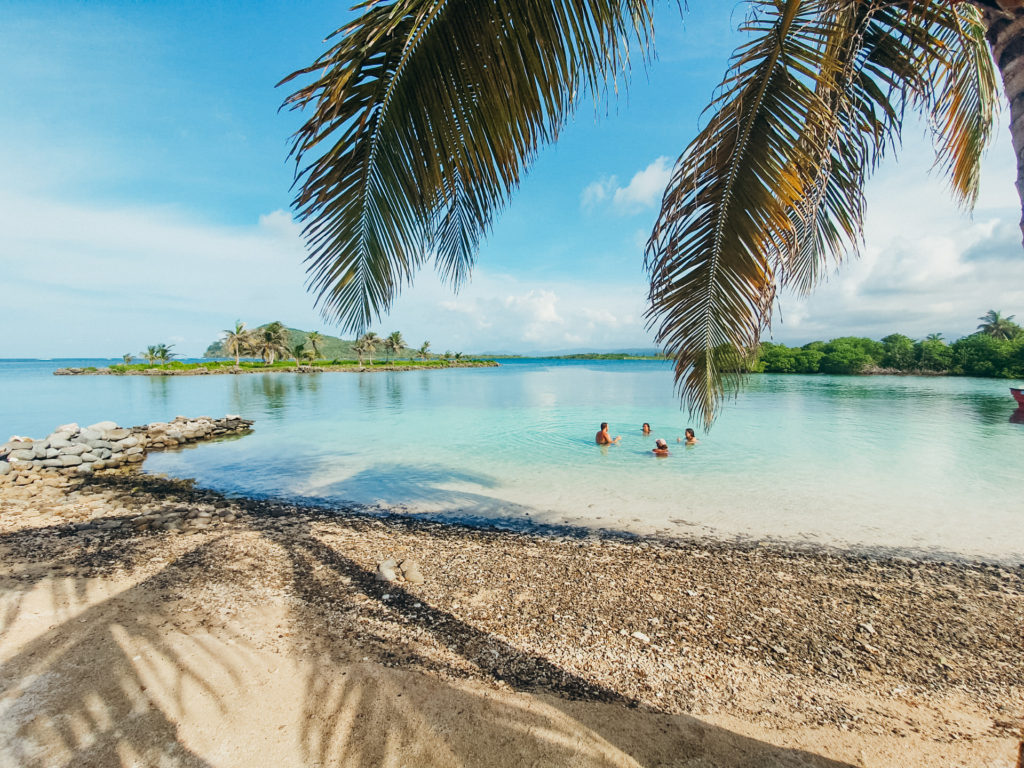
The San Blas trip is possible all year round as the weather is mostly good any season however it is important to note that between December and March, it is windy. This means there will be big waves, not necessarily around the islands as it is sheltered by a reef, but the journey over open seas can get rough (this is especially true if you are traveling by sailboat). If you get seasick easily the sailing trip might not be for you!
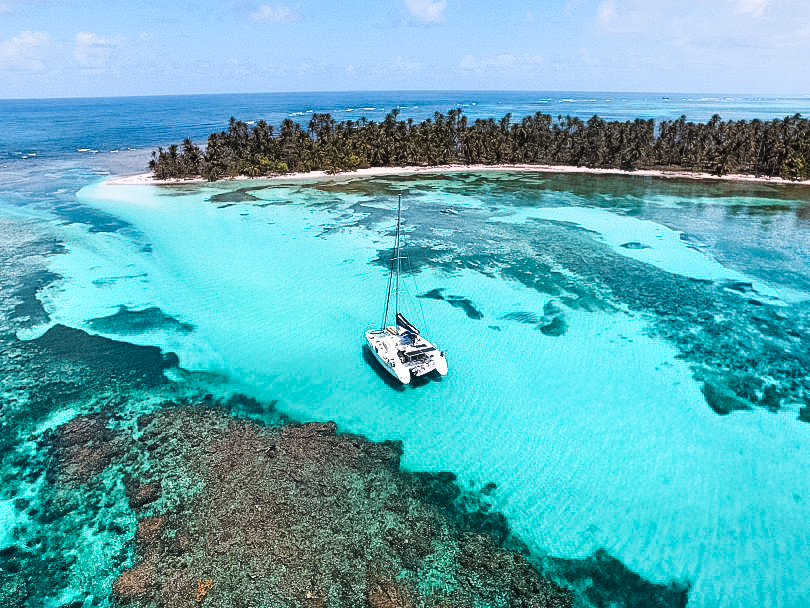
By Sailboat
The more popular way to travel through the San Blas islands is by sailboat. Most people who choose to sail are traveling from Cartagena to Panama or vice versa. Most sailing trips last 5 days, from which you will spend two full days sailing the open ocean. Be warned, the last two days on the open ocean can be extremely rough when it’s windy. This option also means that you will spend less time on the islands and more traveling in between them. If you would rather have more time experiencing the magic of these islands and the indigenous people who live there, this option isn’t for you.
By Speedboat
Not many people know about this option, but you can also take a speedboat through the San Blas islands. This is what we did because one, we wanted more time on the islands and two, it was cheaper for us. We chose to go with a company called San Blas Adventures and we did the 4 day trip from Panama to Colombia. The other reason we chose to go with San Blas Adventures was because we loved that they are all about sustainable, responsible tourism.
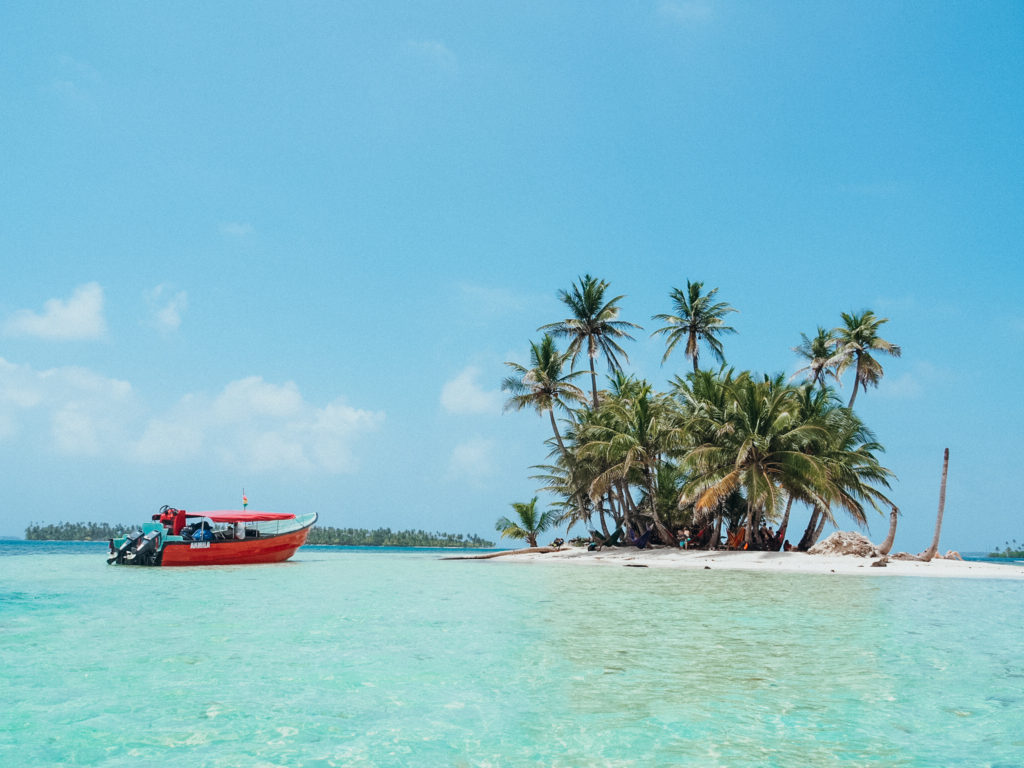
This means that they heavily involve the Kuna people who inhabit the islands. In fact, the Kuna have part ownership in the company! San Blas Adventures works closely with the Kuna on all aspects of the trip and most of the money from your fare stays in San Blas, distributed among the local people they work with and the different communities you get to visit along the way.
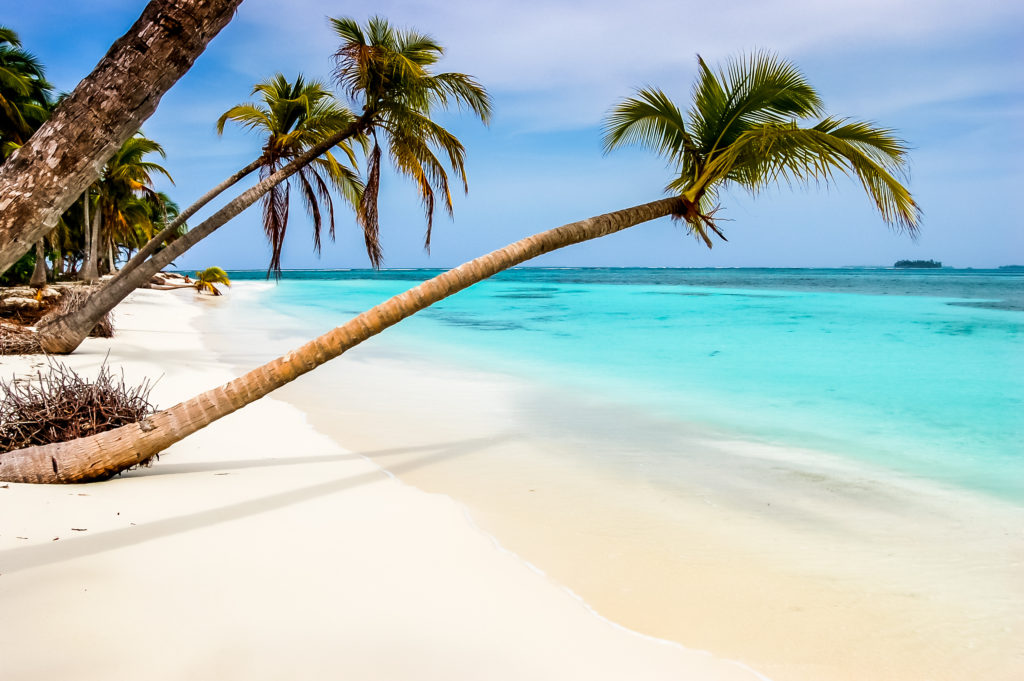
Day 1
If you are coming from Panama City, the day will start around 5AM with a bumpy 3-ish hour ride in a 4 X 4 to the port town of Carti where you will load up your luggage on the speedboats. *Note: You will be required to bring large, durable garbage bags to put your luggage in (backpacks, suitcases, etc). This is to keep your gear dry inside the speedboats. Once the luggage is securely on the boat, it’s time to take off for the first island adventure.
As mentioned previously, one of the benefits of going in a speedboat with San Blas Adventures is you won’t spend more than 3 hours in a boat per day. This means a lot more island time!
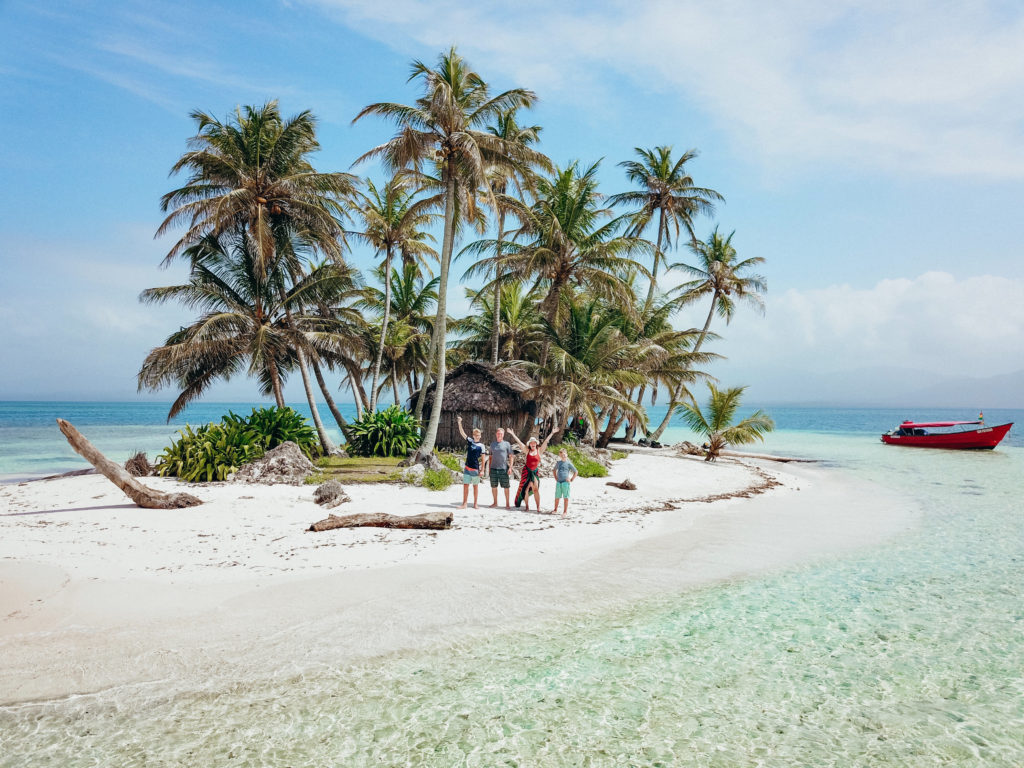
The first island on Day 1 was our favorite, as it was small and extremely photogenic. It also felt like we were on the movie set of Castaway! The snorkeling on this island was the best too, with a shallow reef (perfect for kids!), lots of colorful fish and even rays. We ate a delicious lunch of different salads and fresh fish, played soccer and volleyball on the beach, took naps in hammocks and drank cold coconuts under the palms. PARADISE!
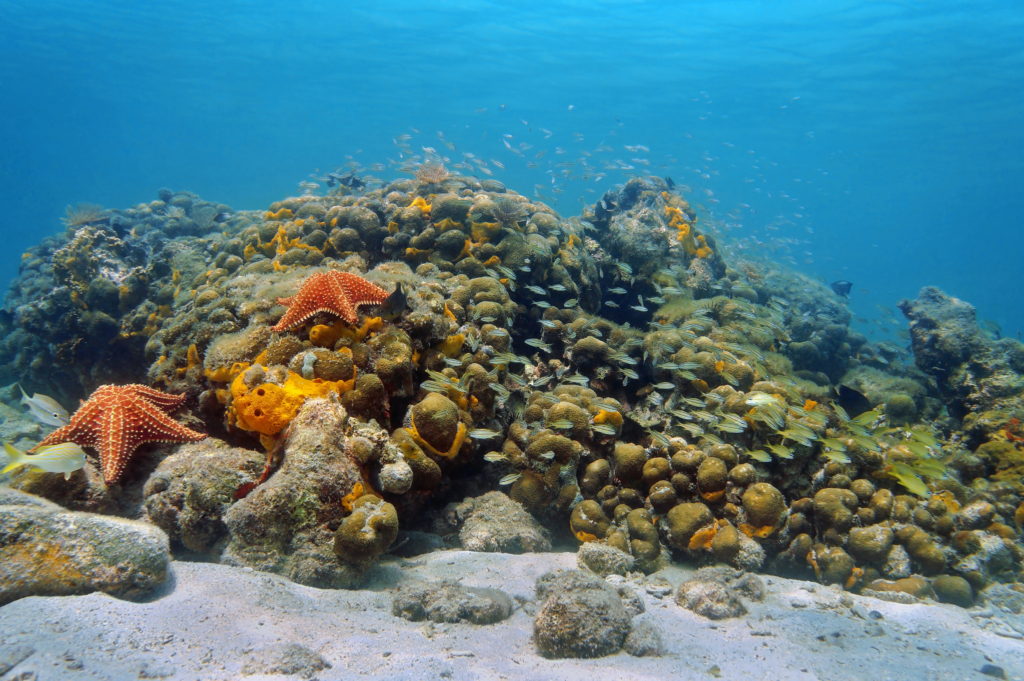
We spent the majority of the day on this island before jetting off to a bigger island, about 20 minutes away, where we would eat dinner and sleep for the night. On this island, there are some Kuna families that live here that help with the cooking, as well as sell some of their goods. We played volleyball and also had a team competition: a photo scavenger hunt. This was a great game to get to know the group better (we had 28 people in our group including guides!). Dinner was fresh lobster and more fresh vegetables and salads–so delicious!
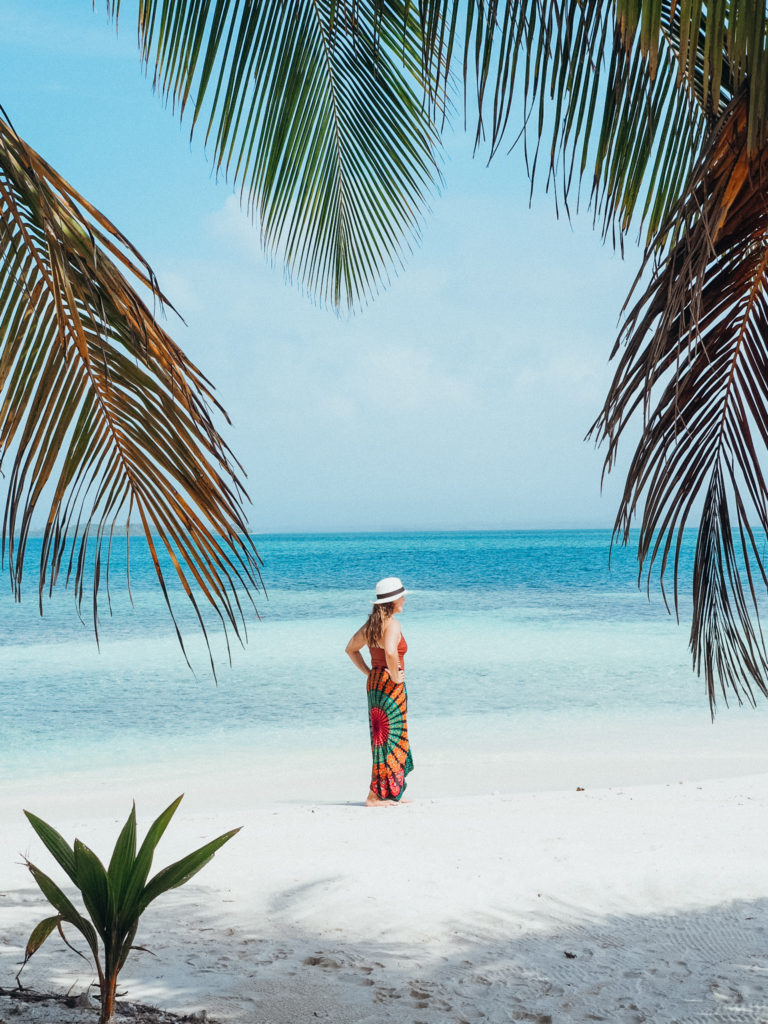
Another few things to note about island hopping with San Blas Adventures. First, you sleep in hammocks under one, big communal hut on the islands! I will be honest, at first I was nervous about how this would be with 20-something other people, but it actually wasn’t bad at all! If you are a light sleeper and worried about snorers, bring ear plugs just in case. Hammocks were comfortable though–and even though it’s hot on the islands during the day, having a light blanket with you or wearing leggings/sweats and a sweatshirt is a good idea, as it tends to cool down at night.
Day 2
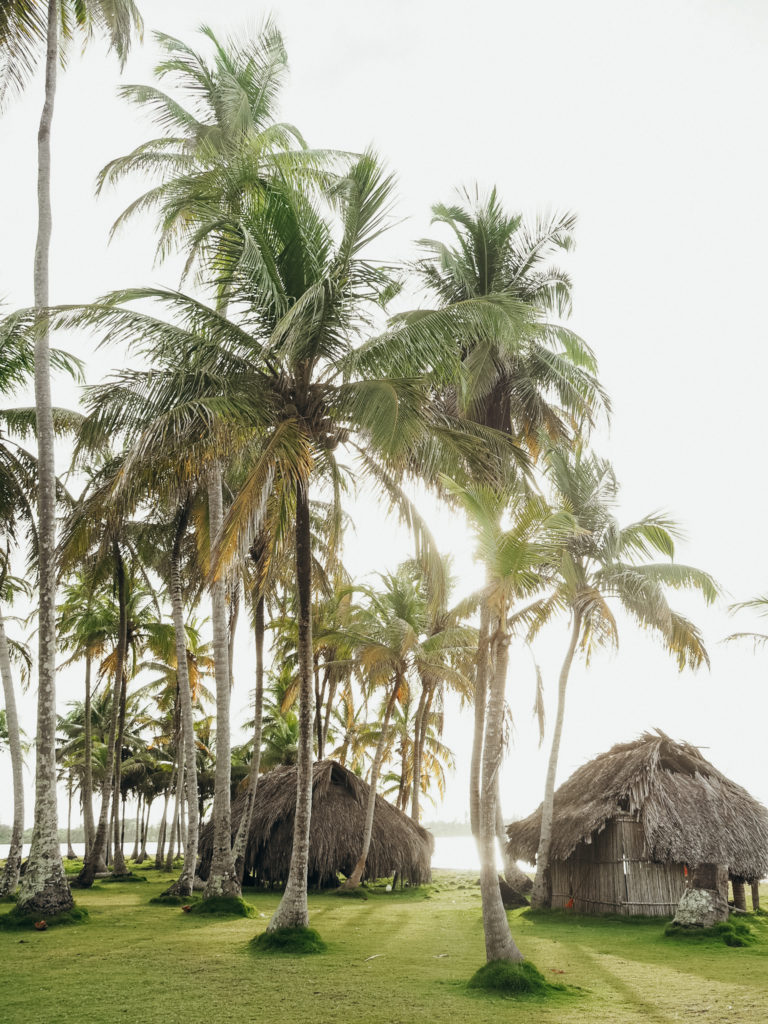
Each morning on the islands begins early with breakfast and then it’s time to pack up and move onto the next island. After a 2-ish hour boat ride to the next island on the second day, we spent the day playing a lot of volleyball and soccer, but also slack-lining, more swimming and relaxing! Each night if the weather conditions were good, we had bonfires on the beach after dinner.
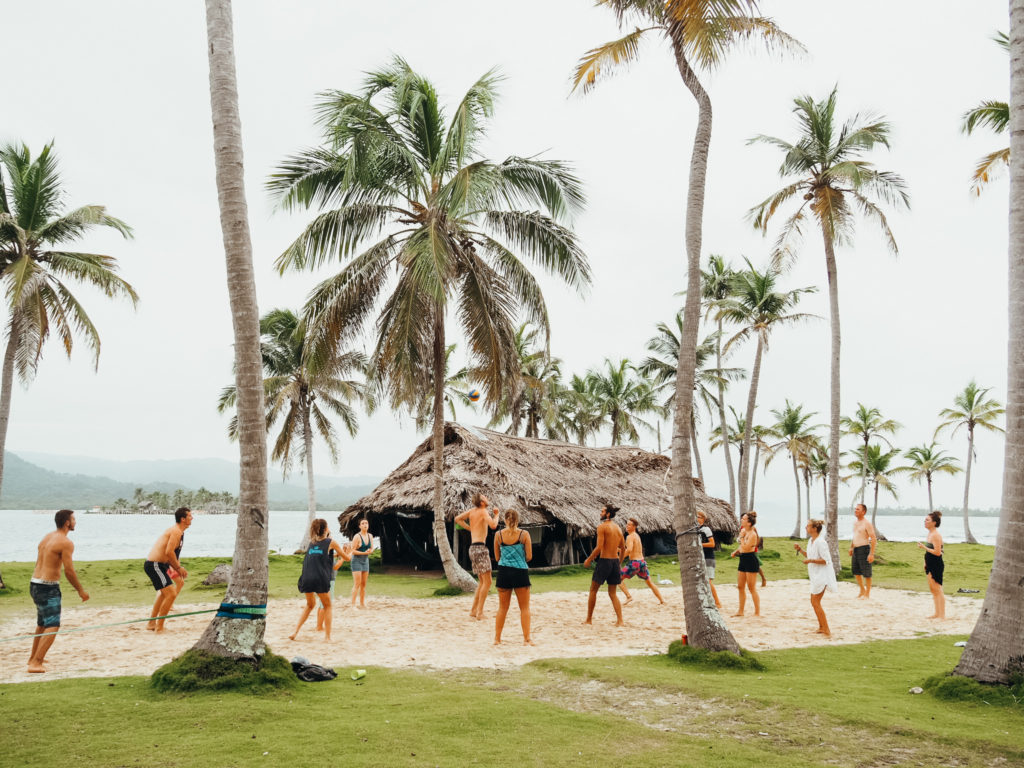
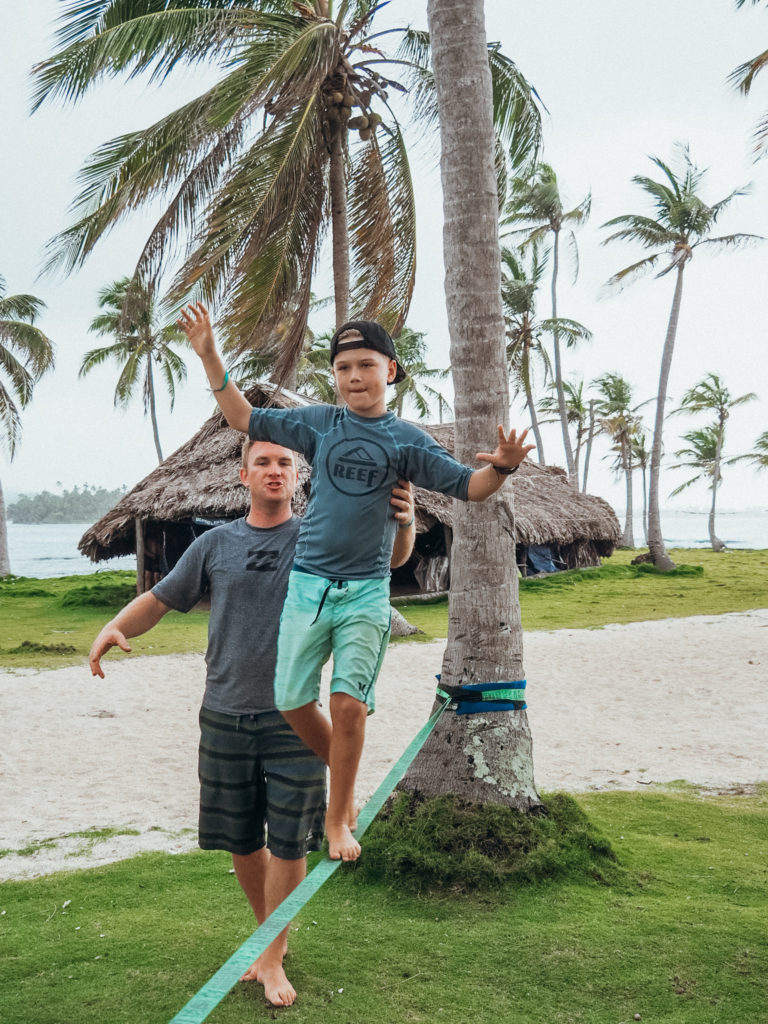
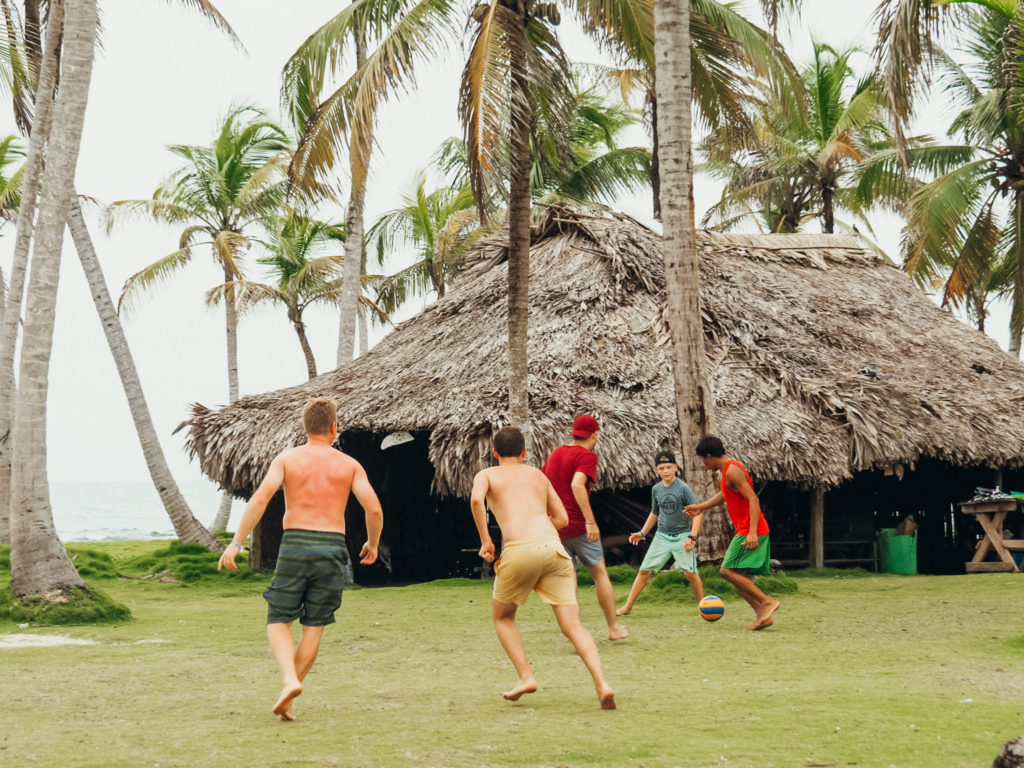
Day 3
The third day with San Blas Adventures started with a longer boat ride (perhaps 3 hours?) to the first island where the majority of the day we snorkeled, played volleyball with the Kuna and chilled on the beach. Later in the afternoon, we used the Kuna’s wooden canoes to paddle over to the community island (about 15 min away). That was a treat! We then spent a few hours playing with the local kids, watching a traditional Kuna dance, eating dinner and learning more about their culture. It was one of the best parts of the entire trip!
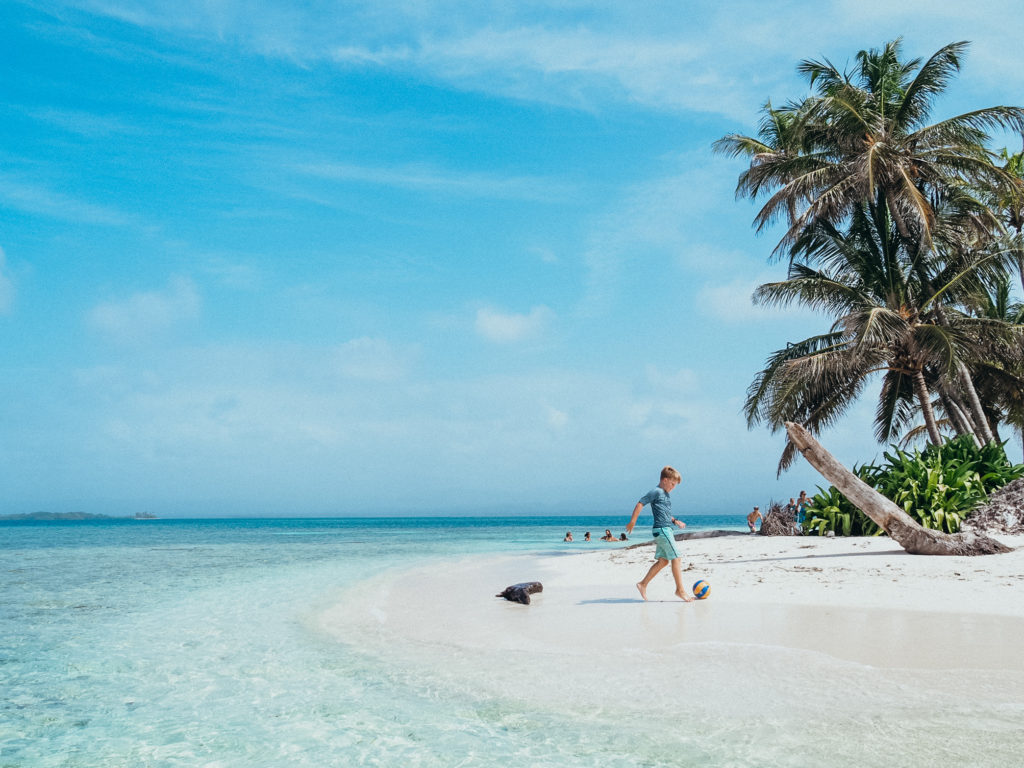
The last night in the San Blas islands was spent on the community island in beds in hostel-type accommodations instead of under a hut in hammocks. This “lodge” is owned by the company and the community, so the only people that stay here are guests with San Blas Adventures.
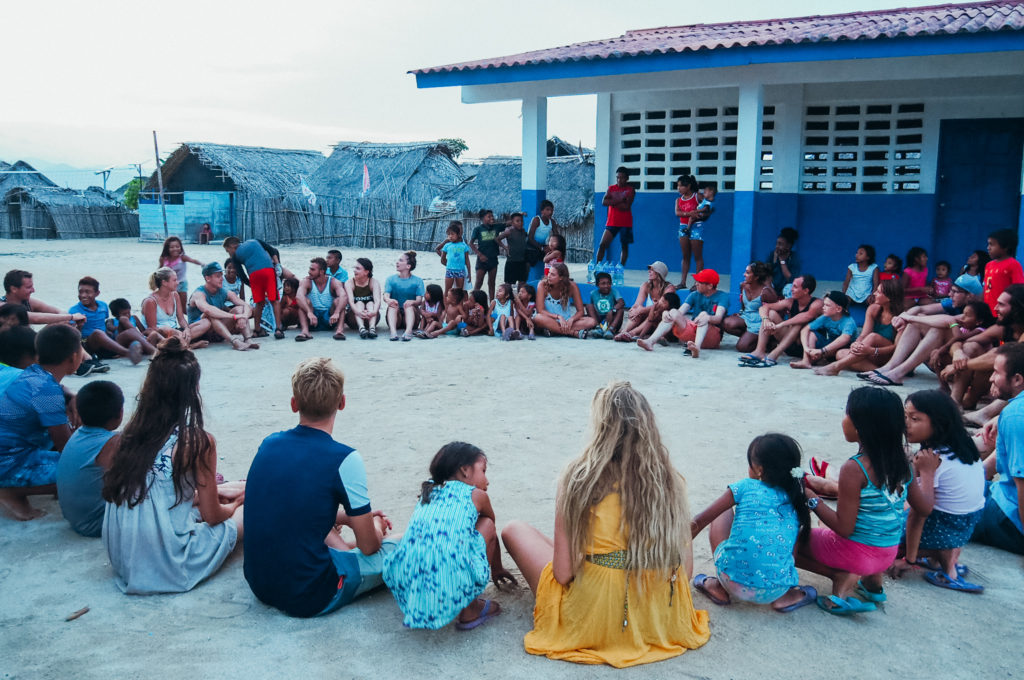
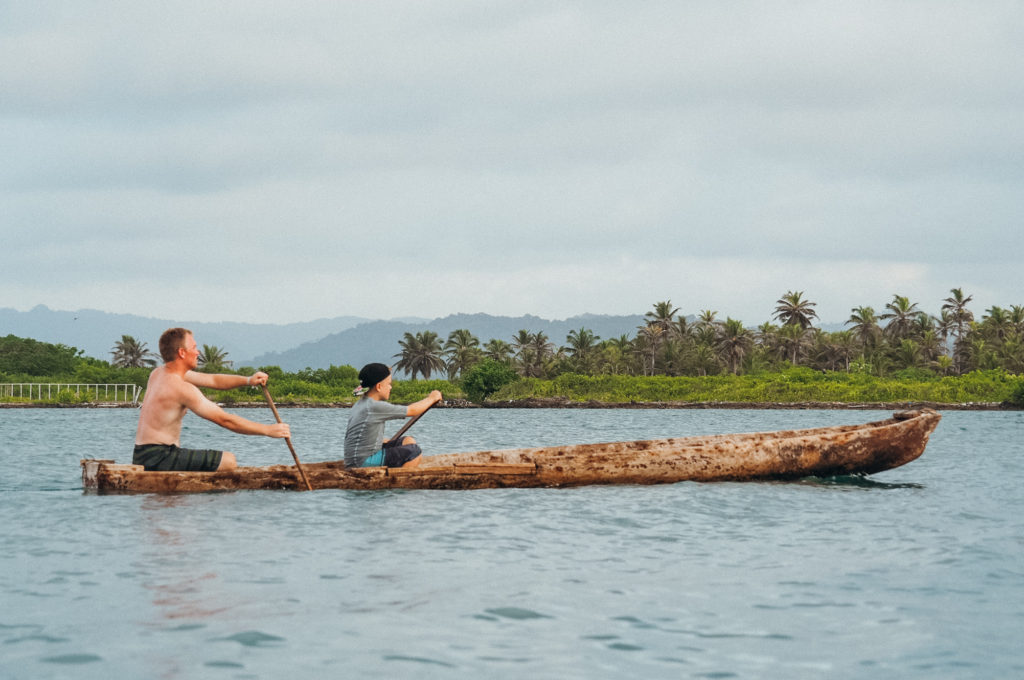
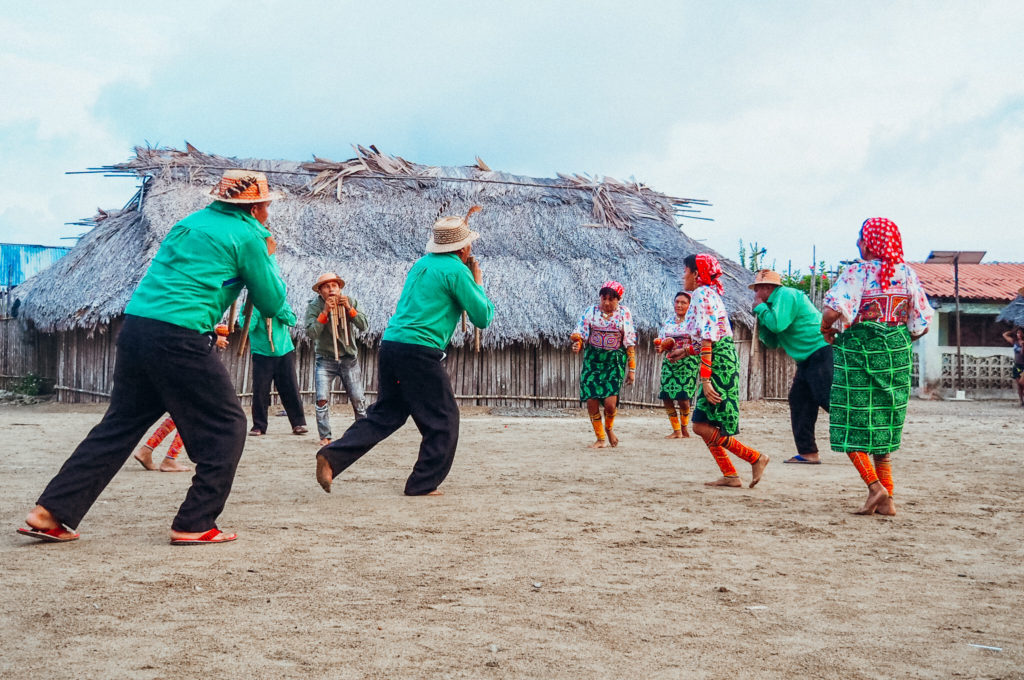
Day 4
The final day with San Blas Adventures was spent boating to Colombia. We started the day out early with breakfast, then packed up the boats and left for the border. This boat ride was by far the roughest, but luckily, it was only a couple of hours to our next stop. After going through immigration at the Panama-Colombia border, we got back on the boat and jetted to Sapzurro, a small, sleepy town in Colombia. We spent the afternoon eating homemade tamales and ice cream on the beach and playing in the water.
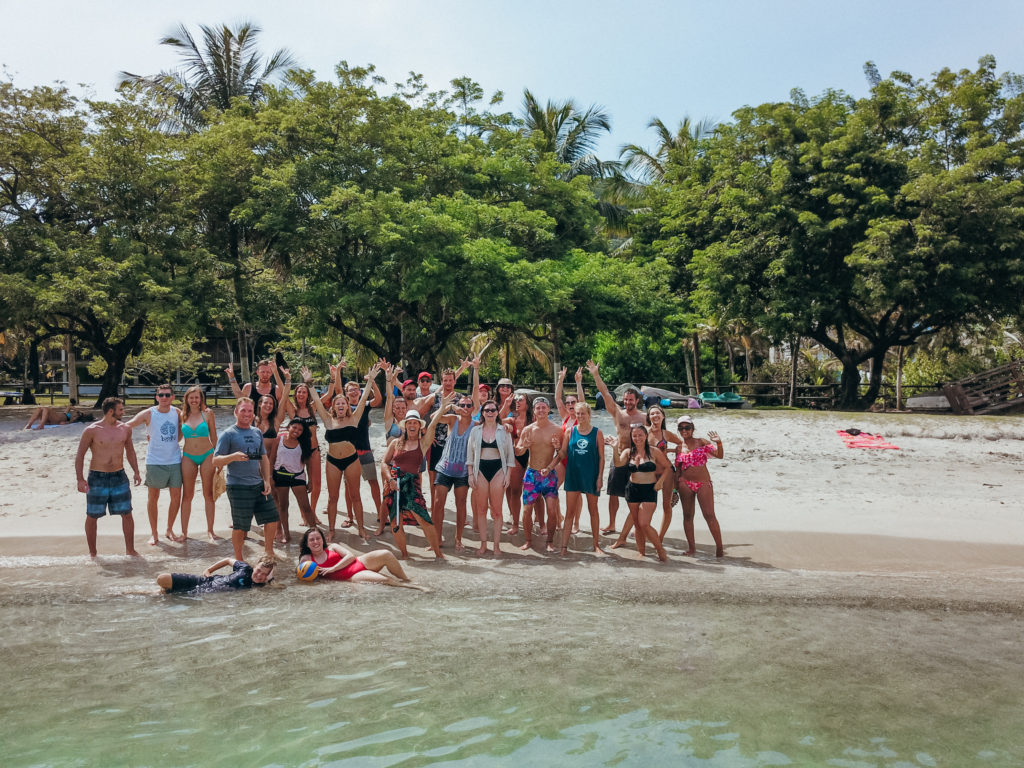
Near the end of the day, we got back on the boats and went to our final destination with San Blas Adventures, the town of Capurgana. This was a cute town, known for excellent scuba diving just off-shore in Colombia. Our group had one final dinner together, and then we were off on our separate ways (most were heading to Cartagena or Medellin the next day). There are several hotels and hostels in Capurgana, and it’s easy to book when you get there.
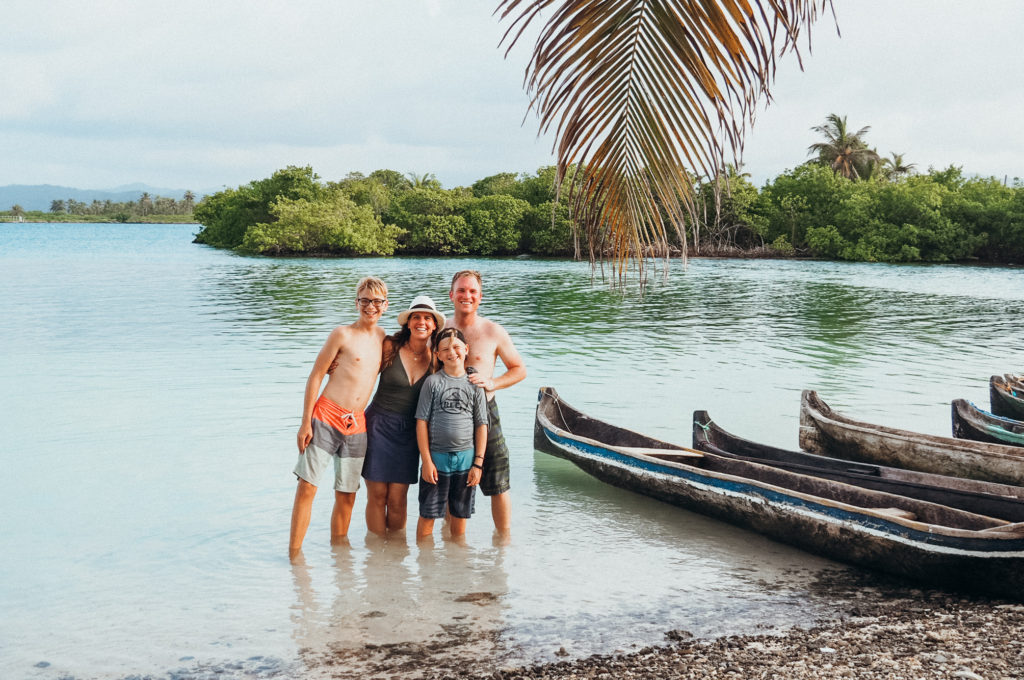
Some additional tips on what to expect and pack for a trip in the San Blas island hopping with kids:
1. Leave small children at home
Because of the nature of most trips in the San Blas (sailing or speedboat), we would highly recommend not bringing young/small children (unless you charter your own boat). One reason is you are with a group of adults, mostly backpackers in their 20’s, so it can get a bit rowdy at times. The other thing to worry about with young kids is you’re around water a lot making it more stressful if your kids aren’t 100% water safe and excellent swimmers. Also, you’re moving around a lot, making it a bit of a hassle with luggage and young children.
We suggest bringing mature kids 8 years old and up. Trust us, it will be a much more enjoyable experience for everyone!
2. Be prepared for rough seas
As mentioned earlier, the sea can be rough at times (especially if you sail), so if you get seasick easily, bring Dramamine or wear a motion sickness bracelet or patch. Even in the speedboats, there were a couple of days where the waves were pretty big making for a bumpy boat ride.
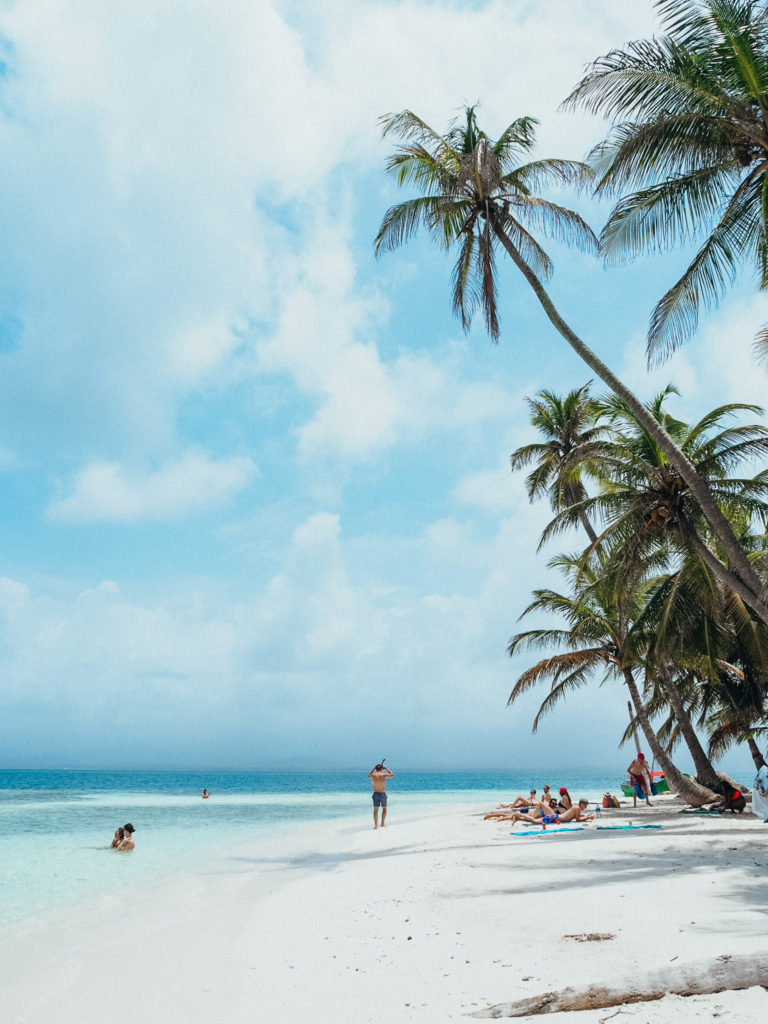
3. Expect rain sometimes
You’re in the tropics so did you expect perfect weather everyday? We went in the dry season and still had a couple of days of overcast skies and mild rain showers.
4. Pack minimally
You don’t need to bring a lot to the San Blas Islands. Most of the time you will just be wearing a swimsuit! The less you bring, the easier it is so pack around (remember you’re moving luggage on/off the boat everyday!). More on what to bring below.
5. Bring cash for tips, souvenirs and drinks
Your tour guides with San Blas Adventures (and I’m sure other companies too) will tell you this, but this is important. On the islands, you will need cash for drinks (other than water) such as coconuts, sodas, and alcohol. If you plan to buy souvenirs too, you will want cash. And of course, tips for the guides are always appreciated (but not required). We would recommend at least $50 USD per person.
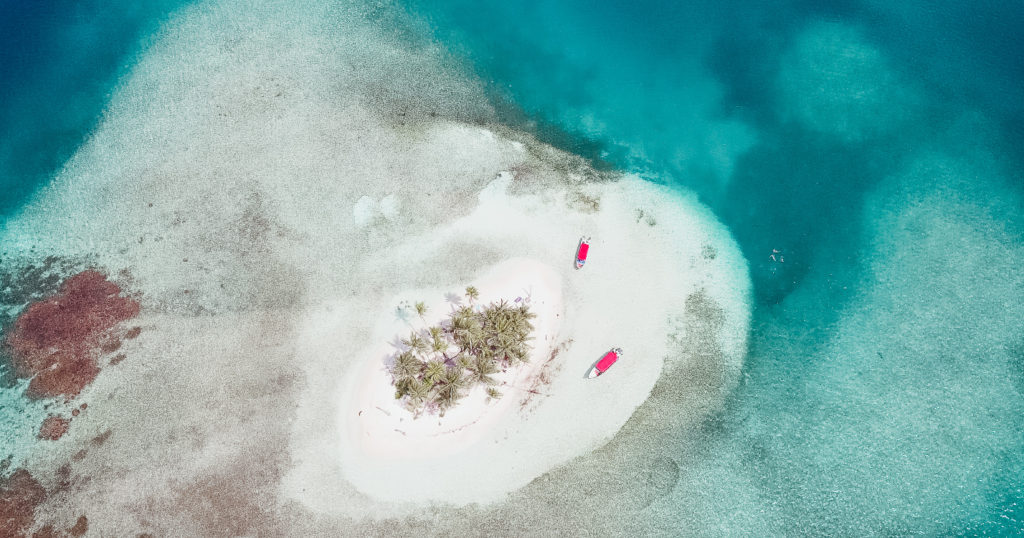
What to Pack
Here is a basic list of essentials to bring with you on your San Blas island hopping adventure:
2 Swimsuits
Lightweight, microfiber, quick-dry towel (one for each person)
2-3 Tee-shirts and shorts (you don’t need for everyday because most of the day you will just be wearing a swimsuit)
Pants and sweatshirt (for nighttime, but also to avoid bug bites from sand flies)
Sandals
Rain jacket
Light blanket (if you get cold easily sleeping)
Wide-brimmed hat
Sunscreen and insect repellent (we recommend reef-safe sunblock with the active ingredients of zinc oxide and/or titanium dioxide and bug spray with 30% Deet)
Toiletries (there are very basic showers and bathrooms/toilets on the islands)
Portable chargers/cords (for phones, cameras, etc)
Reusable water bottles
Passports
Cash (in small bills)
Handlamps
One of our all-time favorite adventures was island hopping through the San Blas Islands. It was such a unique experience and one we would highly recommend with older kids or without kids. If you have more time to spend in Panama, we would suggest combining this trip with 2-3 days in Panama City and a few days on the islands of Bocas del Toro.
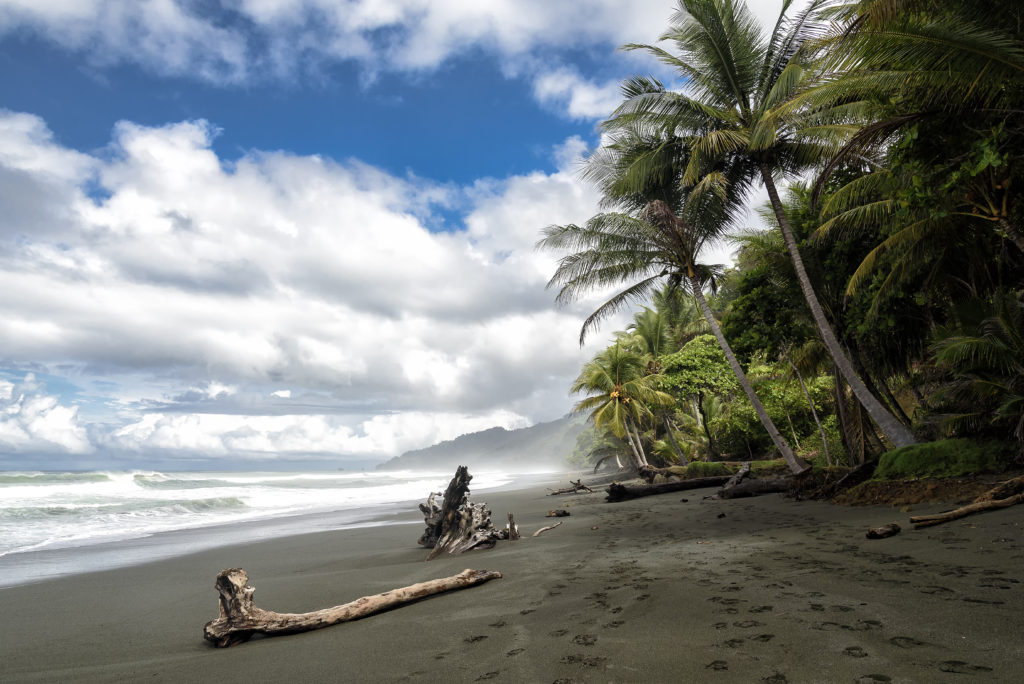
You could spend months in Costa Rica and not see it all. It is simply a country that begs to be explored and everywhere you turn, breathtaking beauty! From cloud forests to jungles, to volcanoes and mountains, to thousands of pristine beaches, Costa Rica is one of our all-time favorite adventure destinations. It’s also a country of immense biodiversity making it a must if you love wildlife and exotic plants. One of the best places in all of Costa Rica to see wildlife, as well as the country’s most beautiful landscapes is the Southern Pacific Coast. And for that reason, we’ve come up with the most epic 10 day itinerary on Costa Rica’s Southern Pacific Coast.
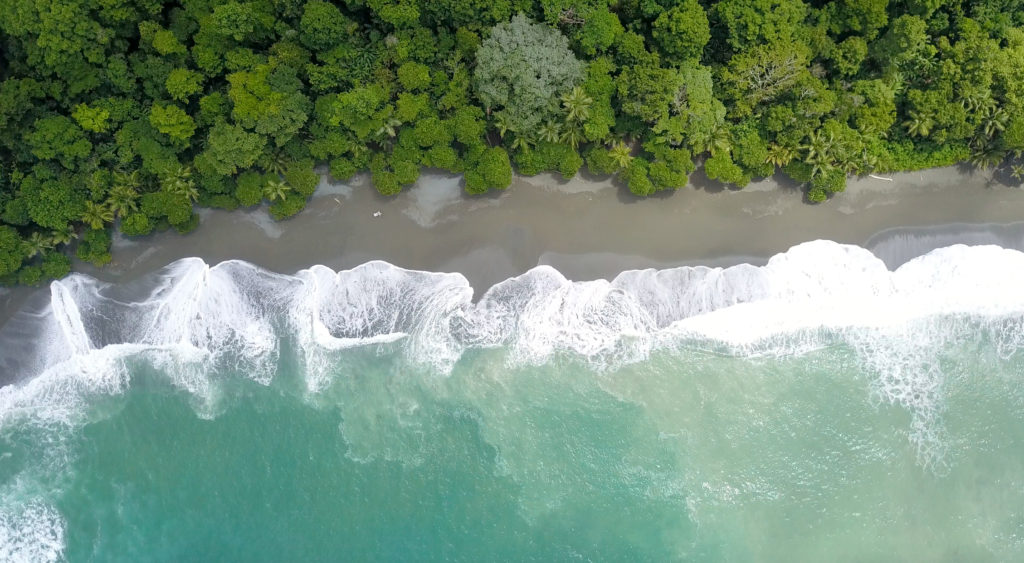
The age old debate: When is the best season to go to Costa Rica? Even though the dry season is the most popular time of year to go (between Dec-April), we actually prefer the early wet or “green” season. Why? Lower prices, less tourists, and more opportunities to see wildlife. Not to mention, it’s more lush and green.
The wet season in Costa Rica is between June-Nov, however the wettest months are generally Aug-Oct. If you go in June, July or even November, most likely you will get rain, but the good news is it rarely rains ALL day. An afternoon shower here or there, or evening thunderstorms are common, but it’s not the constant downpour everyday that you often get in August, September or October.
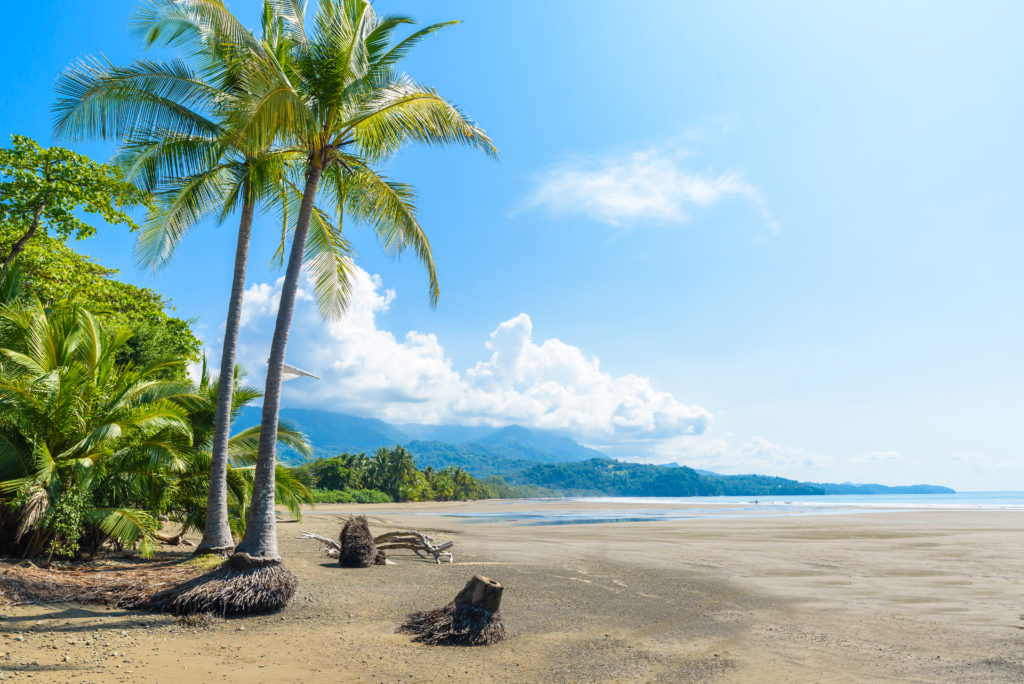
The Southern Pacific coast of Costa Rica is normally considered from the region of Quepos/Manuel Antonio down to the Osa peninsula. We prefer to stay in Uvita because here you are about half way between both Quepos and Osa, plus it is less busy than the popular Manuel Antonio area.
Uvita is a place where the mountains meet the ocean. It is a region of immense and untouched beauty, wildlife and plenty of adventure. We would recommend staying at Vista Celestial Boutique Hotel, which is about a 20 min drive up the mountains from town, but worth it for the views, the serenity and opportunities to see wildlife. We saw several toucans, koatis, monkeys, and butterflies.
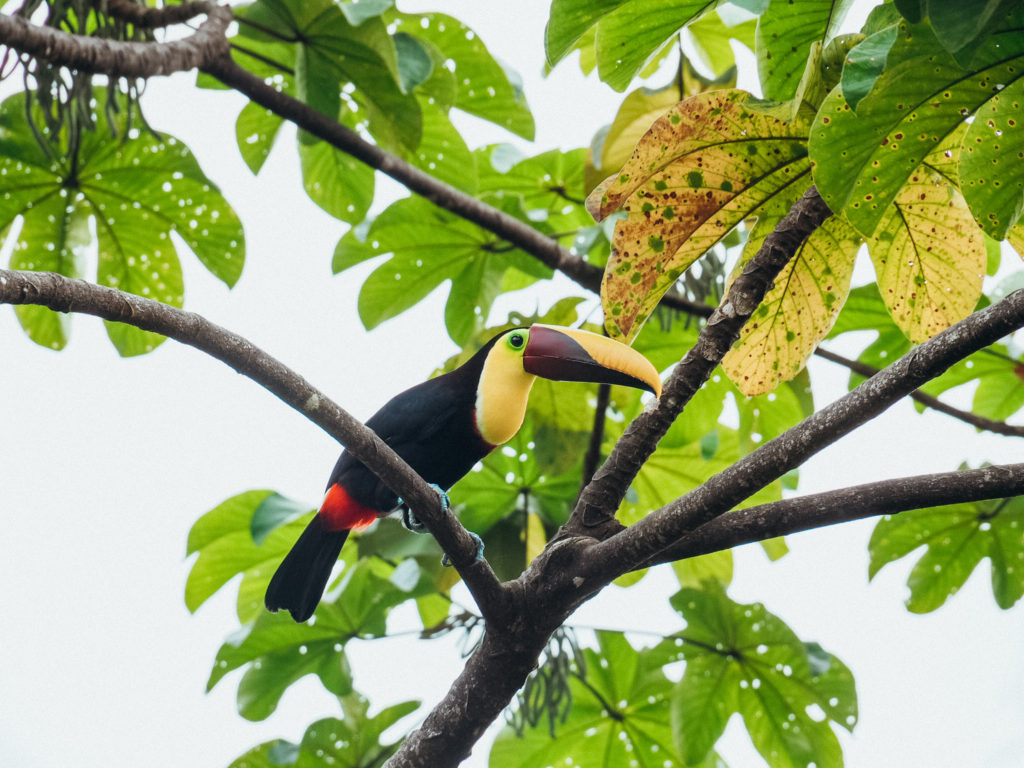
Vista Celestial is a small boutique-hotel focused on the eco-conscious traveler, the yogi, or just the person looking to get away from it all. We loved the personalized service that Vista Celestial offers–with only 6 villas, the staff really goes out of their way to give you the best care. The food was delicious, the pool and hot tub was perfect after a long day adventuring, and the villas were absolutely stunning–all offering views that look out over the Pacific Ocean and the surrounding mountains and rainforest.
If you love hiking, Vista Celestial has several short trails to explore from the property, our favorite was to a waterfall. Vista Celestial also offers an outdoor yoga studio that overlooks the rainforest so you can come do some yoga in this beautiful, quiet place. We loved that this property was also family friendly and the kids loved especially loved swimming in the pool and jumping off the rocks.
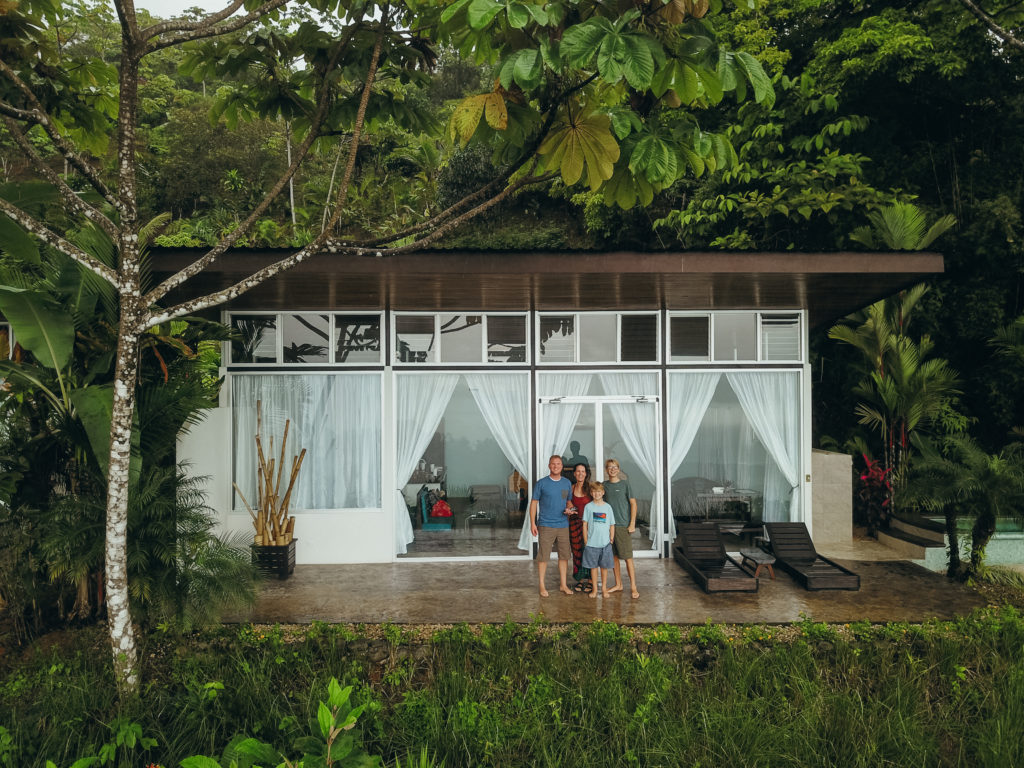
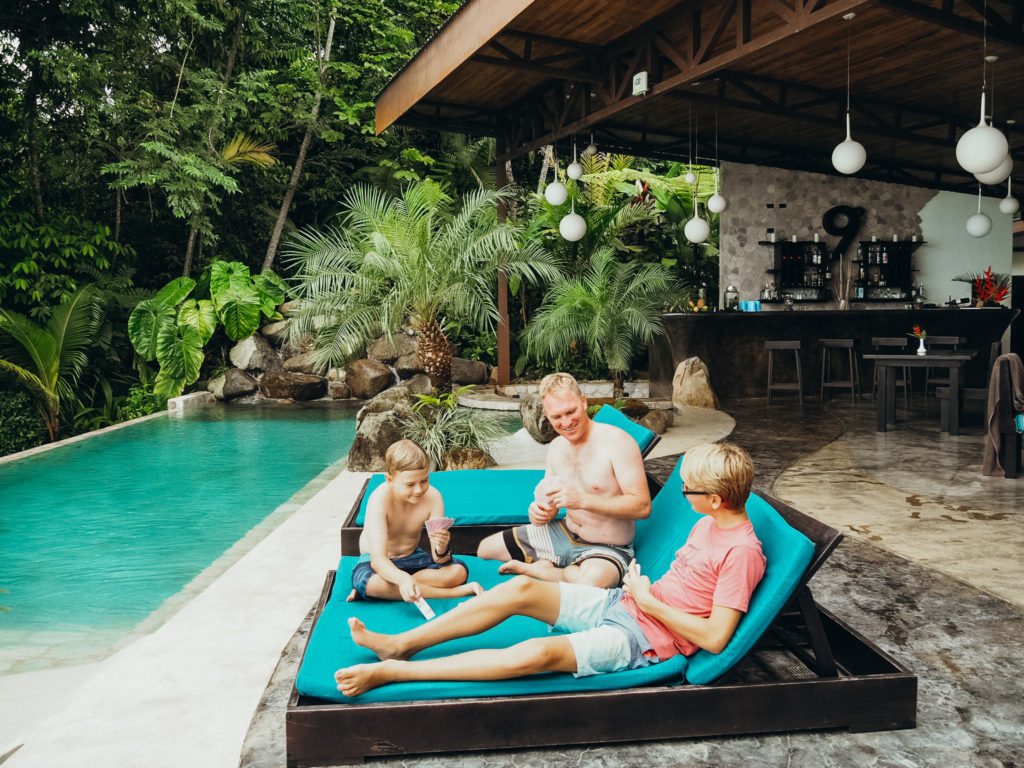
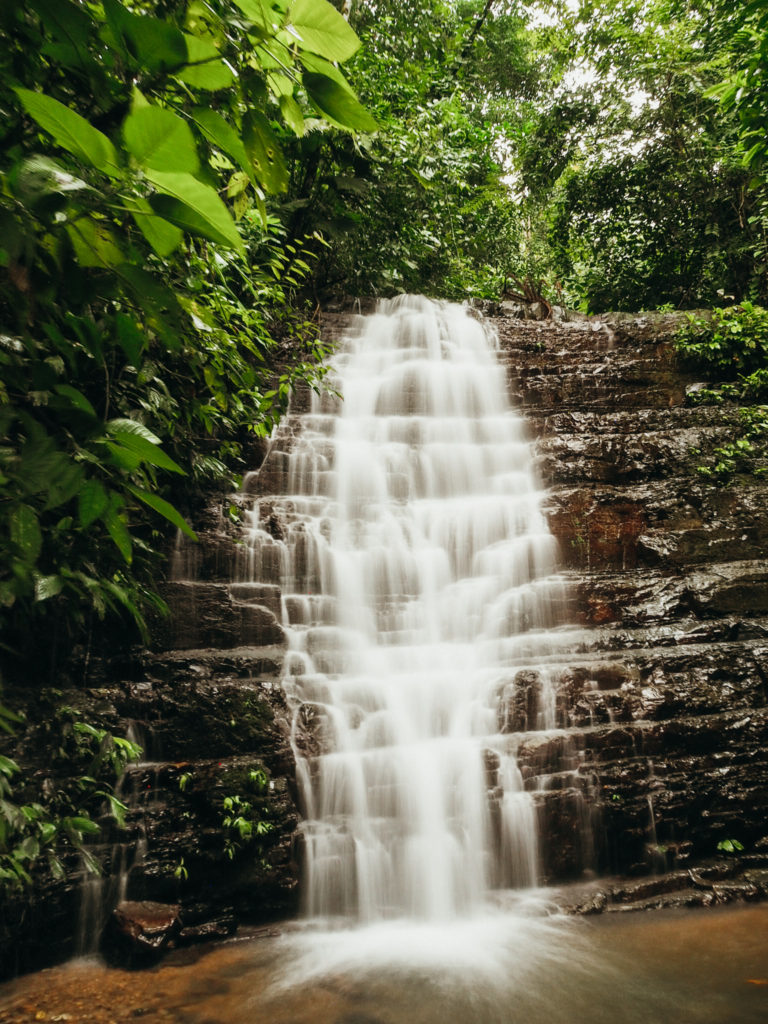
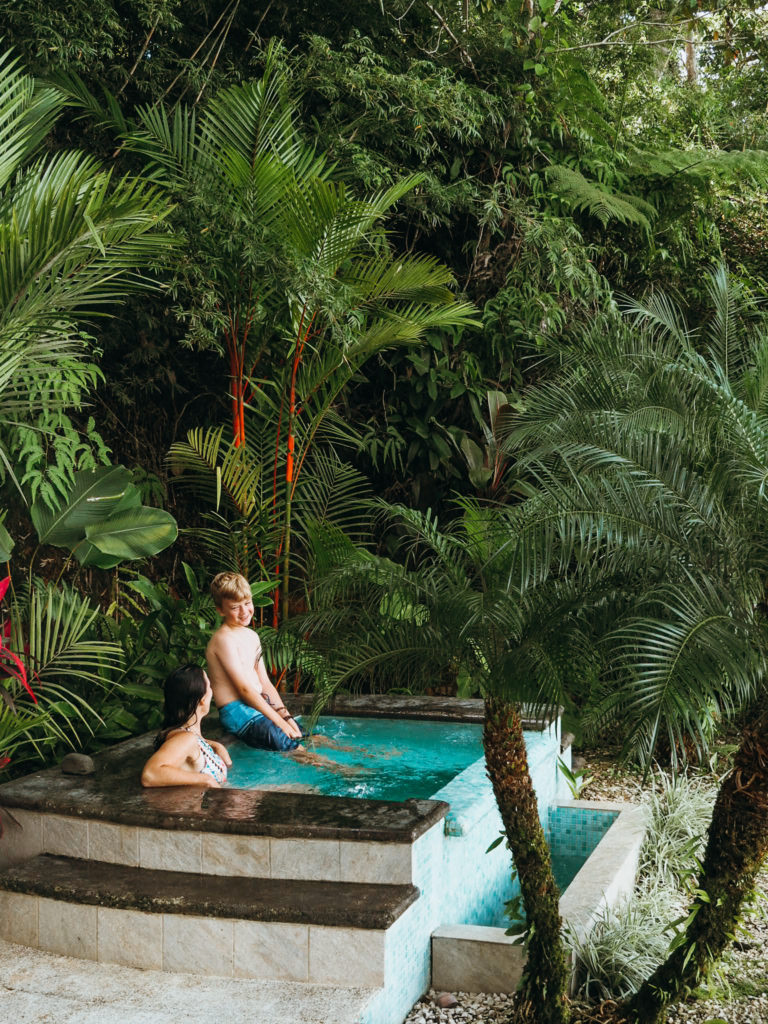
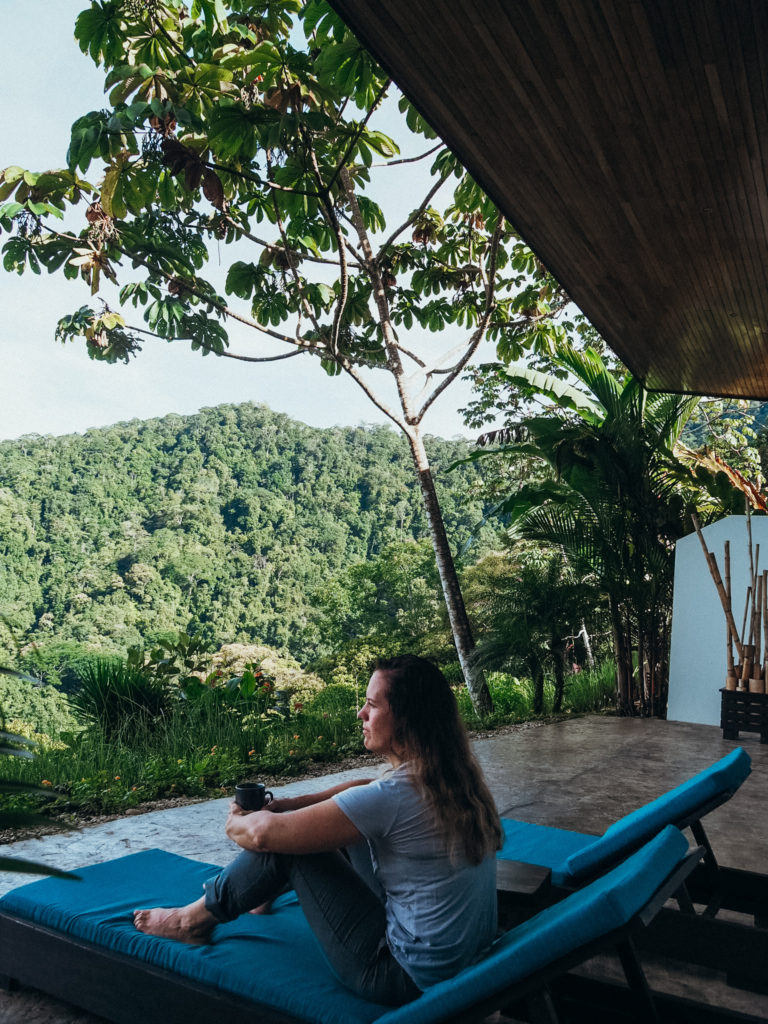
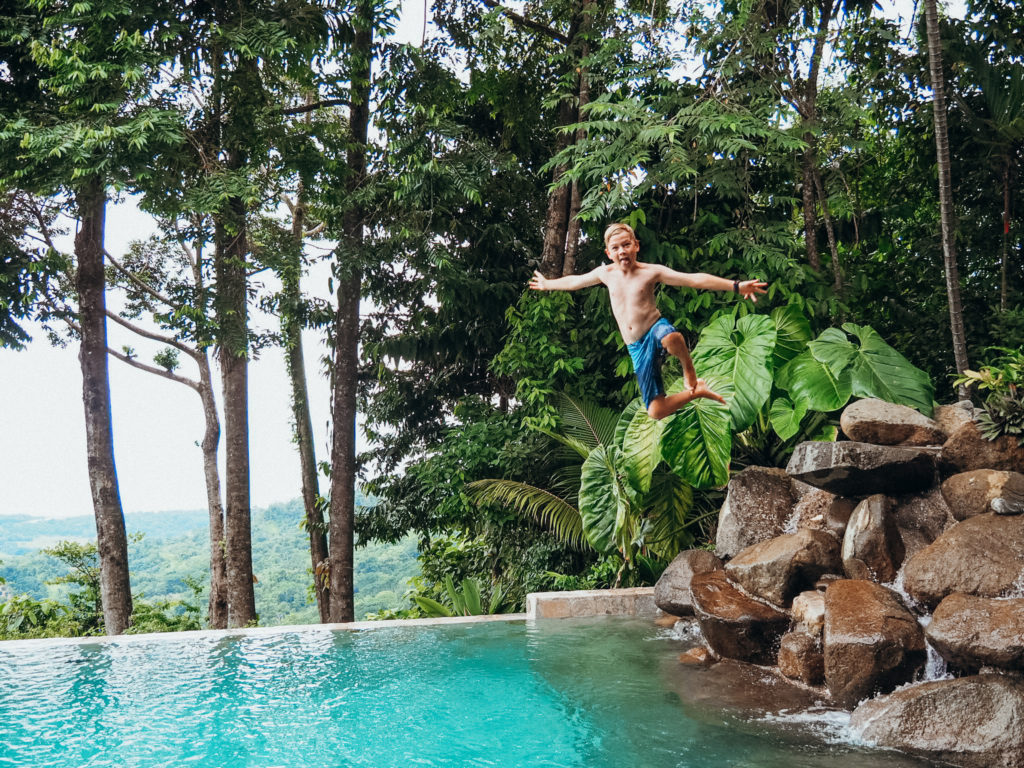
We would recommend spending 5-6 days in Uvita and then the remaining 4 days on the Osa peninsula near Corcovado National Park at El Remanso Rainforest Wildlife Lodge. Staying at El Remanso is such an adventure, as you are in a remote area of Costa Rica. Yet it is one of the most incredible places on the planet for witnessing Corcovado, home to 5% of the world’s biodiversity (pretty amazing considered it’s a small national park!).
El Remanso is located on the southwestern tip of the Osa peninsula, an hour’s drive down a dirt road from the closest town, Puerto Jimenez. You might question if it’s worth the bumpy ride to El Remanso (we warned you, it’s remote!), however as soon as you enter the property, you will quickly be reassured that you are in the right place. It is simply a unique experience!
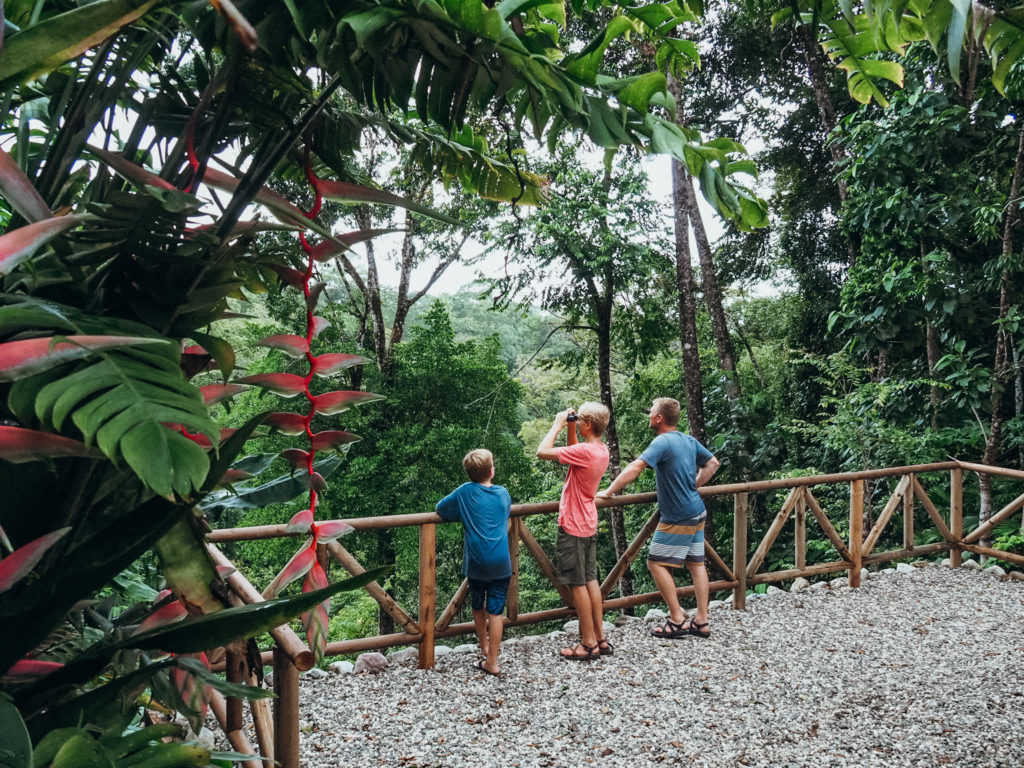
One of the best things about staying at El Remanso is that you are located on the Osa peninsula near Corcovado National Park, which is world-famous for it’s wildlife. Because of the close proximity to the park, there is no shortage of incredible wildlife found right on the property of El Remanso. We witnessed dozens of scarlet macaws and other birds, 4 types of monkeys, sloths, frogs, snakes and others.
We love that El Remanso is all about sustainability in everything they do and they take great care in ensuring that the guests can get the most out of their stay there. Meals are included in your visit here (since the closest town is an hour away), and it was one of our favorite things about staying at El Remanso. Every meal you had a choice of 3-4 options and all of them are top-notch and delicious.
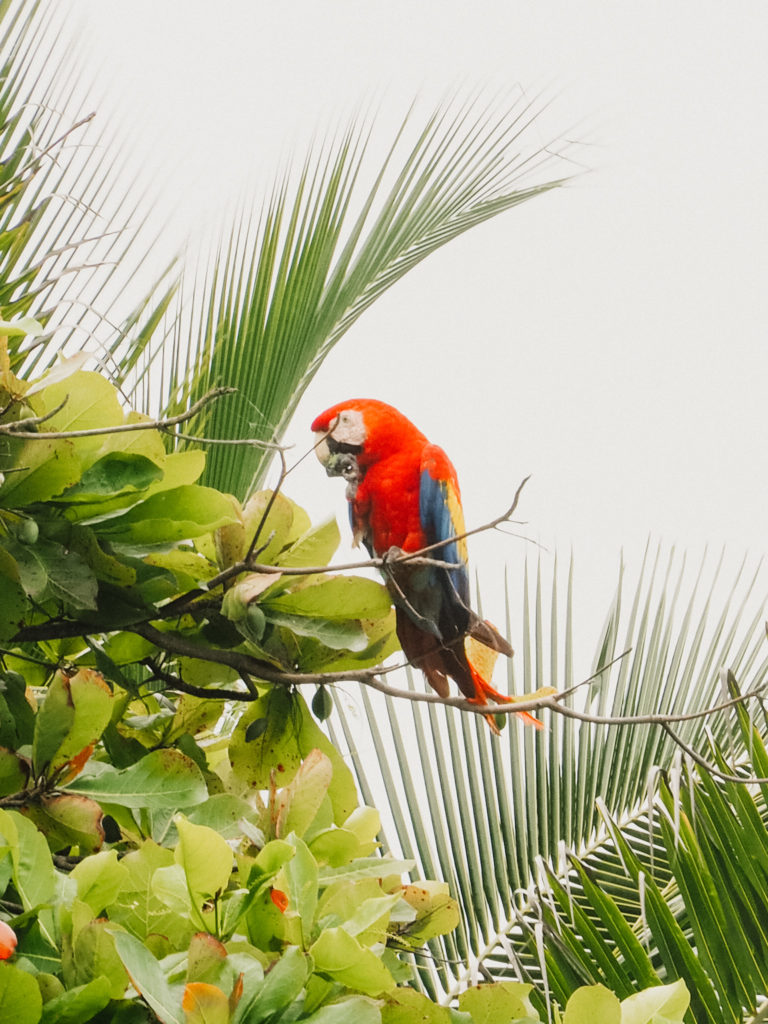
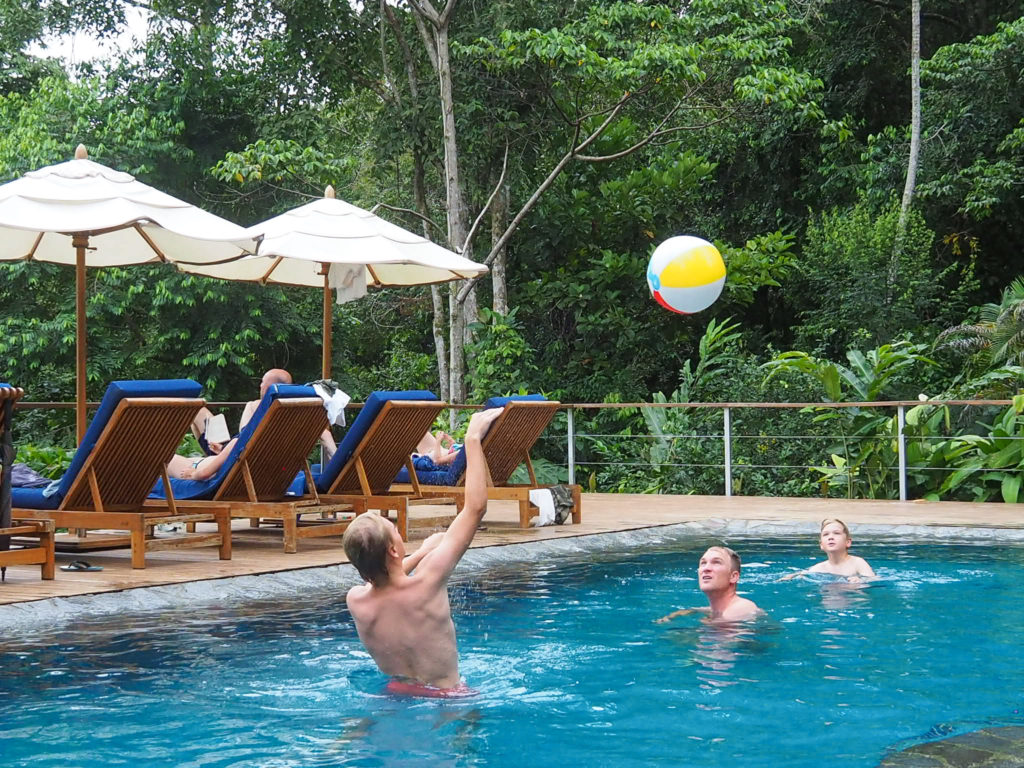
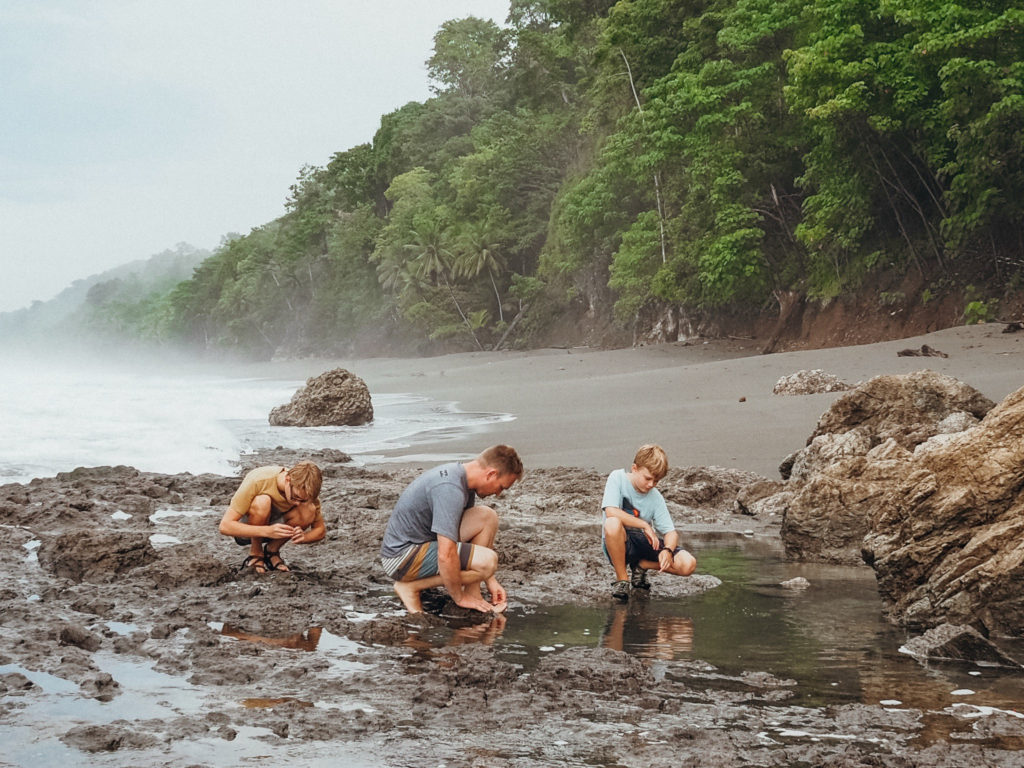
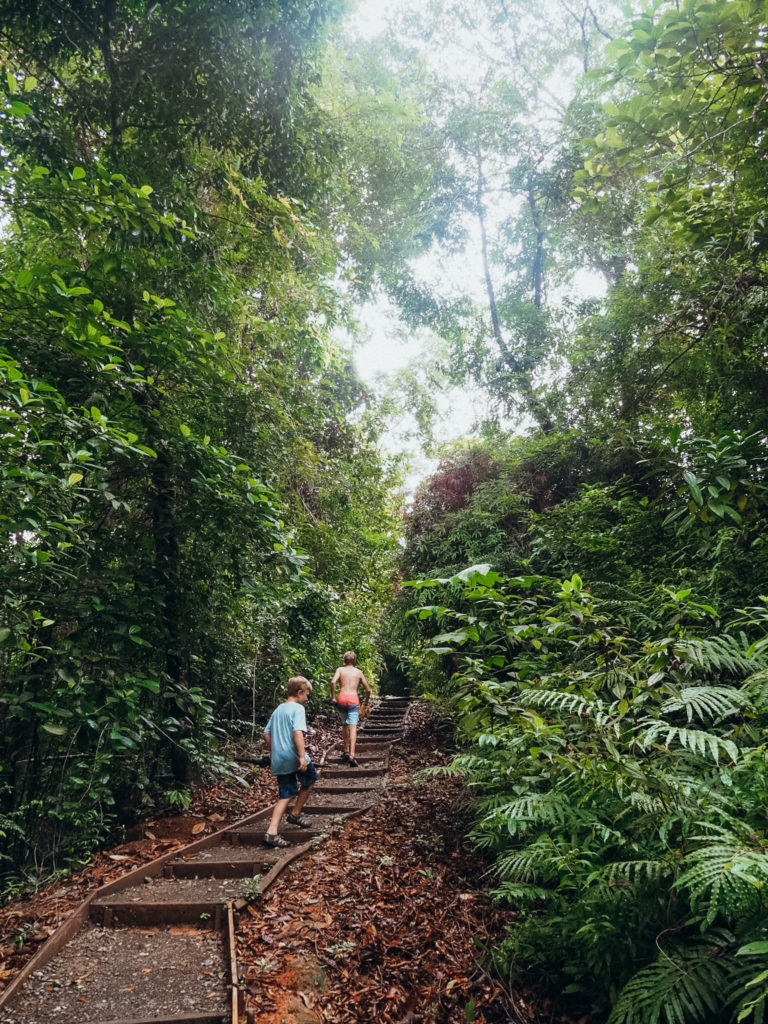
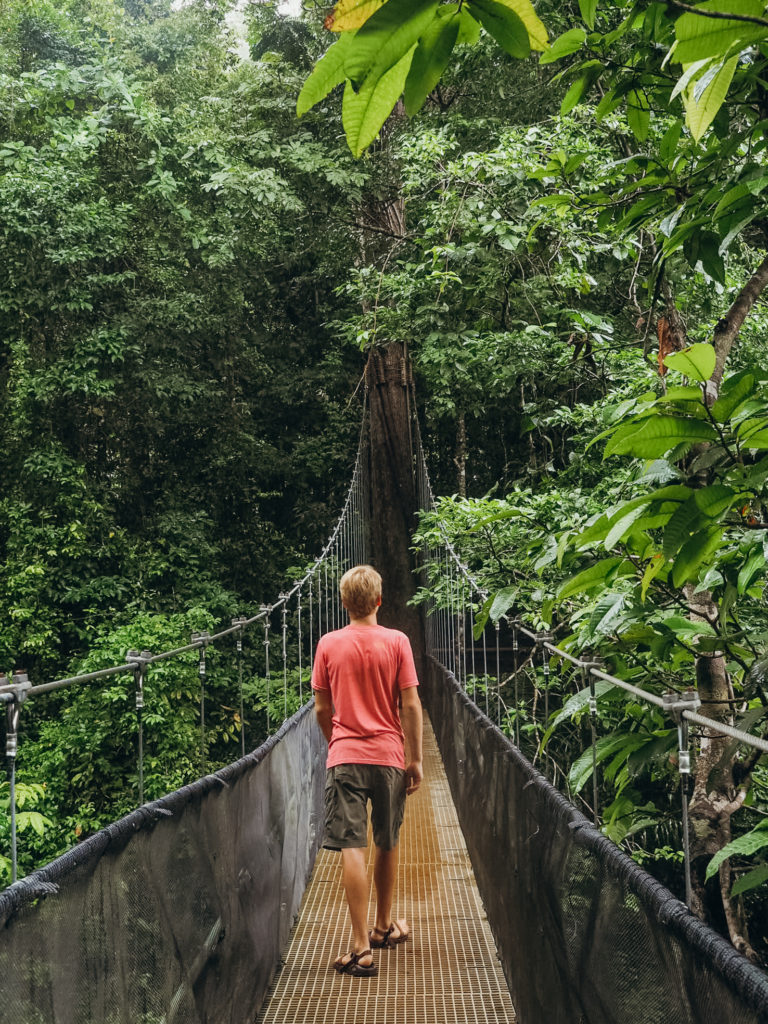
All the villas at El Remanso are beautiful with views of the jungle and even some of the ocean. There are dozens of hiking trails to explore on the property at El Remanso to the beach and tidepools, to waterfalls and creeks, and even to hanging bridges. Yes, El Remanso has their own hanging bridges! The gardens and pathways through the property are stunning and prime for spotting wildlife. There is a pool for relaxing and swimming, and each villa has their own plunge pool. The staff is super friendly, and all made it a point to know our names on the first day.
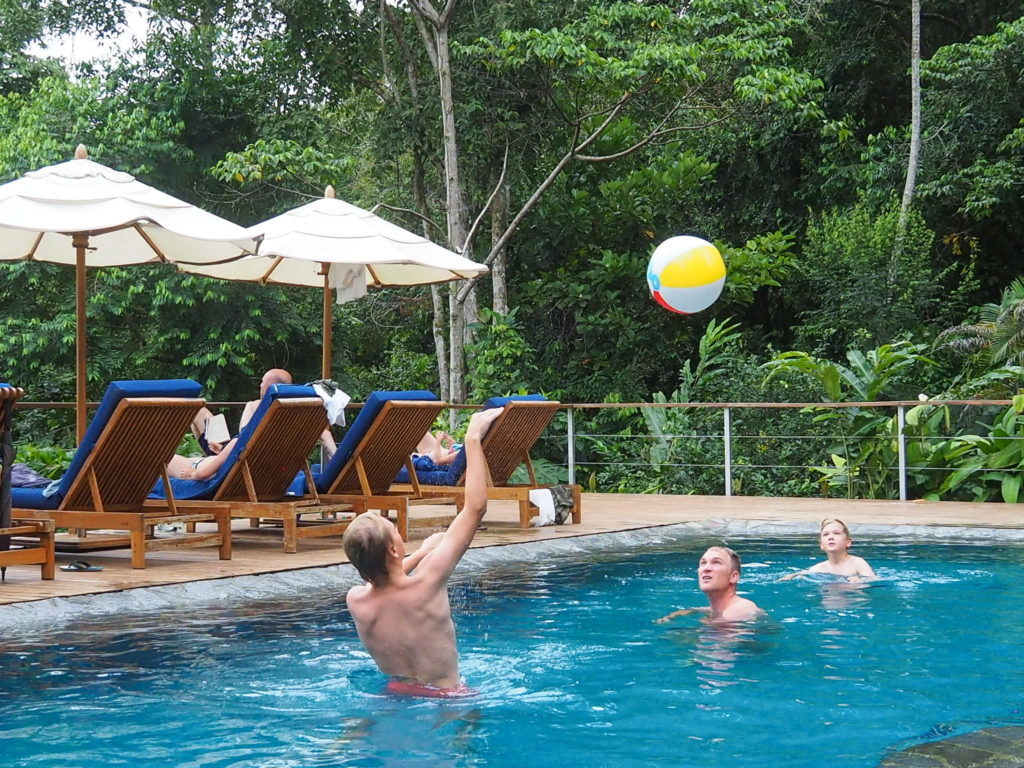
One more note about El Remanso: they offer on-site guided tours like night hikes (our kids’ favorite!), rappelling off waterfalls, zip lining, and more. They also can coordinate guided trips and/or transportation to Corcovado National Park. Normally, we aren’t the kind of people that hang out at the resort, but at El Remanso we didn’t ever want to leave! This is one place we would return over and over again.
Since San Jose is the main airport in Costa Rica, this is where you will most likely fly in to. From there, to get to the Southern Pacific coast, you have a few options. The first method (the quickest and most expensive) is to take a puddle jumper flight with Sansa Air into Quepos/Manuel Antonio and then rent a car (in Quepos) and drive to Uvita (about an hour south).
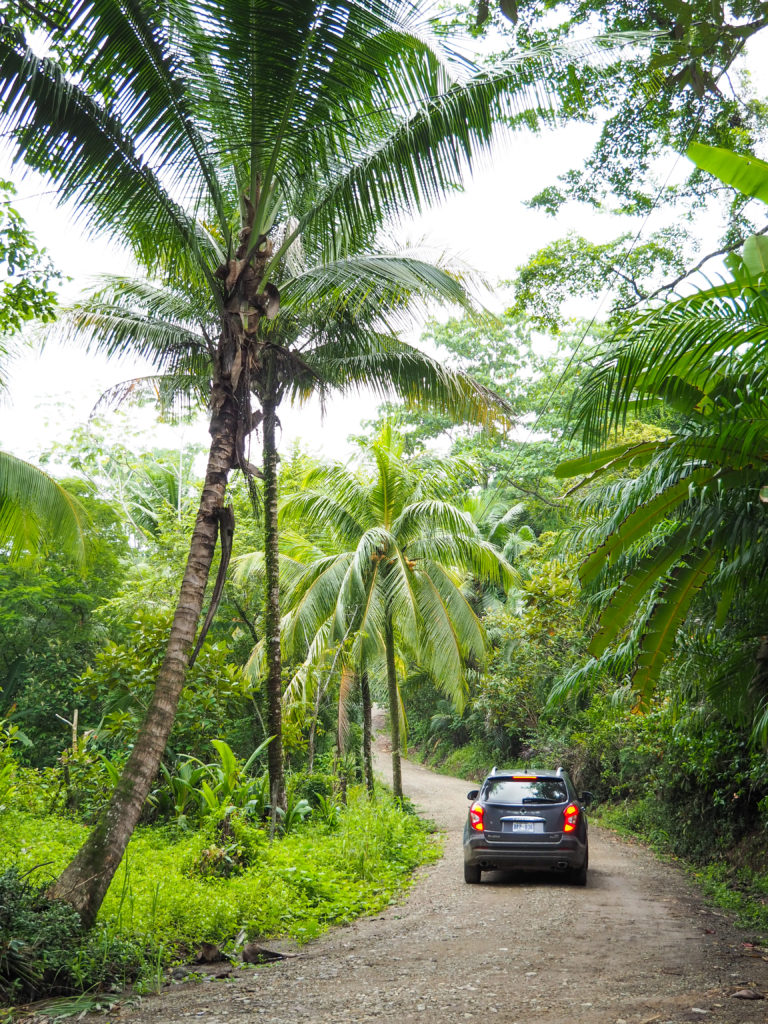
The second option is to rent a car in San Jose with our preferred Costa Rican rental company, Vamos Rent-a-Car. (Trust us, you will NEED a car to get around!). From San Jose to Uvita, it’s about a 4 hour drive.
If you’re not keen on driving from San Jose to Uvita, the last option is to take Interbus, a shared transportation service from San Jose to Uvita. Once in Uvita, you can rent a car there and get to the Osa peninsula. And again, make sure you get a 4 X 4 as many of the roads in Costa Rica require it!
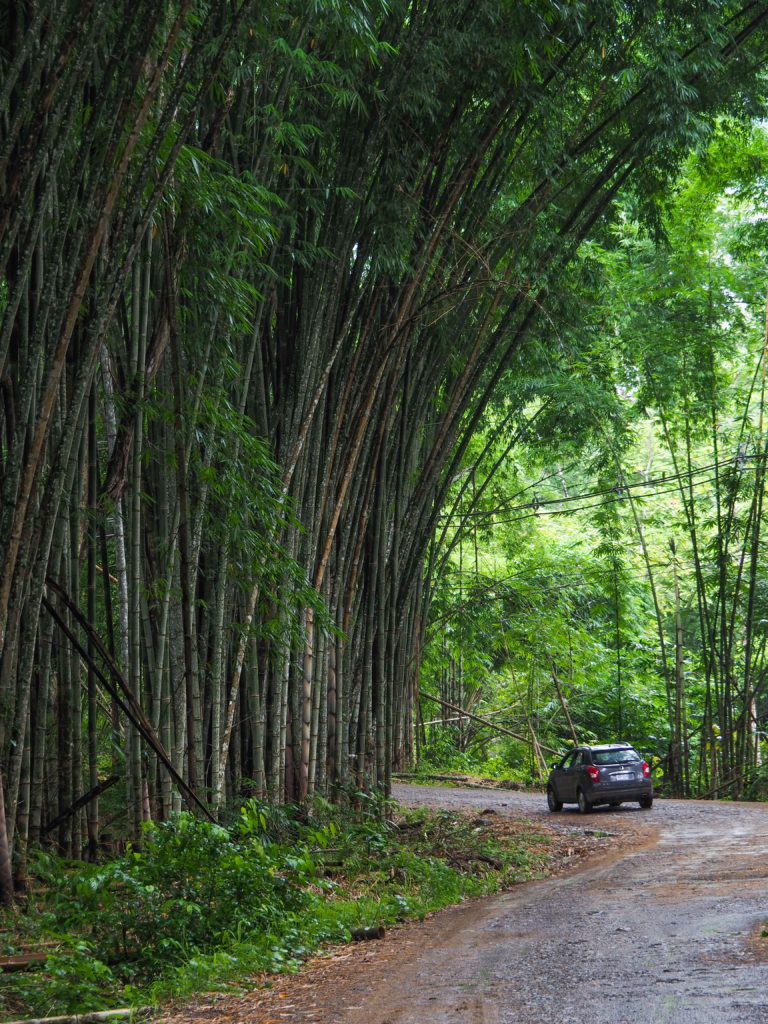
Assuming you have at least half a day to relax and settle in once you’ve arrived to Uvita, this would be your first FULL day. And since you’ve just spent a day (maybe more) traveling to Costa Rica, this first day won’t require traveling far nor doing anything too rigorous.
Marino Bellena National Park, located right in Uvita is a beautiful national park that covers an extension of 171 land hectares and 5,375 sea hectares. It is named after the humpback whales that migrate here from mid-July to October, and then again in December through March from feeding and mating grounds in the north and south hemispheres to the warm tropical waters of Costa Rica.
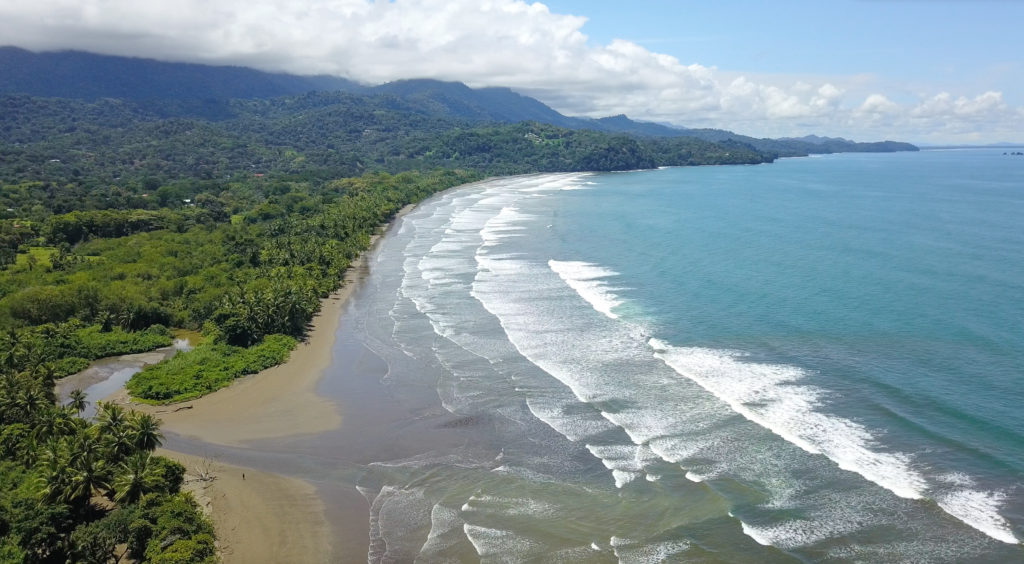
Admission to the park is $6 for foreigners and there are lots of ways to explore Marino Bellena, however there is one thing you have to do here. And that is to walk out to Punta Uvita aka the “whale’s tale” (a giant sandbar) at low tide. Bring your snorkel gear (or rent right inside the park) because Marino Bellena has lots of great marine life and coral reef. Or if you prefer to take it easy, you can always just bring your beach towels and a picnic lunch and enjoy the beautiful, long stretches of beach inside the park.
Some other options of things you can do inside Marino Bellena National Park is book a sea kayaking tour where you will surf the waves and get to snorkel around the whale’s tale. During whale season, you can also book a whale or dolphin watching tour.
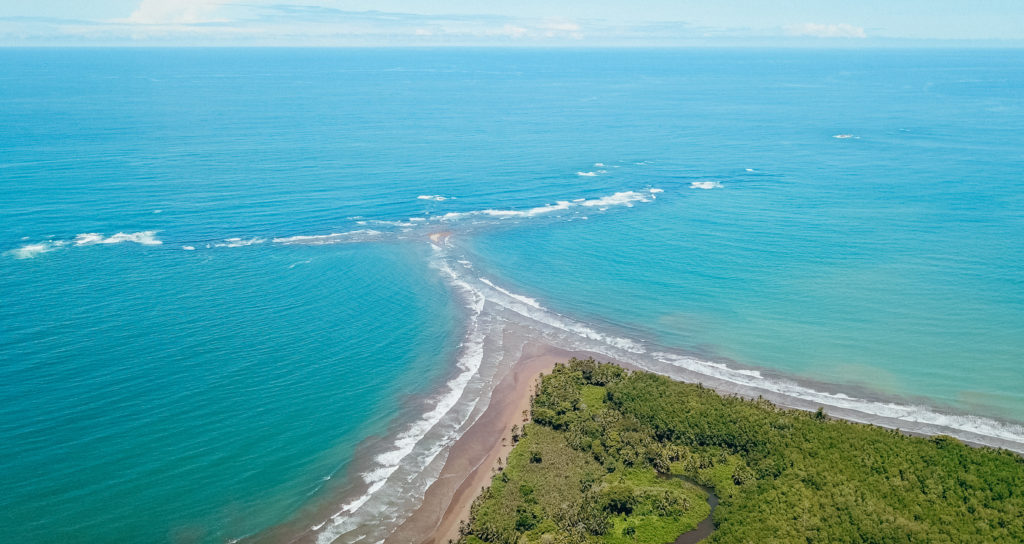
Nauyaca Falls is ONE sight you do not want to miss if you come to the Southern Pacific coast of Costa Rica. Located in Dominical, about a 40 min drive north from Uvita, these falls will take your breath away. We’ve been twice and each time was different and just as amazing. We’ve seen dozens of waterfalls in Costa Rica, but Nauyaca Falls tops the list.
There are actually two falls–Upper and Lower, with the lower falls consisting of a pool you can swim in (unless it has just rained and the current is too strong). Since Nauyaca Falls is located on private land, you have to pay an admission fee to hike there (6 miles round trip), but there are two other options to visit these breathtaking falls. Cost to hike on your own is $9/person.
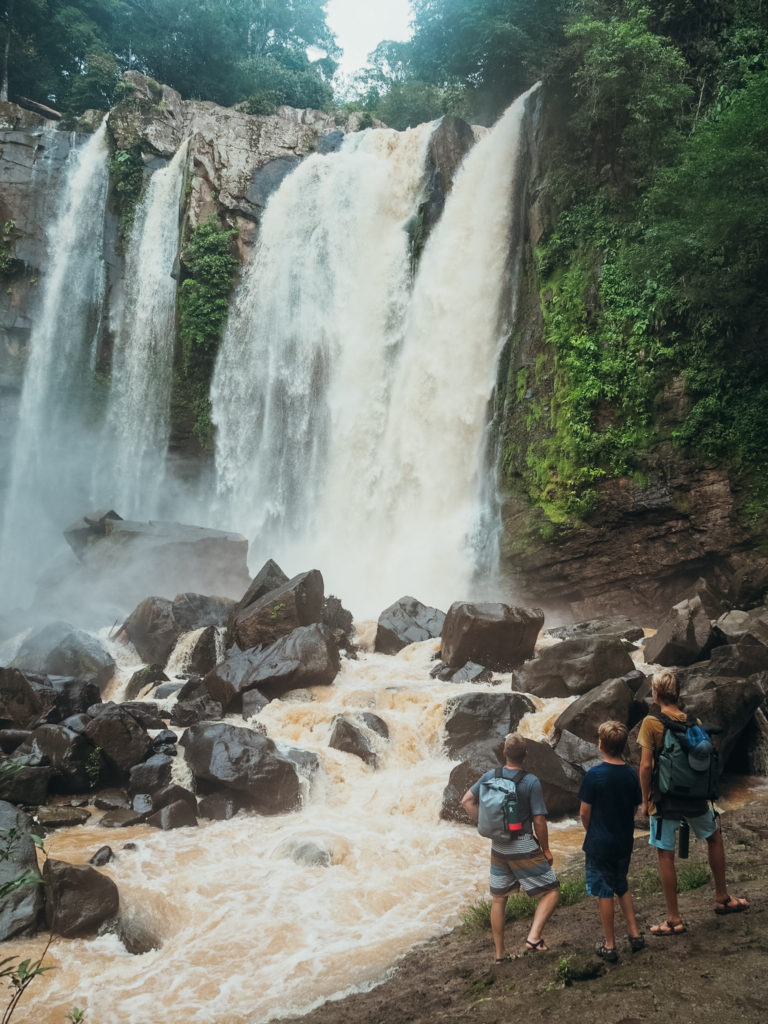
The most expensive way to get to Nauyaca Falls, but perhaps the most memorable (especially with kids) is to do the horseback tour to the falls. It’s a full day tour starting with breakfast on the property, a ride to the falls where you will spend an hour swimming and jumping off the rocks, and then lunch before riding back to the parking lot. Cost is about $79/person which includes two meals, the horse, and the guide. Worth every penny! Make sure to make reservations ahead of time, space is limited and fills up.
The last option is to take a truck ride up to the falls. This is a good option if you don’t want to pay the price for the horseback tour, and you don’t want to hike. Cost is about $32/person.
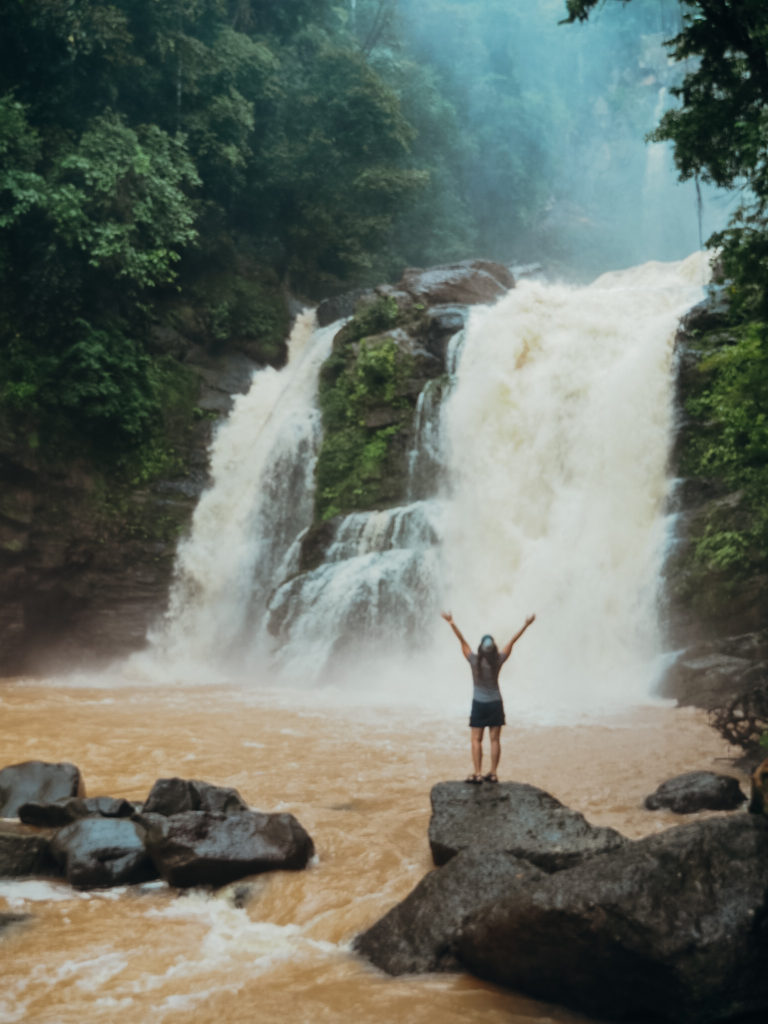
Cano Island is known as the best snorkeling in all of Costa Rica with gorgeous, pristine reef and virgin, turquoise waters, It is home to a spectacular variety of stunning marine flora and fauna and is famous for having Costa Rica’s largest concentration of coral-building organisms along the Pacific Ocean. With fantastic underwater visibility, you have opportunity to observe and swim alongside sea turtles, dolphins, stingrays, manta rays, moray eels, barracudas, tuna, snapper, parrot fish, puffers and more.
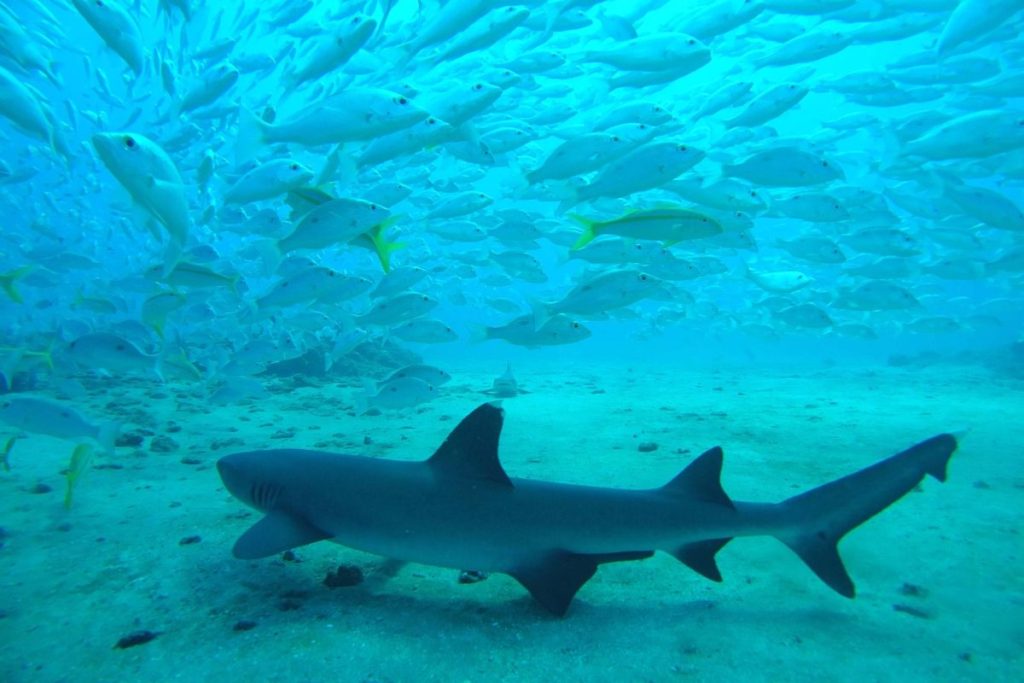
The Cano Island snorkeling excursion is an all-day adventure, starting with a 1.5 hour boat ride from Uvita. Cost is about $145/adult and $90/child (10 and younger). You won’t regret this underwater experience!
After 3 fun-filled, action-packed days, a relaxing beach day is in order. There are lots of great beaches worth visiting right in Uvita such as Playa Hermosa, Uvita Beach (great for surfing), Playa Ventanas (there are some cool caves here best to explore at low tide) and Playa Arco. This beach requires a hike to get to, but you’ll find hardly anyone here and one of the most beautiful beaches in the Southern Pacific Costa Rica coast.
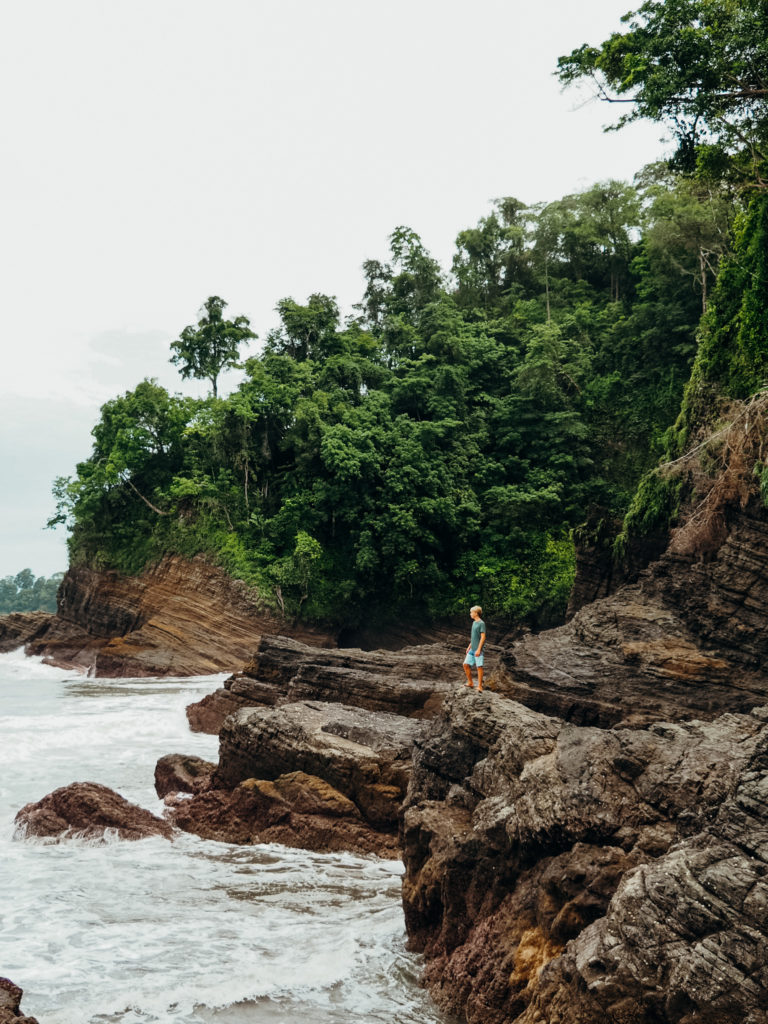
If you are willing to drive a bit north of Uvita, other note-worthy beaches worth visiting are near Manuel Antonio National Park such as Espadilla (and Espadilla Sur–our favorite), Escondido, and Playa Biesanz. All beautiful and unique beaches. Stay until sunset and then stop for dessert at Emilio’s Cafe in Manuel Antonio (get the passion fruit pie!). Make sure to read our blog post on other activities to do in the Manuel Antonio area.
There are lots of waterfalls around Uvita and the Southern peninsula, and one that is definitely not to be missed! Uvita Falls, located not far from town is a short, easy hike to get to and one that you could easily spend a whole afternoon at. Besides a 30 foot waterfall that also doubles as a natural waterslide (trust us, it’s safe!), there are also pools along the river to swim in (with platforms to jump from too!). Cost is about $1/person.
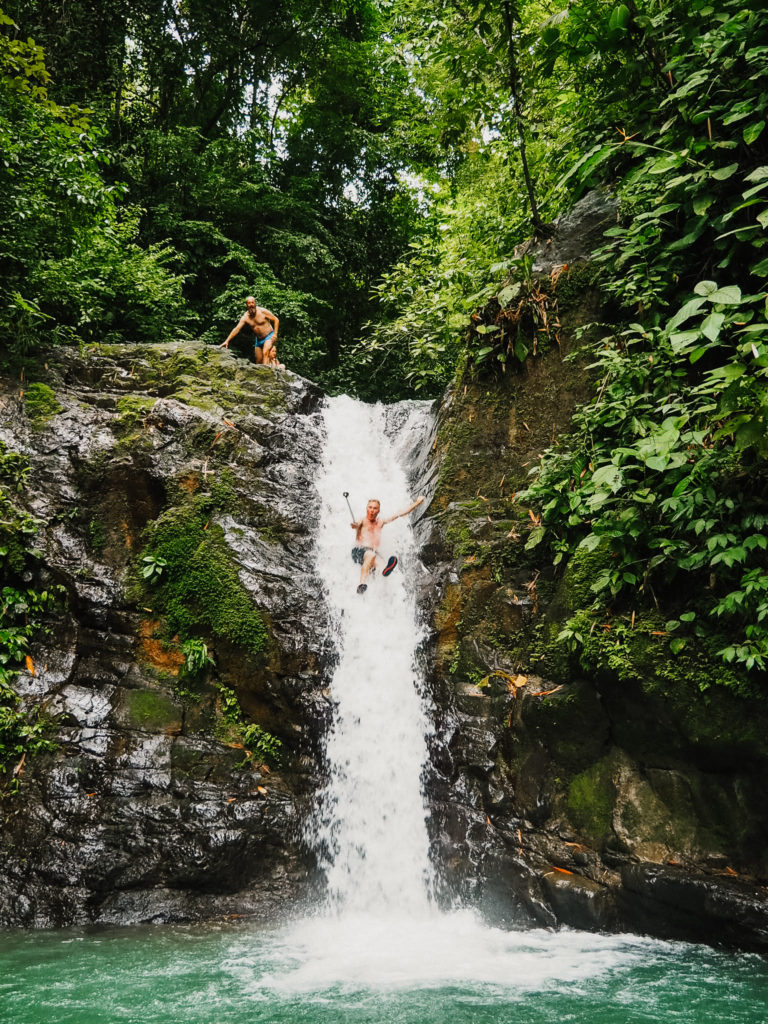
Another waterfall worth visiting not far from Uvita Falls, is Secret Falls (at least that’s what the locals call it). You can find these falls a few miles past the bamboo forest in Uvita. *Note: If you come in the wet season, this road might not be passable in a vehicle, meaning you have to opt to hike to it. The great thing about these waterfalls though is hardly anyone knows about them, so there’s a good chance you will this oasis to yourself.
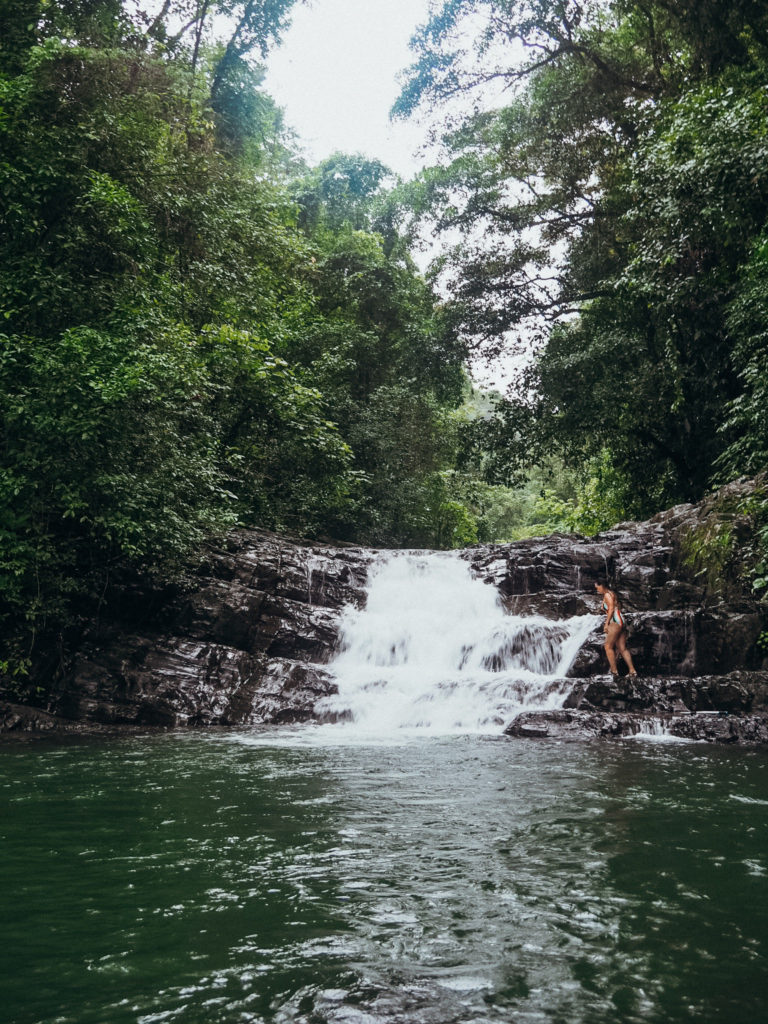
If you’re looking for more of an adventure, consider going canyoneering with Costa Canyoning for an unforgettable day rappelling off waterfalls in the jungles of Uvita.
This will be the day you leave Uvita and head south toward the wild Osa peninsula. From Uvita to Puerto Jimenez, it’s about a 2.5 hour drive and then depending on where you stay, perhaps another hour from there. We recommend staying at El Remanso (mentioned earlier) because it is here you will be able to really experience the magic and remote-ness of this incredible peninsula, while also being in close proximity to Corcovado National Park.
The drive in getting to El Remanso is quite the adventure, but keep your eyes peeled because there’s a good chance you will see wildlife along this road such as scarlet macaws, monkeys, sloths, and even whales. Spend a day soaking up the nature and views at El Remanso. You could also go for a short hike, walk the hanging bridges, or relax by the pool.
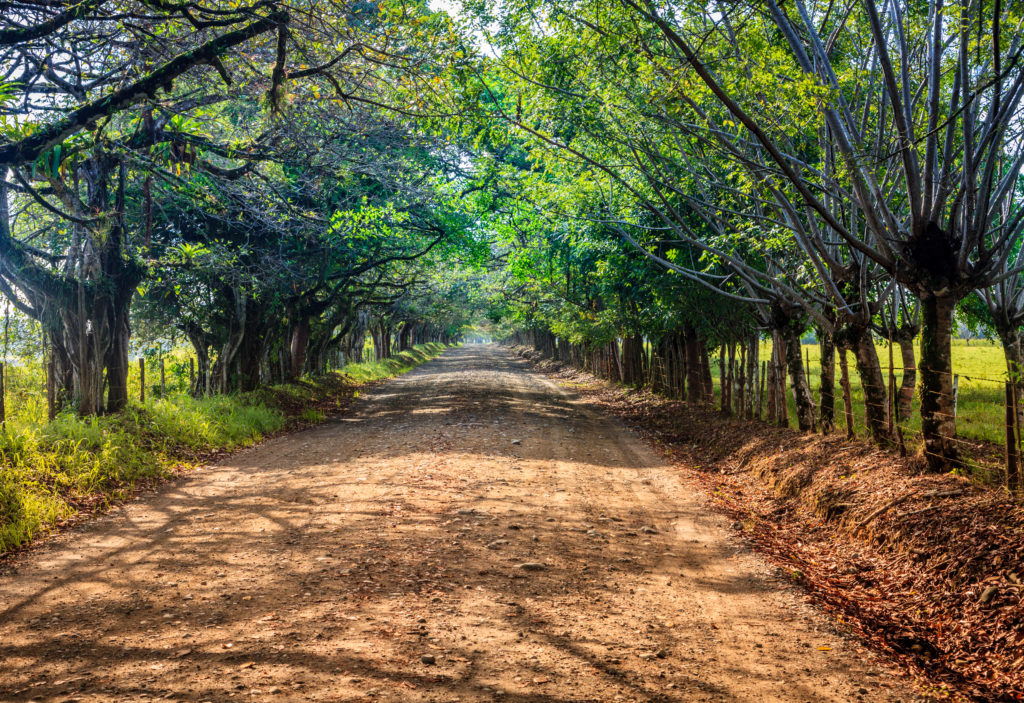
If there is one thing that will make your trip most memorable while visiting Southern Costa Rica’s Pacific coast, it is Corcovado National Park. This place has it all and is truly a feast for all the senses. Wild and rugged, stunningly beautiful and untouched, Corcovado offers you the rare opportunity to witness so many species of wildlife (many native to this region of Costa Rica) so up close and personal. In the two days we we spent trekking through Corcovado, we saw 2 tapirs, 4 kinds of monkeys (spider, howler, capuchin, and squirrel), over 20 types of birds, snakes, poisonous frogs, coatis, anteaters and more.
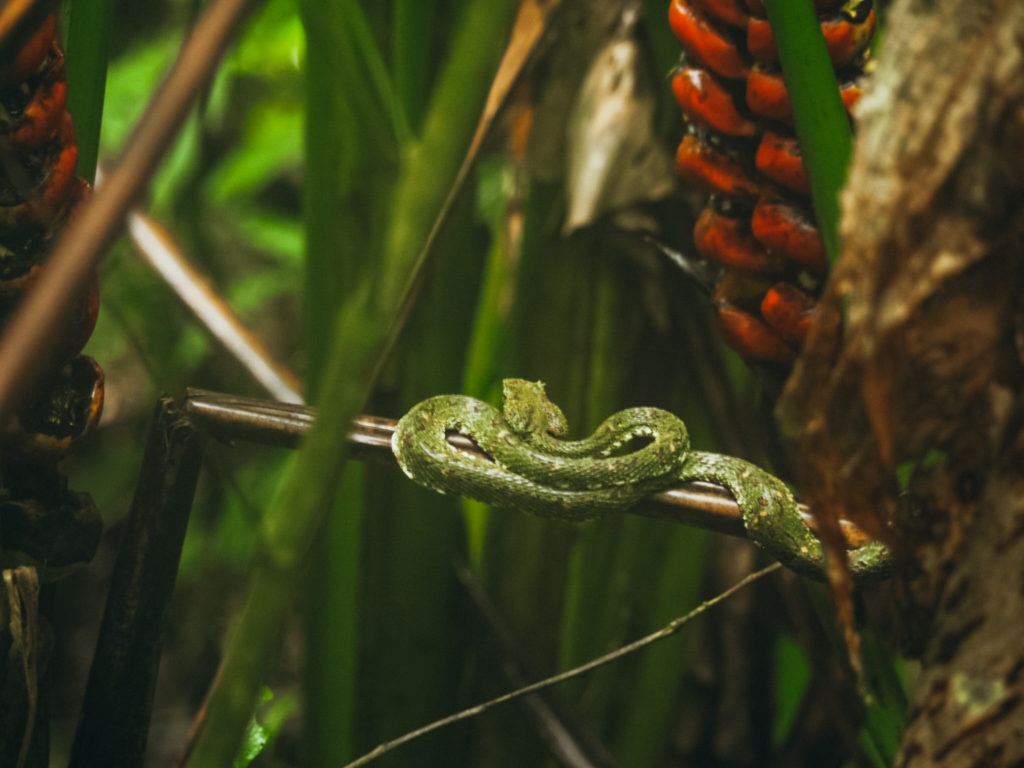
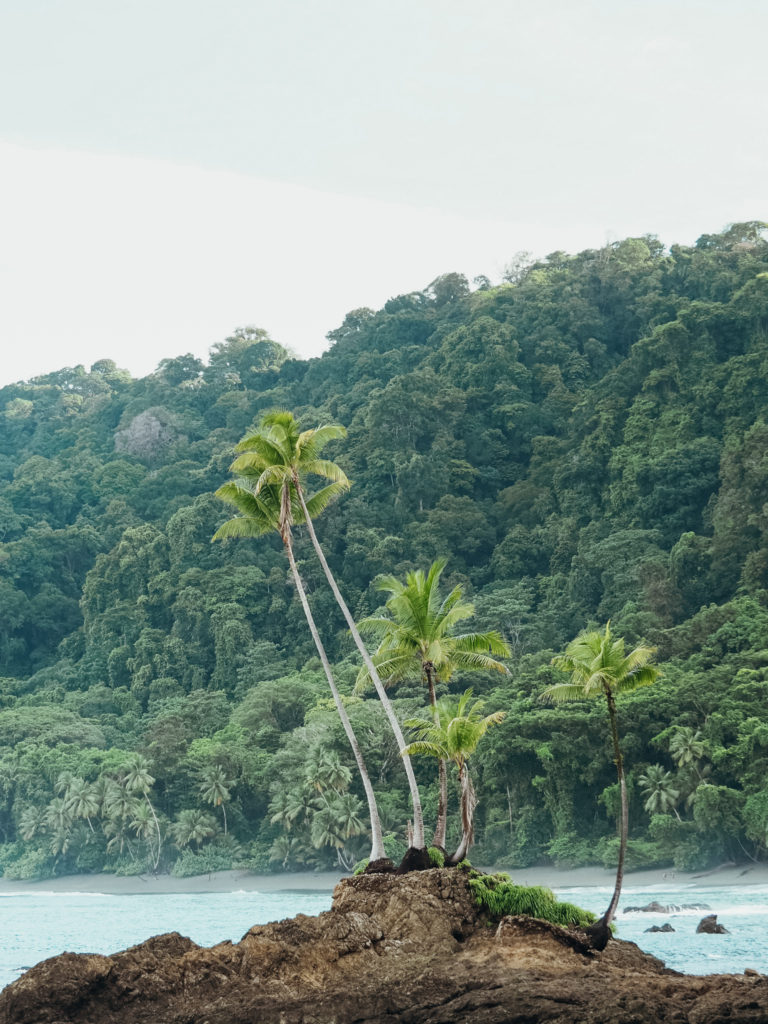
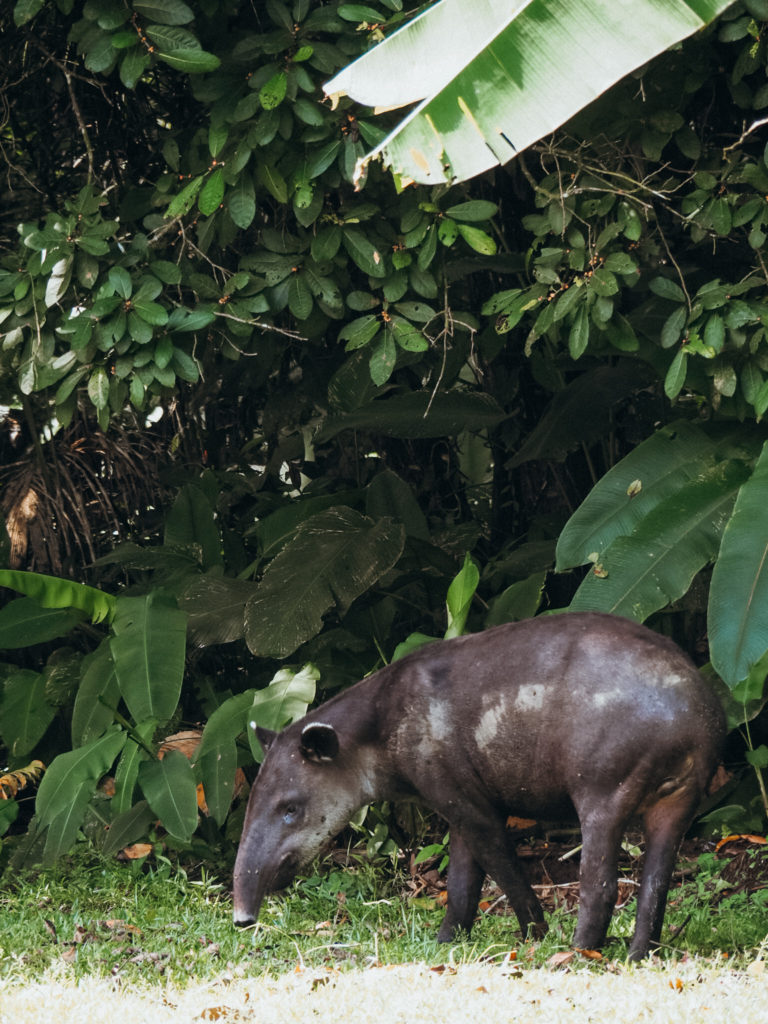
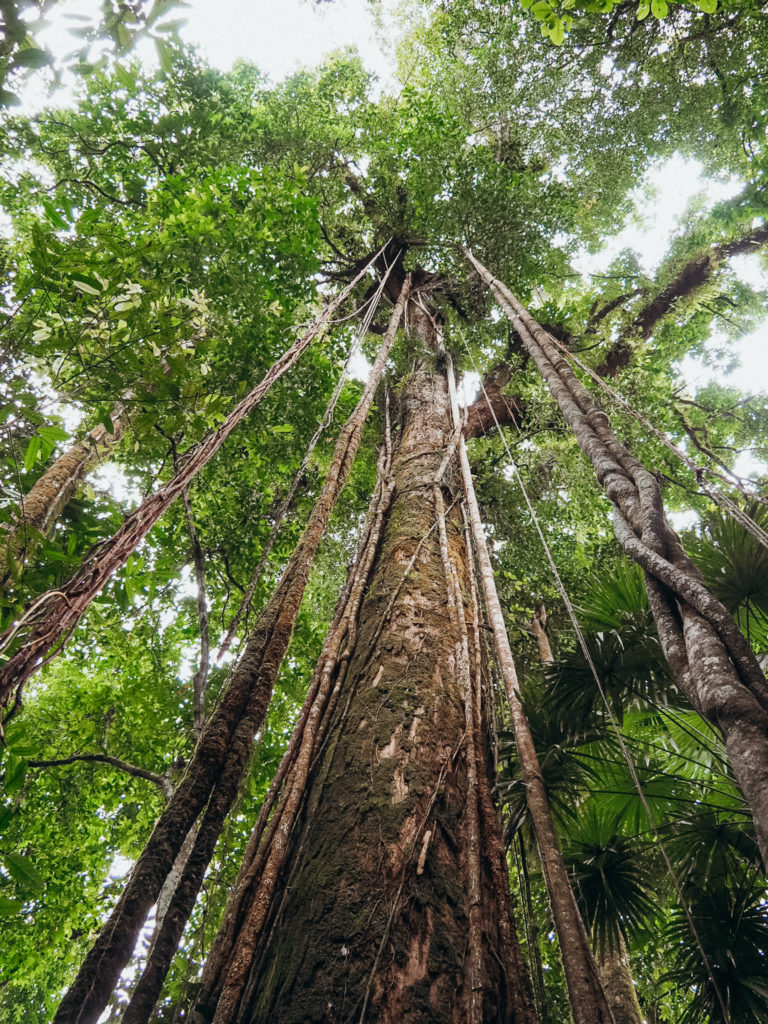
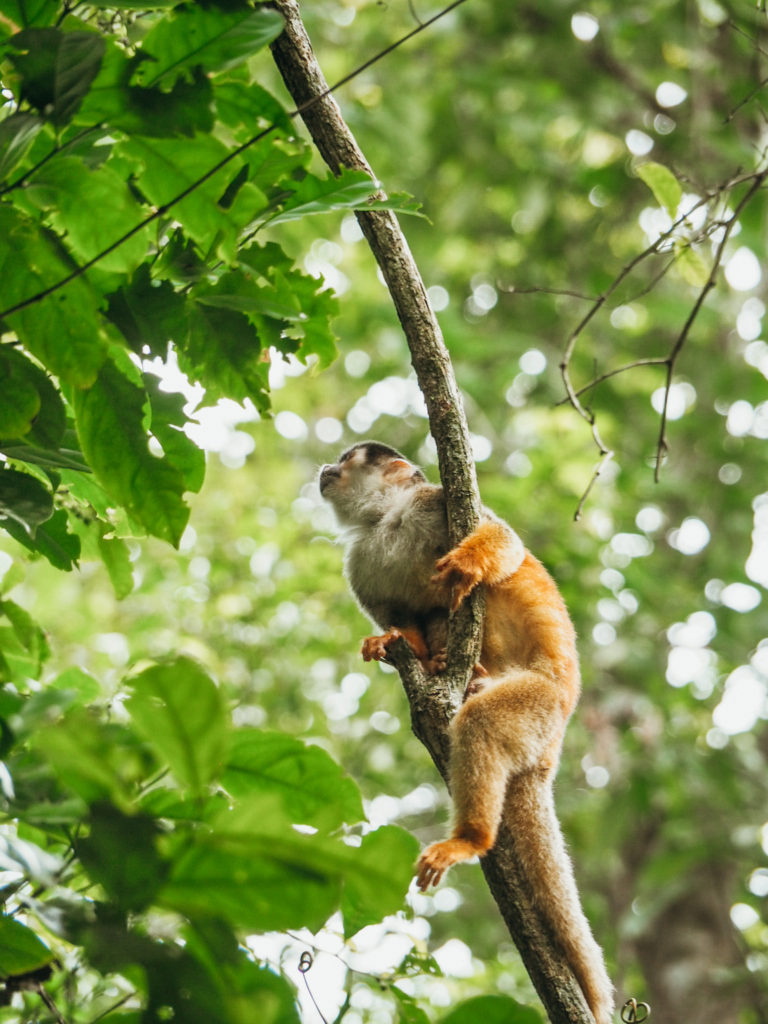
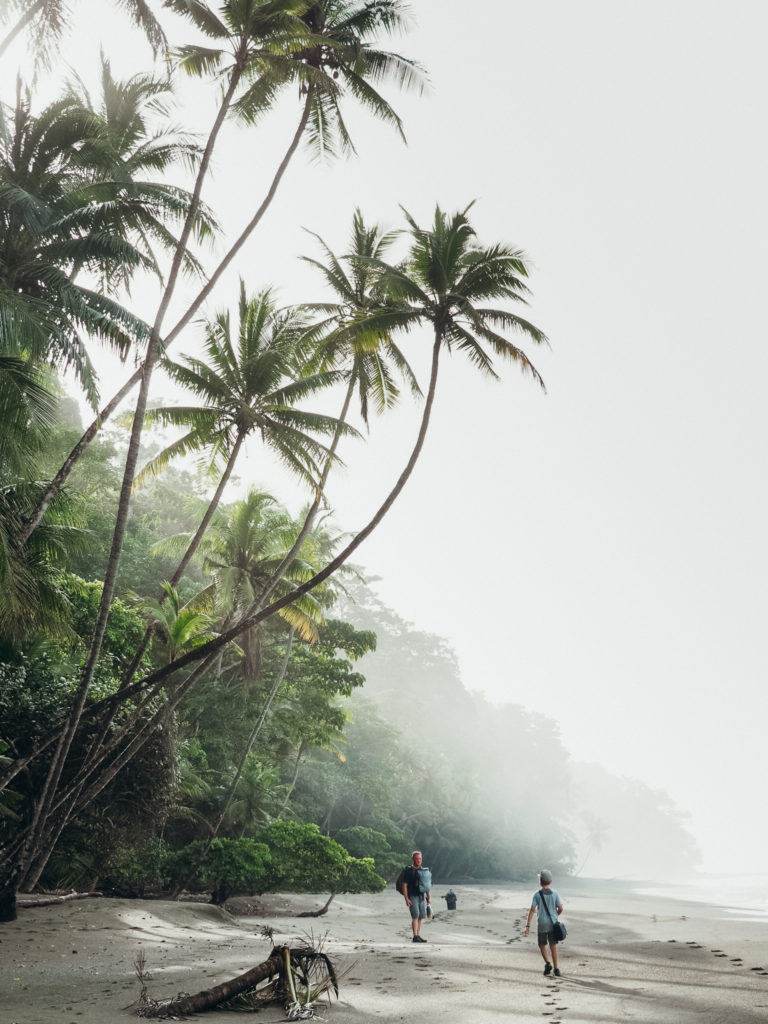
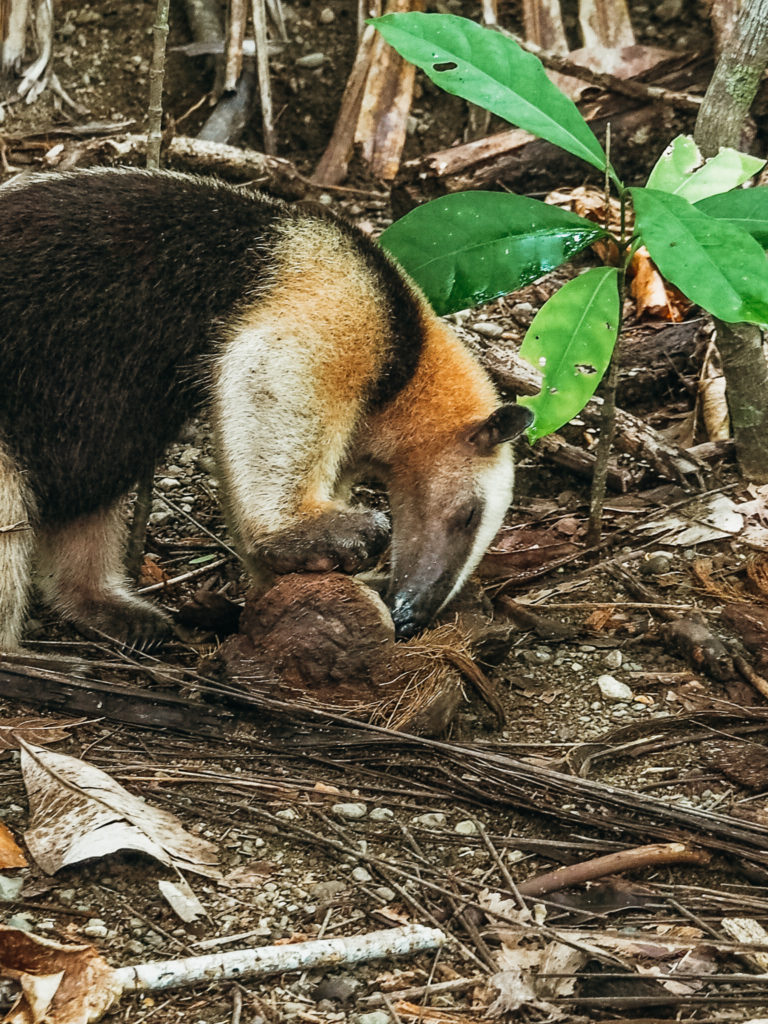
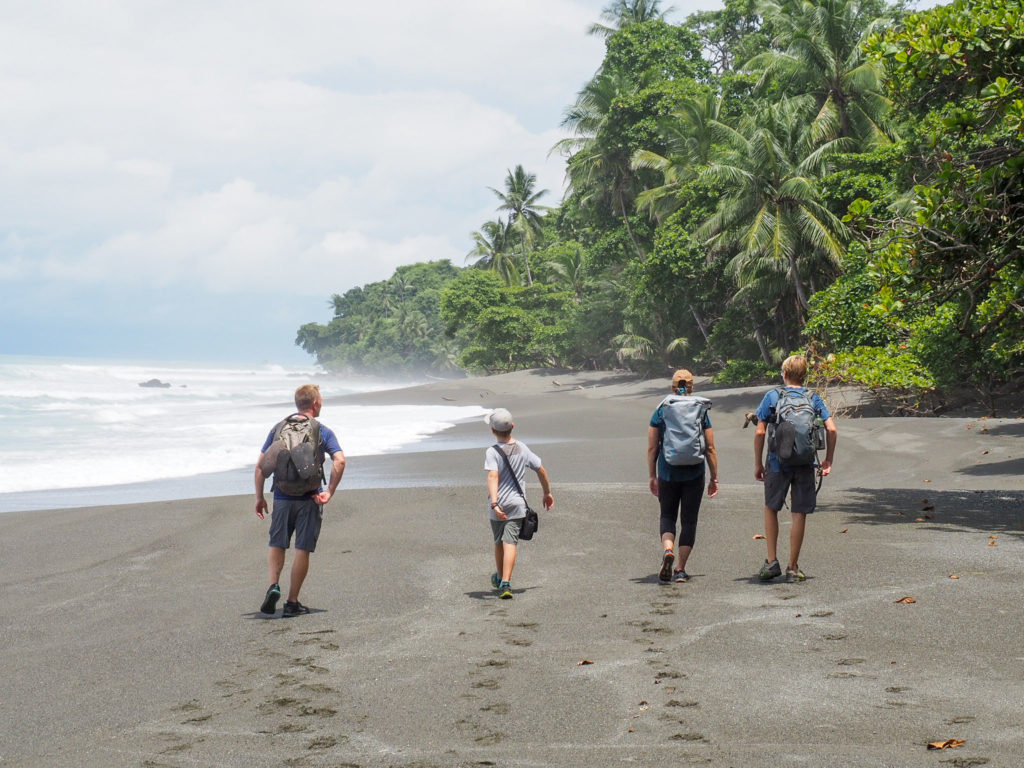
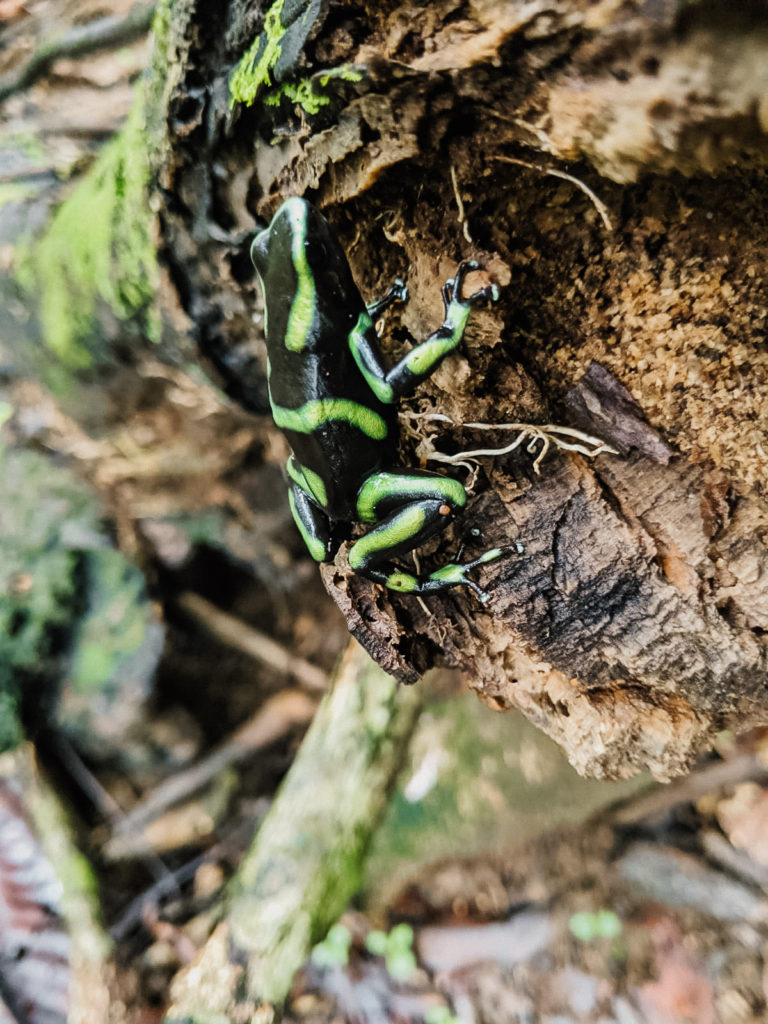
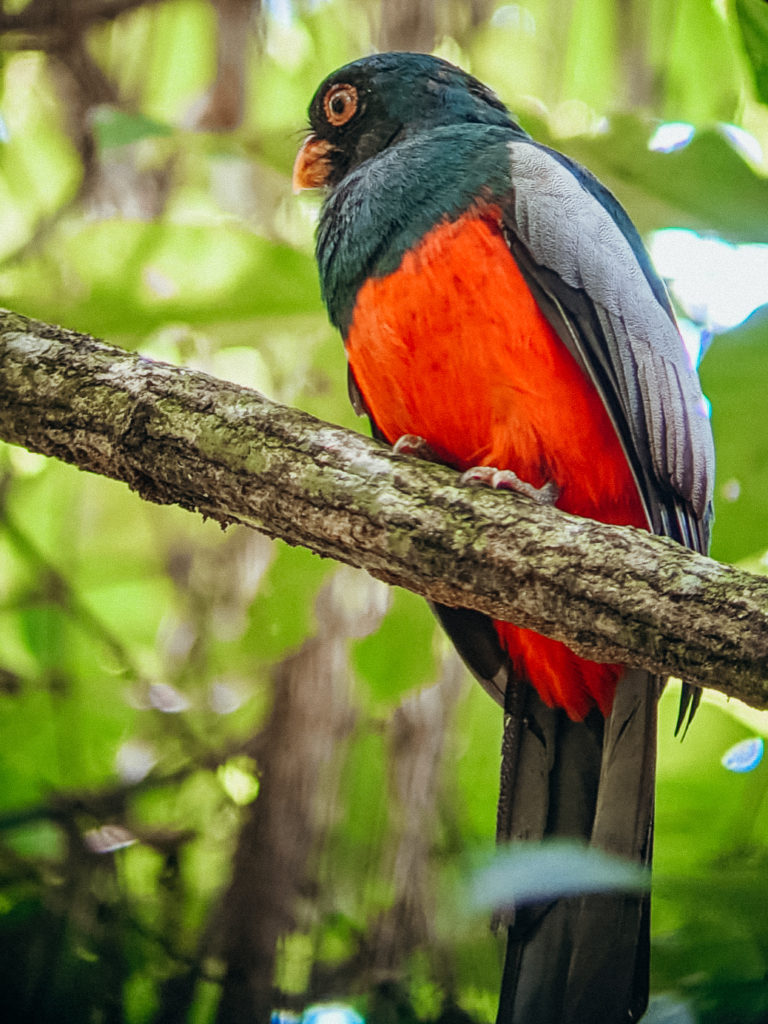
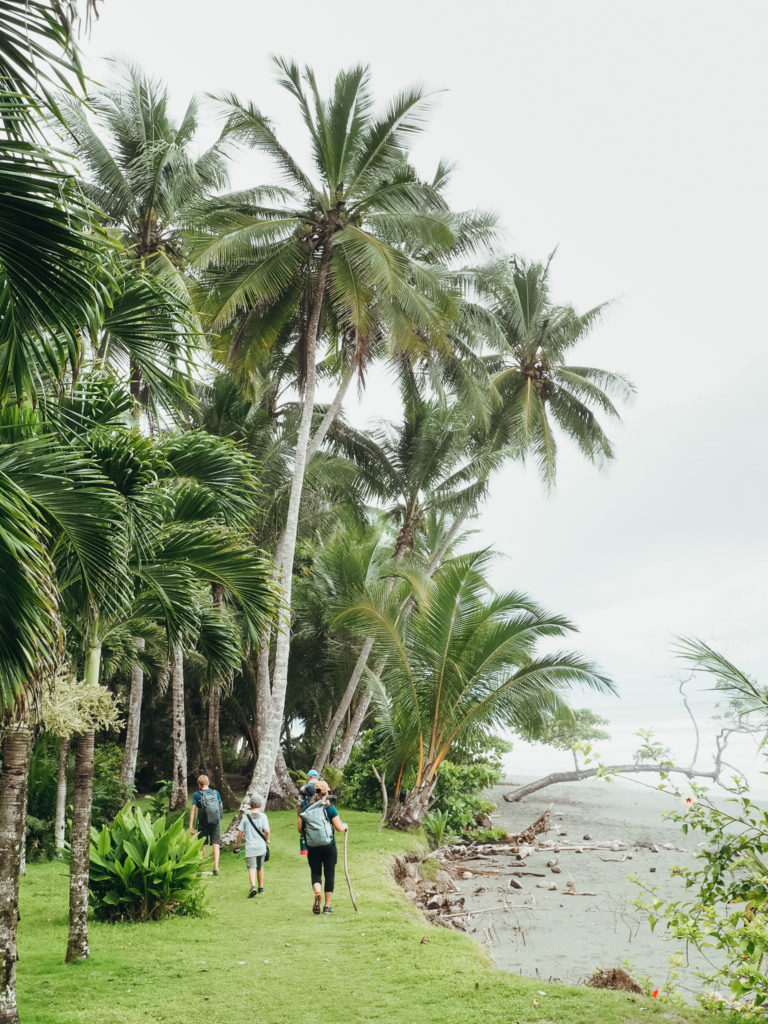
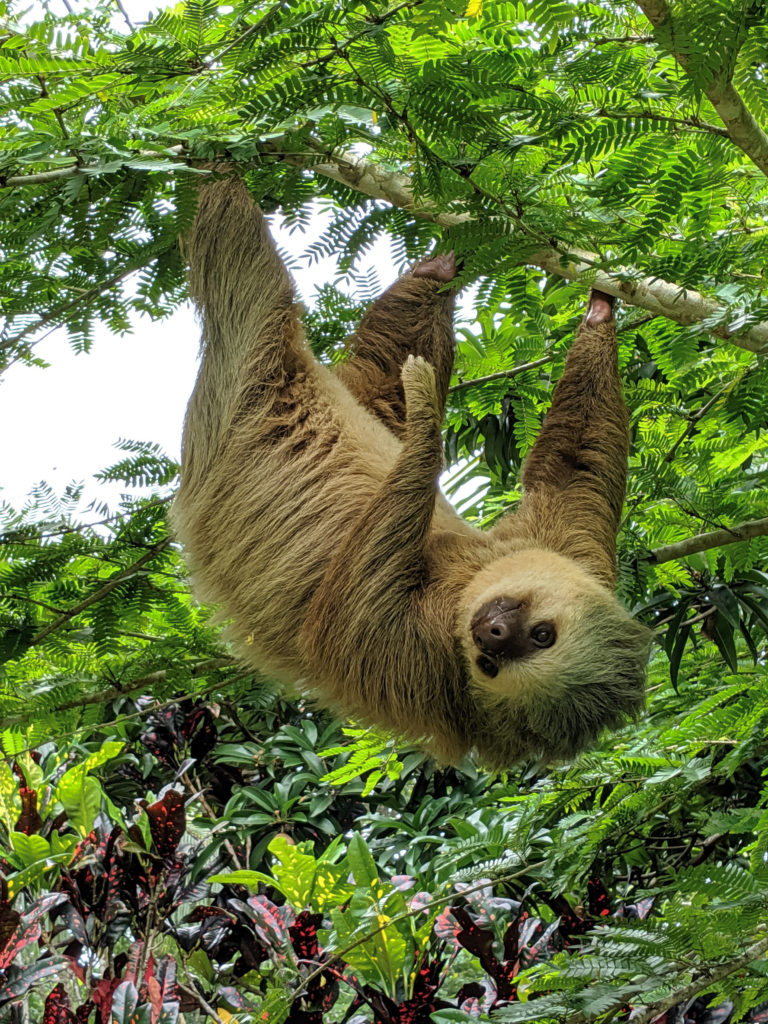
One thing to note about Corcovado is that you cannot enter the park without a permit and if you stay overnight, you have to go with a guide. We recommend the latter (book ahead of time as Corcovado only allows so many overnight permits/day), as it gives you the opportunity to experience the jungle at night. This is an entirely different experience vs seeing it during the daytime. Surcos Tours was the company we chose to go with and let’s just say, we were not disappointed. Not only were they professional and knowledgable, but the guides made it so fun and educational for our kids.
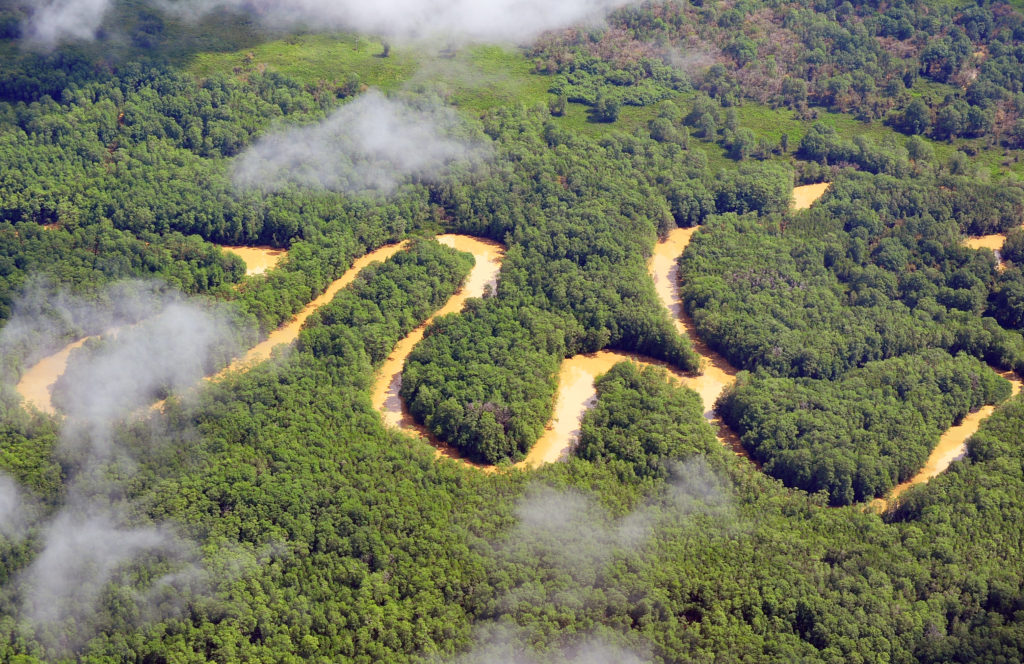
Surcos Tours offers many different multi-day trekking options, but we chose the 2-day trek that took us from Puerto Jimenez by boat to Sirena in Corcovado, where we hiked to the Sirena ranger station and stayed the night. After a short hike to the ranger station on day 1, we explored a couple of trails from there and then on the second day, hiked out to Carate along the coastal trail for 12 miles. Total mileage for 2 days was about 18 miles. From Carate, we were picked up and taken back to our resort, El Remanso, a 45 min drive.
The heat and humidity can be intense in Corcovado, and also the bugs, so be prepared with bug spray (we only use sprays with 30% Deet, as it is the most effective!), mineral and reef-safe sunscreen and plenty of water to stay adequately hydrated. The great thing is you’re hiking near water most of the time, so anytime you want to go for a swim, the ocean is calling your name.
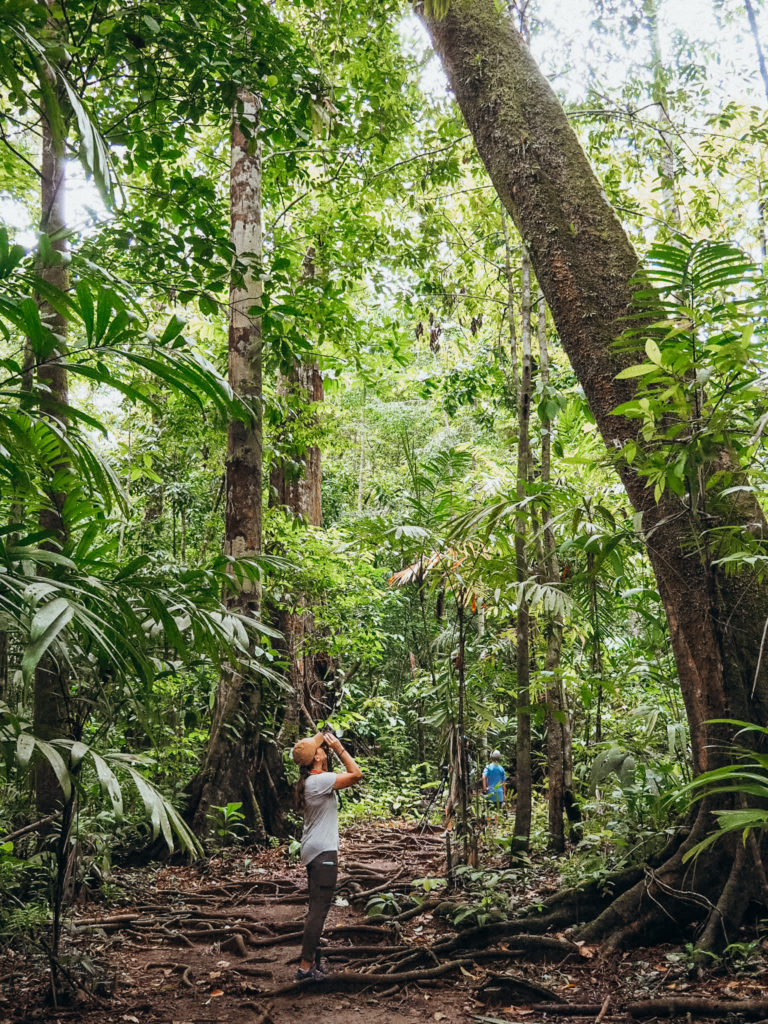
Some of the things we loved most about our experience in Corcovado was seeing wildlife literally around every corner. Our guides were so good at spotting even the smallest animals (like baby hummingbirds!) and always had their scopes ready, so we could see the birds high in the trees up close. The jungle in Corcovado is incredibly beautiful and pristine, making this park one of the most special places we’ve ever been. This is truly an once-in-a-lifetime experience you will never forget and worth every penny!
You can’t come to the Osa peninsula without seeing the Golfo Dulce and the wildlife that is plentiful here. There are many whale and dolphin watching tours that operate from Puerto Jimenez, however in our opinion, the best way to see this area is via a kayaking tour where you can explore mangrove forests, in addition to the gulf. There are even kayaking tour options that take you to a bioluminescent beach after sunset, where you can witness one of the most natural phenomena.
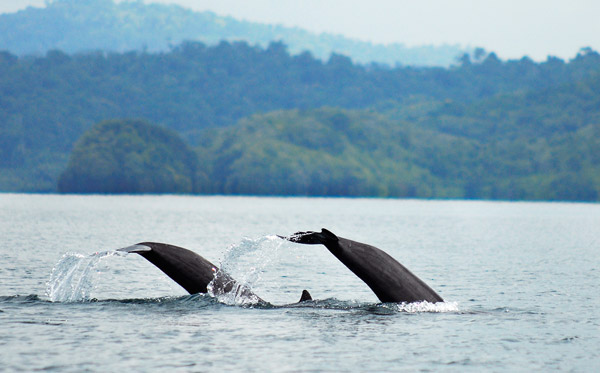
Assuming you have to return to San Jose to catch a return flight home, this day will be your travel day from the Osa peninsula. Remember the quickest way to get to San Jose is to fly from Puerto Jimenez, however that will cost you more. If you have a rental car and plan on returning it in San Jose, then it will be about a 5 hour drive. If you have time, make a pit stop in Manuel Antonio and visit the national park or go for a swim at the beach!

This 10 day itinerary on Costa Rica’s Southern Pacific coast will surely leave you longing to come back. This area of Costa Rica is so breathtaking and feels so untouched compared to other areas of Costa Rica. Make sure to check out our Ultimate Costa Rica Family Adventure Vacation guide, Best Outdoor Adventures near Tamarindo (Northern Pacific coast), and 10 Outdoor Activities in La Fortuna if you want to visit other amazing areas of Costa Rica!
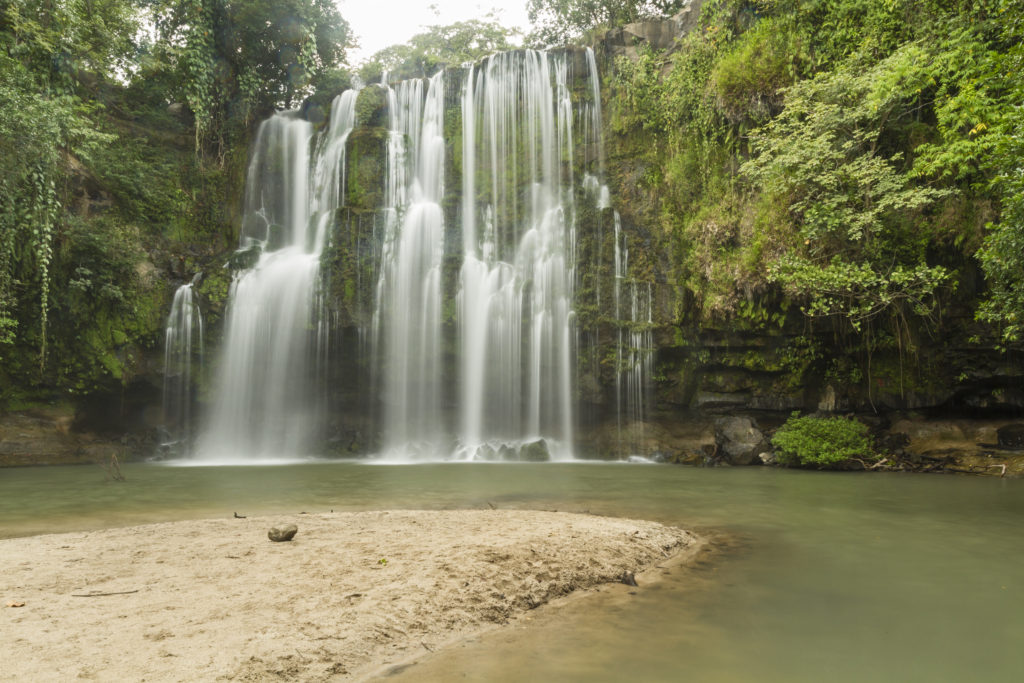
Tamarindo, Costa Rica is well known as the epicenter of all the action on the Pacific coast of the Guanacaste peninsula. It’s also a major surf destination, and rightfully so, the beaches here are prime conditions ALL YEAR long for surfing. But this region is more than just surf, these are the best outdoor adventures near Tamarindo, Costa Rica that should not be missed!
We spent 2 months in Tamarindo one Summer and were on a mission to uncover all the best outdoor adventures in the Guanacaste area, all within a 2 hour or less drive from Tamarindo (which make it the ideal central location!). Tamarindo is also close to several national parks and wildlife refuges, as well as some of the most beautiful beaches in all of Costa Rica. Not only that, but Tamarindo boasts more sunny days than most all of Costa Rica, making it a perfect getaway even in the wet or rainy season.
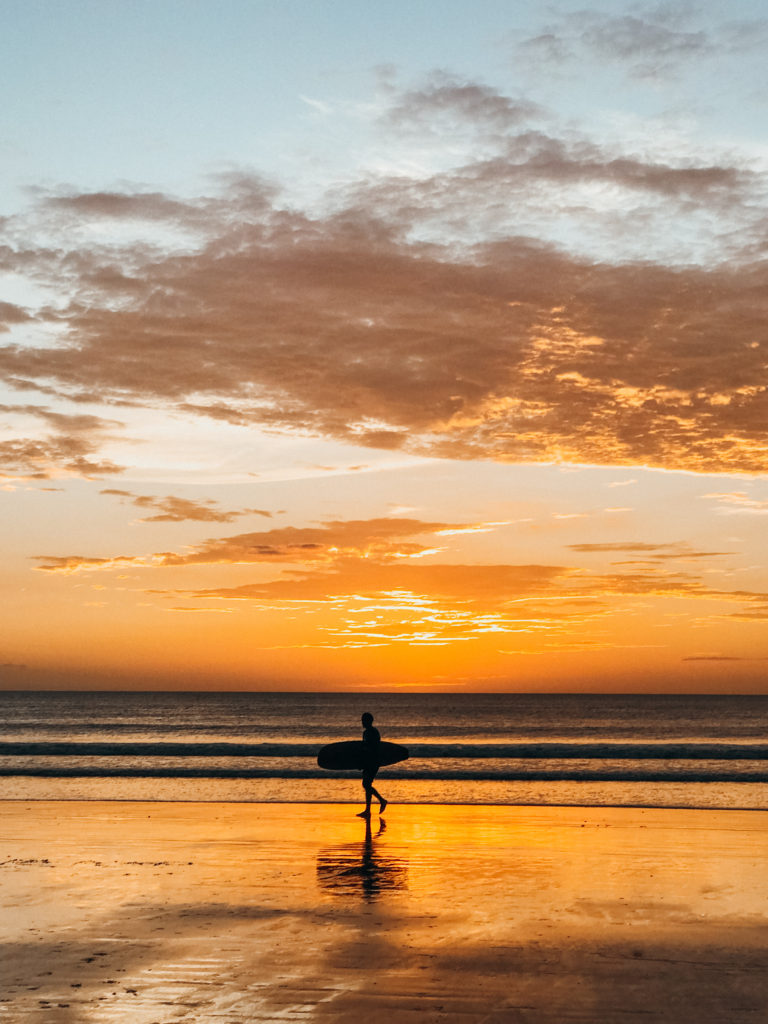
A quick note on where to stay and how to get around if you come to Tamarindo. We stayed in an Airbnb while we were there because it saved us money on long-term housing and food (since we were there for 2 months), but we do have a few other recommendations in case you want a hotel or hostel.
If you prefer more luxury style lodging, the JW Marriott Hotel Guanacaste is pretty hard to beat. However, the Westin Golf Resort & Spa (all inclusive) is also top notch and closest to one of our favorite beaches in the Guanacaste region, Playa Conchal. Want to be right on the beach AND the town where all the restaurants and shops are? The Tamarindo Diria Beach Resort is beautiful and a perfect location situated right on Tamarindo Beach!

Other more budget-friendly options closer to Tamarindo include Hotel Luna Llena, Seahorse Beach & Dive Center, and Antema Lodge (all of which have the highest ratings on Trip Advisor too!). Make sure to check Booking.com for all the best rates and specials, plus availability.
As for getting around Costa Rica, if there is one thing we strongly recommend when you come here, it’s to rent a 4 X 4 vehicle. Because Costa Rica has so many mountainous, dirt roads it really is necessary if you plan or want to explore the country or even just the Guanacaste area around Tamarindo. We did a lot of research and read a lot of reviews, and hands-down the best car rental service is a local Costa Rican run company, Vamos Rent-a-Car.
Not only did we find reasonable rates with Vamos (compared to other internationally known brands like Alamo or Hertz), but they really go above and beyond to make sure you have everything you need. They also often include extras like a cooler or boogie boards!
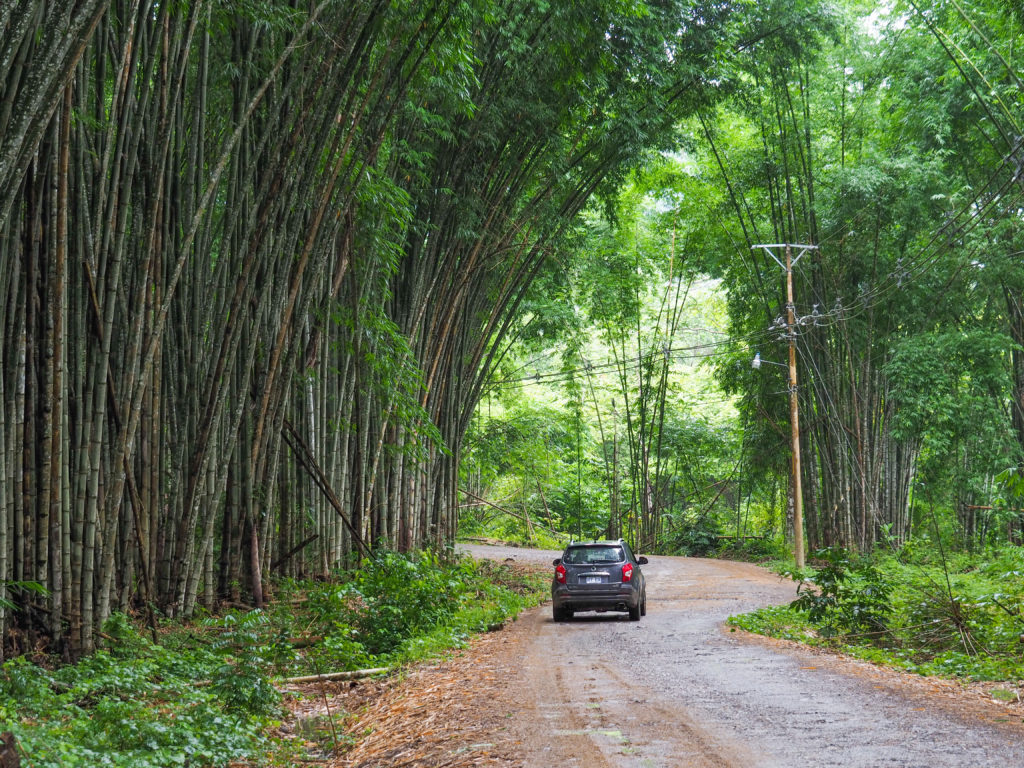
One more note about Vamos. Whether you fly into Liberia (the closest airport to Tamarindo) or San Jose (the most common), you can pick up your rental car from either location since they have offices in both Liberia and San Jose.

Now, onto the real meat of that matter, the FUN! The good news is if you come to Costa Rica, you will never be bored. There is so much to do and see, especially if you enjoy nature and wildlife (and have a sense of adventure)! It was hard to choose our favorite outdoor adventures near Tamarindo, but we narrowed it down to the best of the best, all of which are great for families!
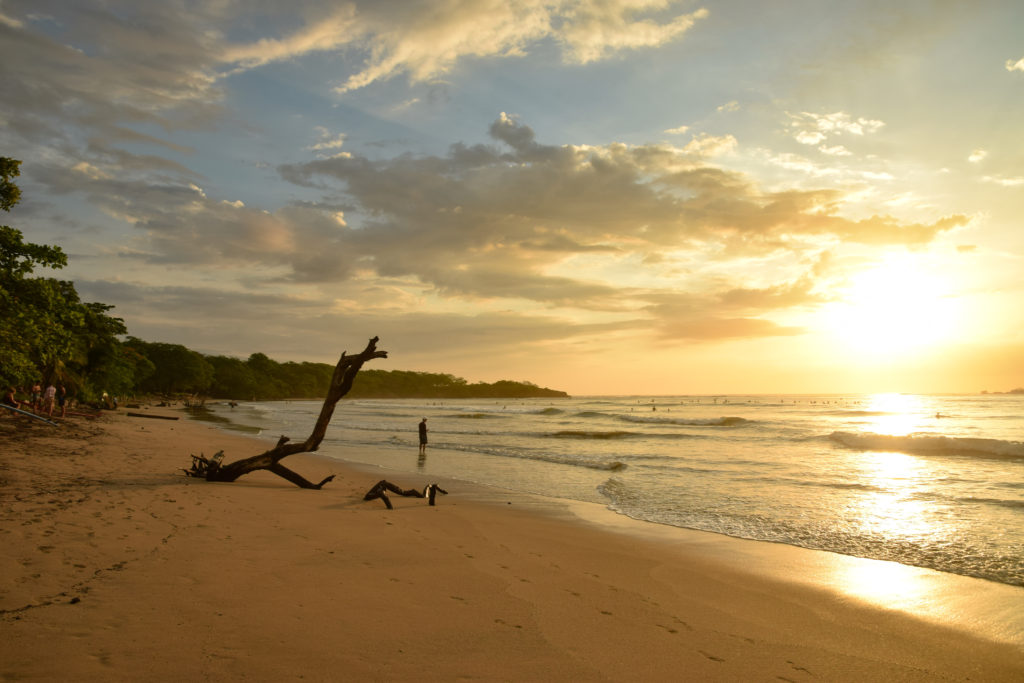
One thing you will notice if you stay in Tamarindo is how many people drive ATV’s or even golf carts around. This seems to be a preferred mode of transportation for many tourists. While that isn’t a bad idea if you don’t plan to go too far outside Tamarindo, we would suggest taking an ATV out for the day and driving to some off-the-beaten path beaches. The best way to do this would be to go with an organized tour so you know where to go and can find all the best spots (and fun roads to drive down!).
We loved the ATV Secluded Beach & Snorkel tour with Native’s Way because we went on some fun dirt roads (with puddles!) two beautiful, quiet beaches just north of Tamarindo. Native’s Way also offers UTV tours, check them out! Tours cost between $45-75 per person.
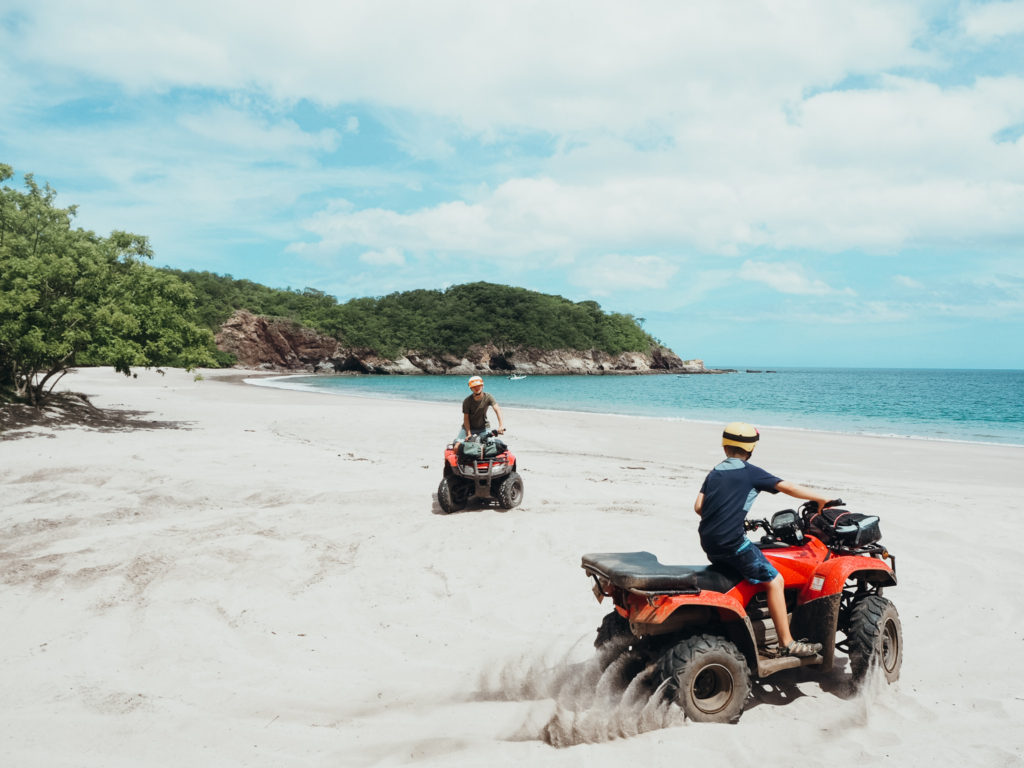
We didn’t do this near Tamarindo, but we wish we had! We saw lots of people riding horses on the beaches around Tamarindo, but also at nearby beaches! This is such a great family-friendly activity and a peaceful way to see the scenery. We would suggest going at sunset as the sun goes down right over the water!
Our top recommendation for horseback riding on the beach would be the Sunset tour at Playa Conchal with Pacific Horses, as this beach is beautiful with its white sandy shores and turquoise, calm water. Cost can be anywhere from $40-100 per person depending on the length and location of tour.
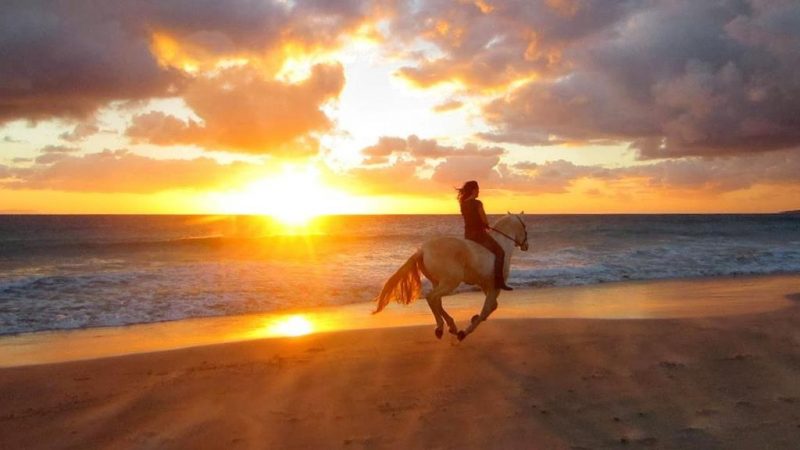
You might have seen pictures of the famous Gatorade-colored waterfalls and rivers of Rio Celeste and let me just say, it’s worth the hype. It’s a little bit of a drive to get there from Tamarindo (about 2.5 hr away), however it’s do-able and worth the hype. Our one suggestion would be not to go on a holiday or weekend as it will be more crowded with the locals.
Get an early start in the morning (leave by 6AM), so you can you can beat the crowds to the falls. Take plenty of snacks and water, as there are lots of trails to explore (but don’t skip out on buying the homemade empanadas in the. parking lot when you get done!). It’s also a good idea to bring a rain jacket as the weather can be temperamental and change at the drop of a hat. You should wear good, sturdy hiking shoes, as the trails are often muddy. Bug spray is a good idea too.
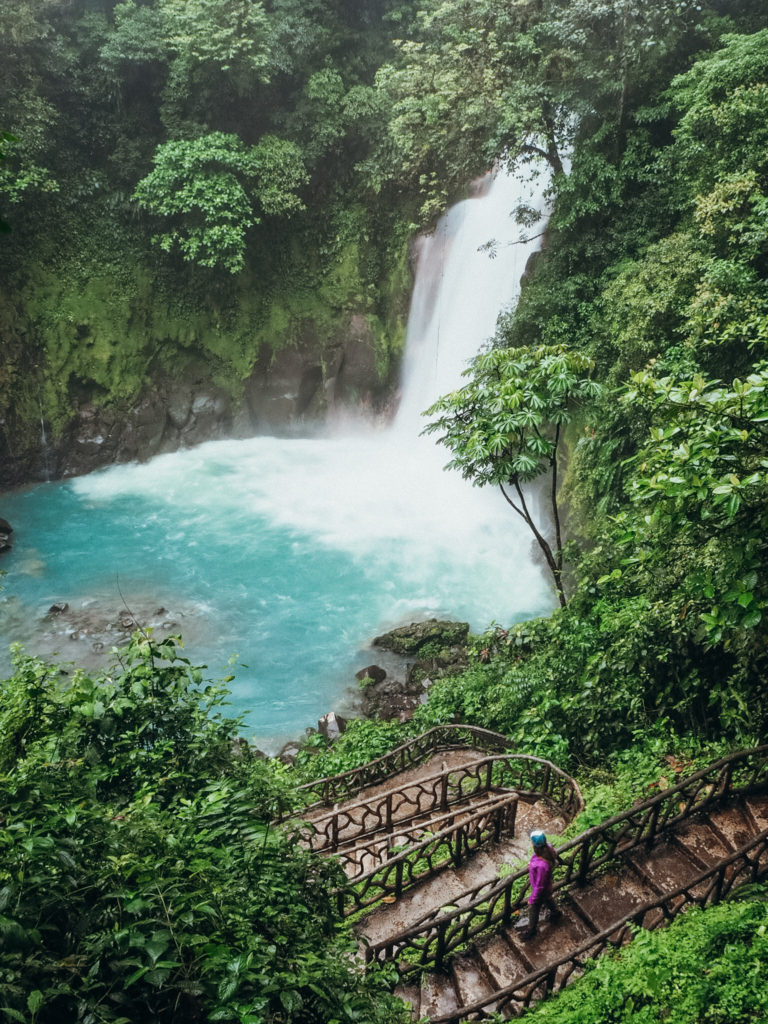
Rio Celeste is located inside Tenorio National Park, so expect an entrance fee of $12/person ($5 for children ages 2-12). The park only allows 1000 people a day, with only 500 people on the trails at one time, so keep that in mind when planning your visit (another reason to go early).
The trails, for the most part, are not very difficult. The first section of the Waterfall trail is nice and flat (and less than 2 miles round trip). Once you reach the waterfall entrance, there is a set of steep stairs (with handrails) to go down to the waterfall. That section will be a bit more difficult going up if you aren’t in the best physical condition.
We would also suggest hiking the trail to Tenideros (less than a mile from the waterfall). We did this trail after hiking to the falls and it was equally as beautiful. If you go past the Mirador, you will eventually cross the creek (also stunningly blue) through a series of bridges. Past the second bridge so you can see the merge of the two rivers (one no color, one blue)!!
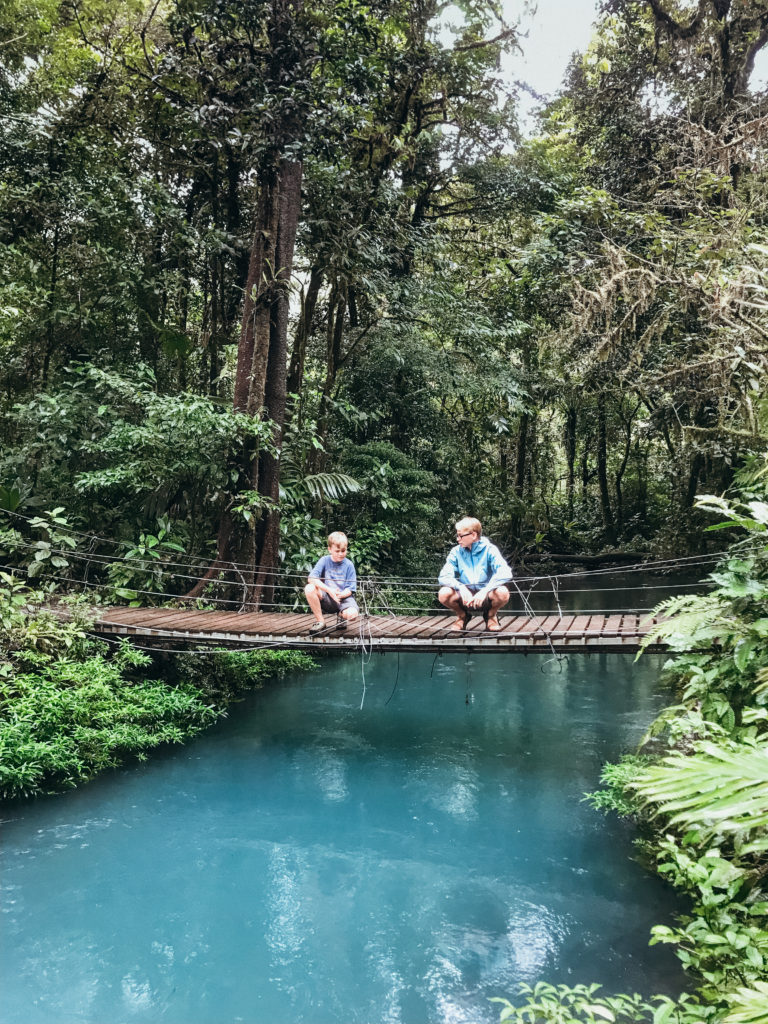
A couple more notes about Rio Celeste. Depending on the time of year you come, the water might not be as blue. For example, if you come in the peak of the wet season (June-Nov) right after a heavy rain storm, there’s a good chance the water will be brown and not blue. Our suggestion would be to check the weather and go the day after a dry day(s).
In addition, there is no swimming allowed in the main waterfall or creek above the falls, however there is a free public entrance by the bridge 1 kilometer (~.6 mile) past the park entrance or you can pay $6 per person at Piruri Cabinas to swim in the river. The public entrance is awesome, you can find a nice spot to sit between the rocks and walk down the river.
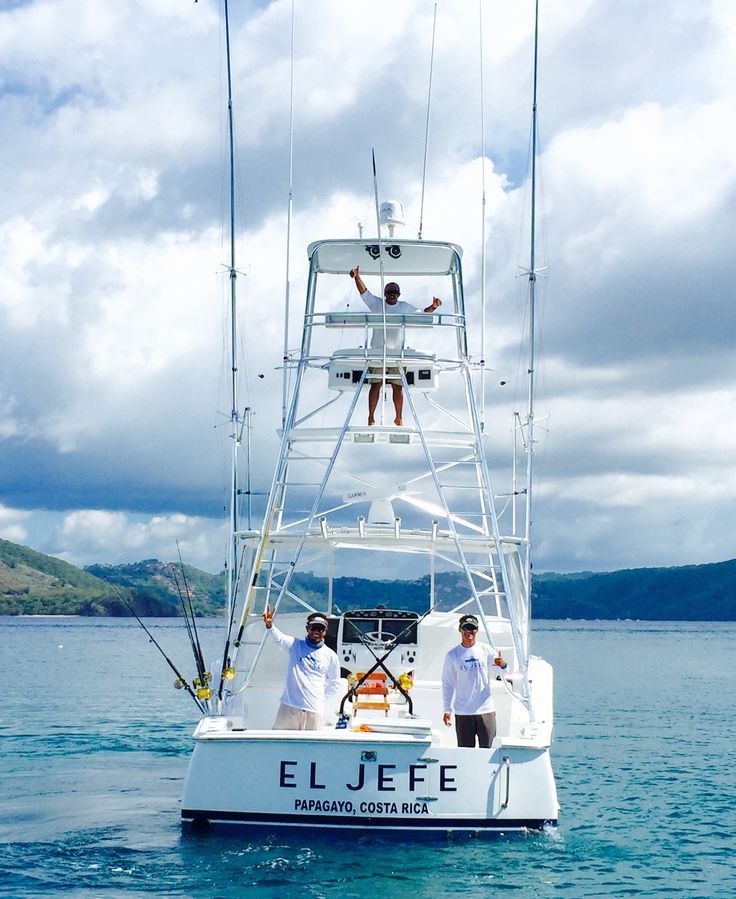
Sport Fishing is very popular in this area of Costa Rica for good reason–there is so much abundant marine life making this location world-class fishing. Here you can fish for sailfish, all kinds of tuna, snapper, marlin, grouper, wahoo, rooster and more. There are plenty of companies that take you on half or full day fishing trips, and one of best locations is found in the Gulf of Papagayo, about an hour or so north of Tamarindo.
El Jefe Sport Fishing & Adventure Tours came highly recommended to us by a few friends and expats that live in Costa Rica. Keep in mind that most tours are semi-private or private which can be pricey, however if you are really into fishing, it will be worth the splurge (prices can range from $400 and up for a private tour up to 6-8 people). Plus, you are guaranteed to catch something!
You can combine the fishing with snorkeling if you choose, and El Jefe also offers options that do both.
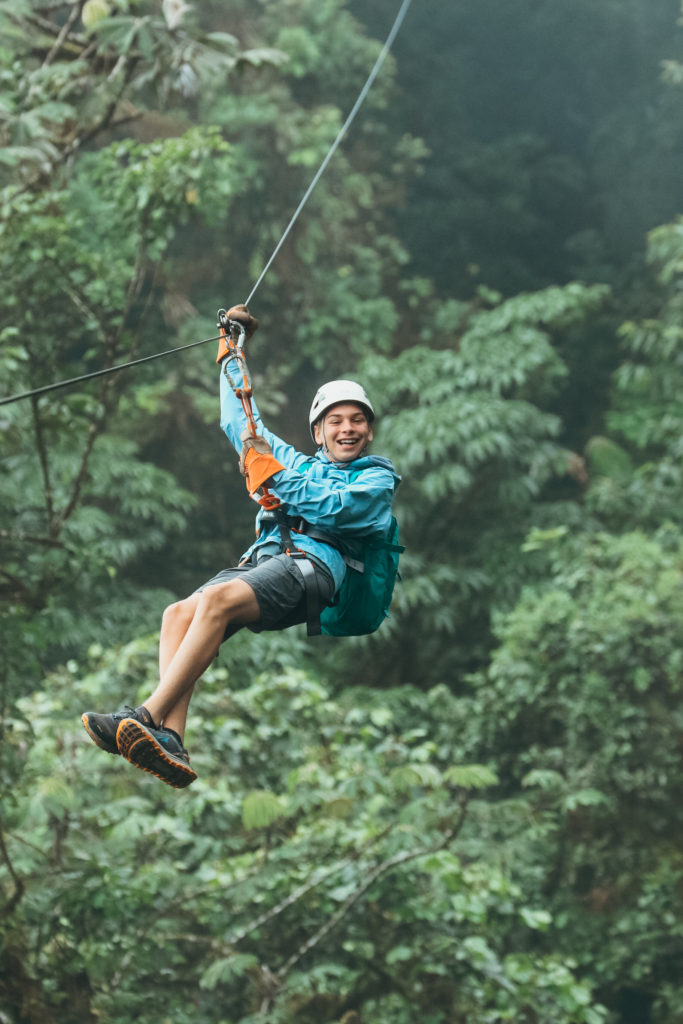
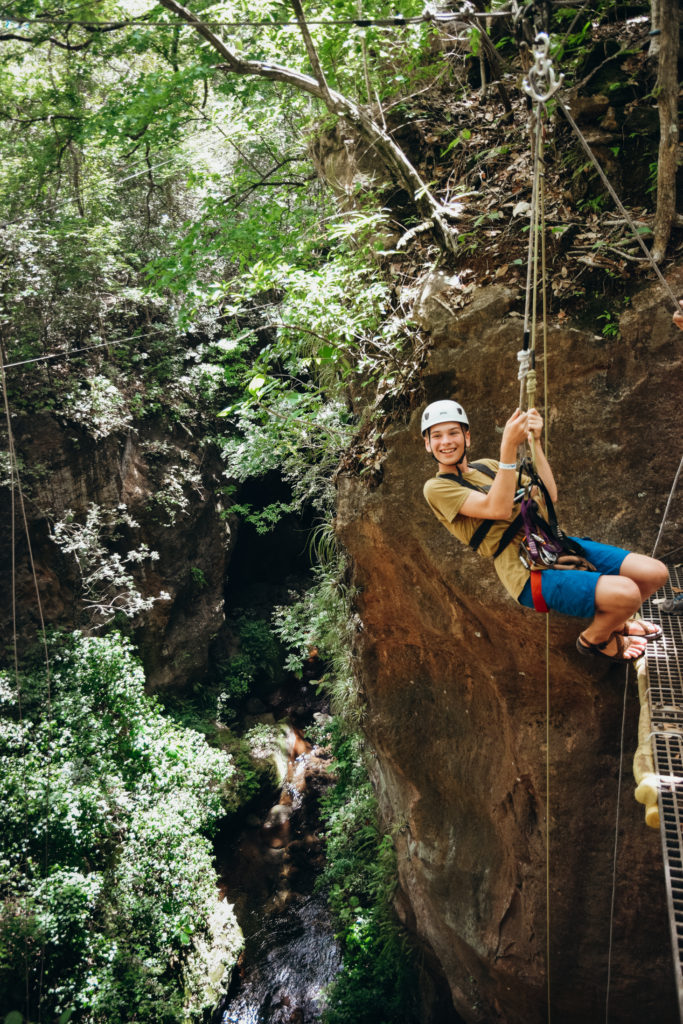
Spending a day at Rincon de la Vieja with Native’s Way on the Adventure Combo Volcano Tour was hands-down one of our favorite days while we were in Costa Rica. Rincon de la Vieja National Park is just north of Liberia, a 2 hour drive from Tamarindo. We started the day early when Native’s Way picked us up at 7AM in a small bus and made its way to the park.
Once we arrived at Guachipelin Hacienda, we suited up for our first big adventure in the park: river tubing. We half expected a lazy river, but nope, this was full-blown rapids and SO MUCH FUN. In fact, for whitewater snobs like us (we are used to wild rivers in Idaho) we were totally surprised how good these rapids were.
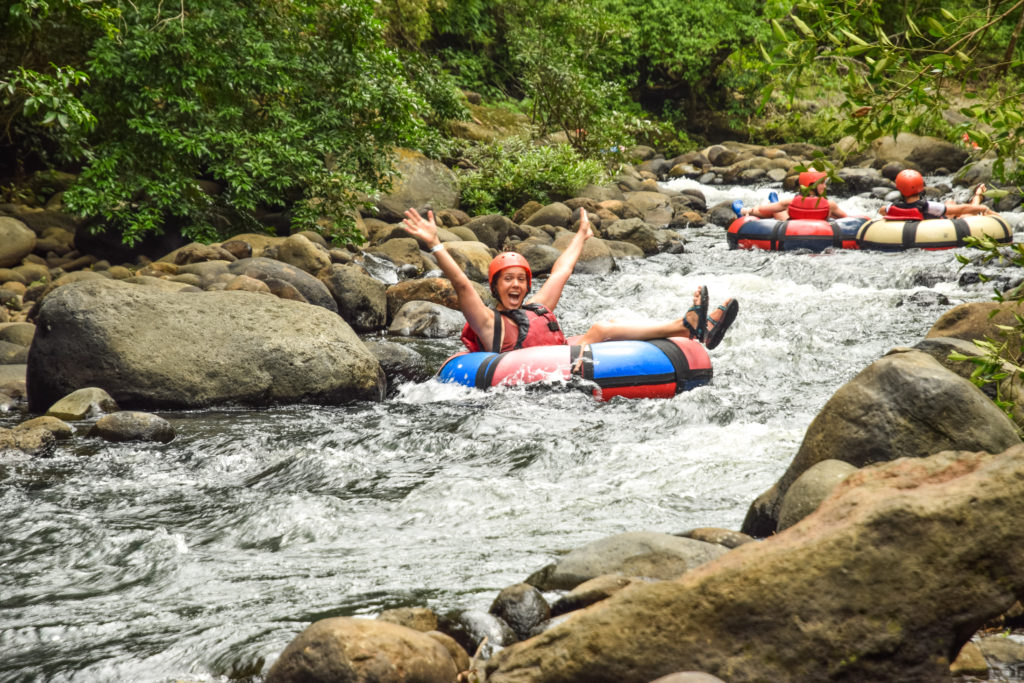
We spent probably 1.5 hours on the river, and then it was onto the next adventure: zip lining and rappelling. There were several cables to zip line with a couple places to rappel and rock climb (optional). After that, we had a delicious buffet lunch (included) and then spent the next hour or so horseback riding. Seeing this area of Rincon de la Vieja National Park by horse was really beautiful and the perfect time of day to watch the sunshine bathe over the hillside.
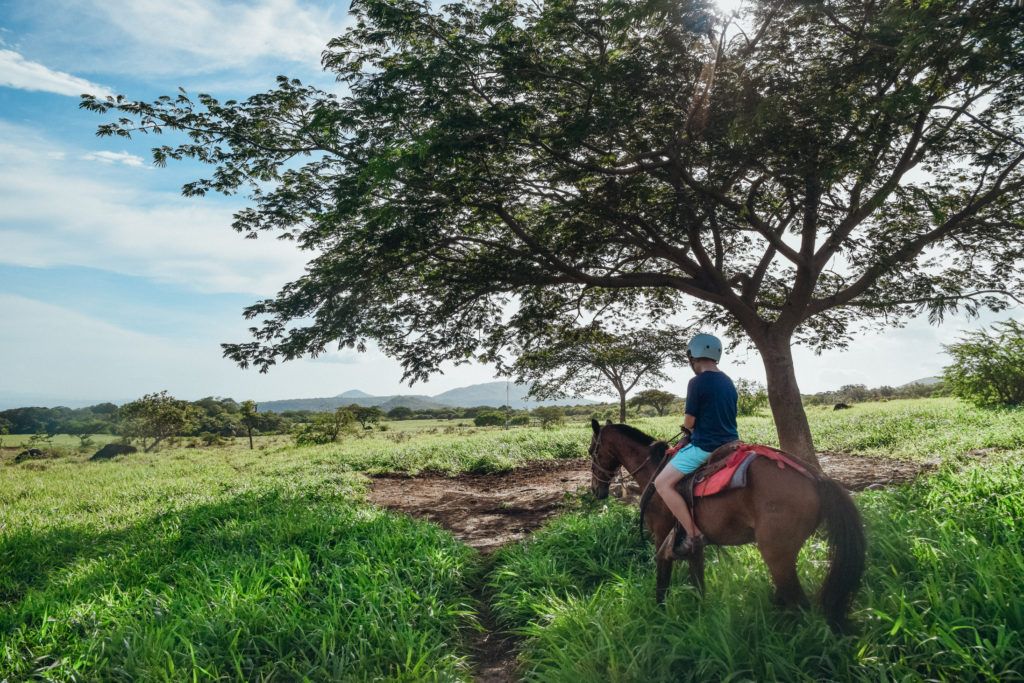
The final activity of the day was soaking in the park’s famous hot springs and mud baths. It was the perfect end of the day relaxing in the different pools and lathering ourselves up with volcanic mud (don’t worry, they have showers to clean off!). This entire tour cost $120/person, but it also includes transportation and food. Definitely a MUST if you come to Tamarindo or stay in the Guanacaste peninsula.
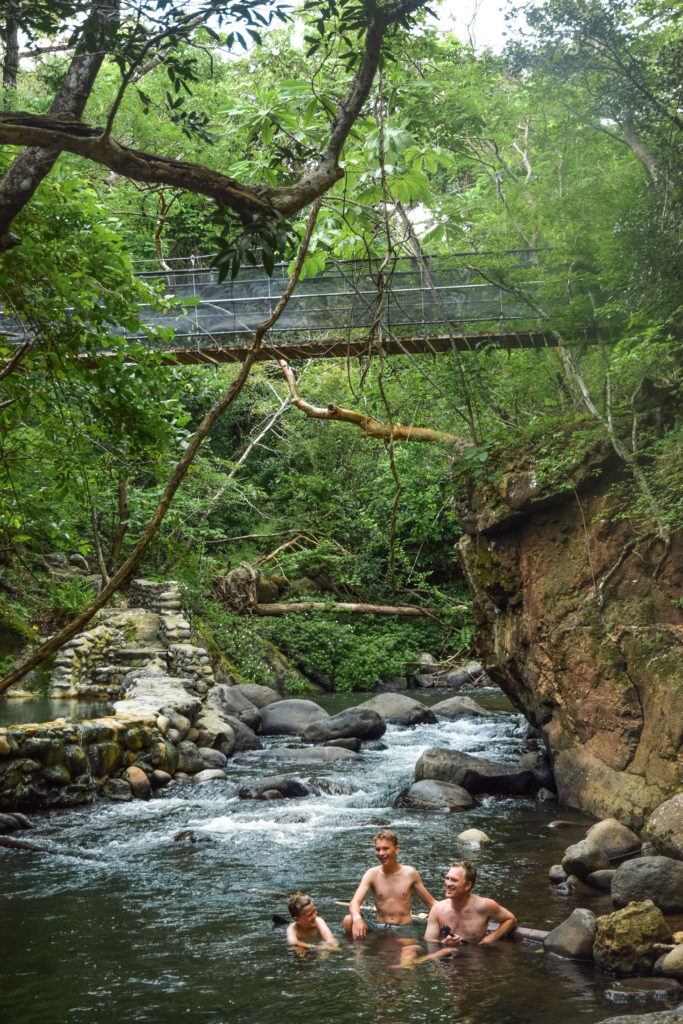
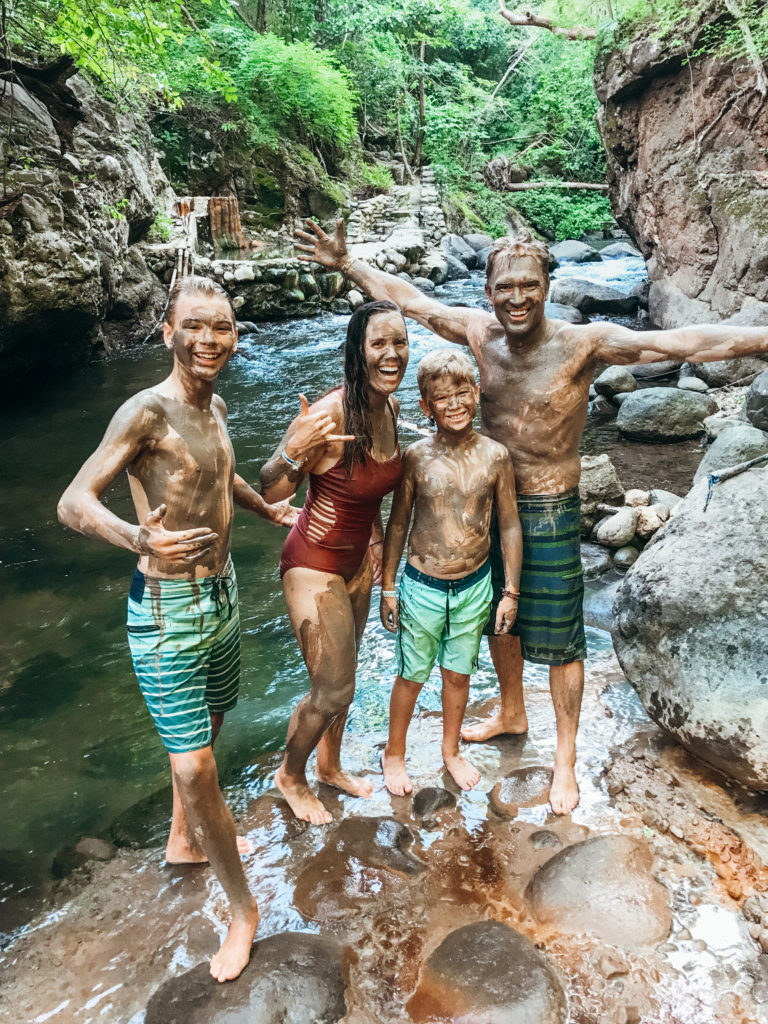
Of course, you can’t come to the Guanacaste region without spending some time at the beach. There are so many gorgeous and unique beaches just waiting for you to explore. The great thing about this area of Costa Rica, is there is something for everyone here whether you want to surf, boogie board, snorkel, or just sun bathe. Plus, it’s FREE!
Some of our favorite beaches near Tamarindo include Playa Grande, Conchal, and Minas. Make sure to check out our complete list of best beaches in the Northern Pacific area. All of these beaches are within 2 hours or less from Tamarindo (north and south).

Tamarindo has a major estuary brimming with wildlife and the best way to experience it is by boat or kayak with Native’s Way. You’ll see crocs, many different bird species and colorful fish in the water. Up above in the mangrove trees you will have a chance to see monkeys and iguanas.
After paddling for an hour, you will get out and walk through the forest with your guide for a deeper explanation of the local flora and fauna, specifically the famous local Guanacaste trees, Costa Rica’s National tree. Kayaking is a great way to spend a few hours right in Tamarindo! Tours cost around $30-40/person.
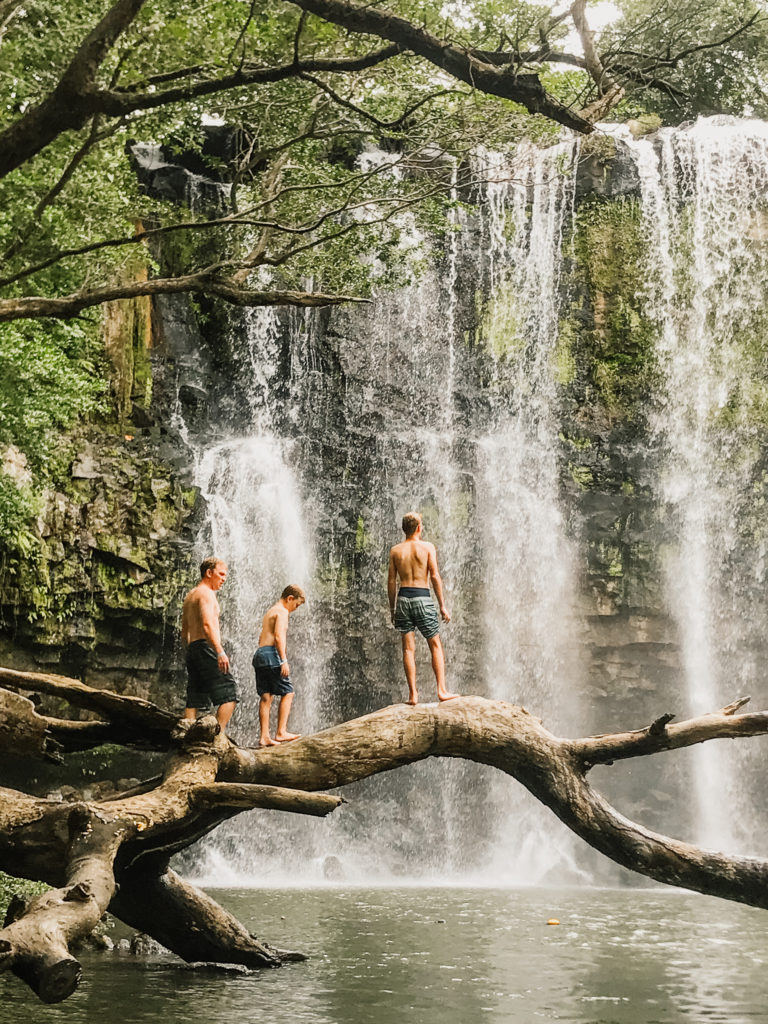
This one is a goodie and practically free too. Just outside of Liberia, about an hour’s drive north of Tamarindo is this beauty and a local favorite (especially on the weekends). Pay a small entrance fee for parking and take a short walk down to these falls, where you can easily spend an afternoon here cooling off in the pools below. There are some smaller, lesser known falls across the creek that are worth visiting too, just ask a local for directions if you can’t find the path.
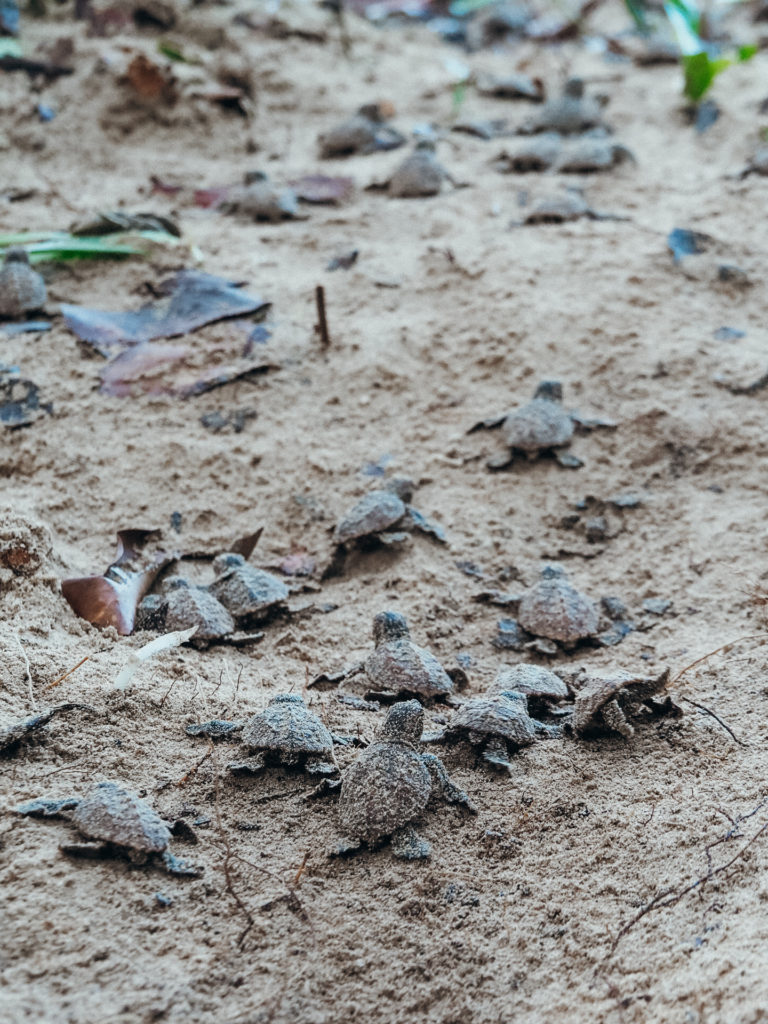
Costa Rica is a prime location for different species of sea turtles that lay their nests here. The Guanacaste region is one the best spots to witness this amazing spectacle each year and depending on the time of you visit, you could get lucky and experience an “arribada” (a mass turtle nesting) or see baby turtles make their way out to sea after they’ve hatched (1-2 months after incubation).
The best places to see the turtles in the Guanacaste are Ostional National Wildlife Refuge (one of 7 sites in the world that sees arribadas), Marino Las Baulas (Playa Grande) and Santa Rosa National Park (Nacite beach). At Ostional you can witness thousands of Oliver Ridley turtles during the months of July-Nov.
Playa Grande is famous for leatherback turtle nesting sites (although not as many in recent years) between Oct-Feb. A little harder to get to, Nacite Beach which requires a 7-8 mile hike, is another arribada site in Costa Rica. For more information on doing a tour or other helpful tips on turtle nesting, visit Costa Rica Experts.
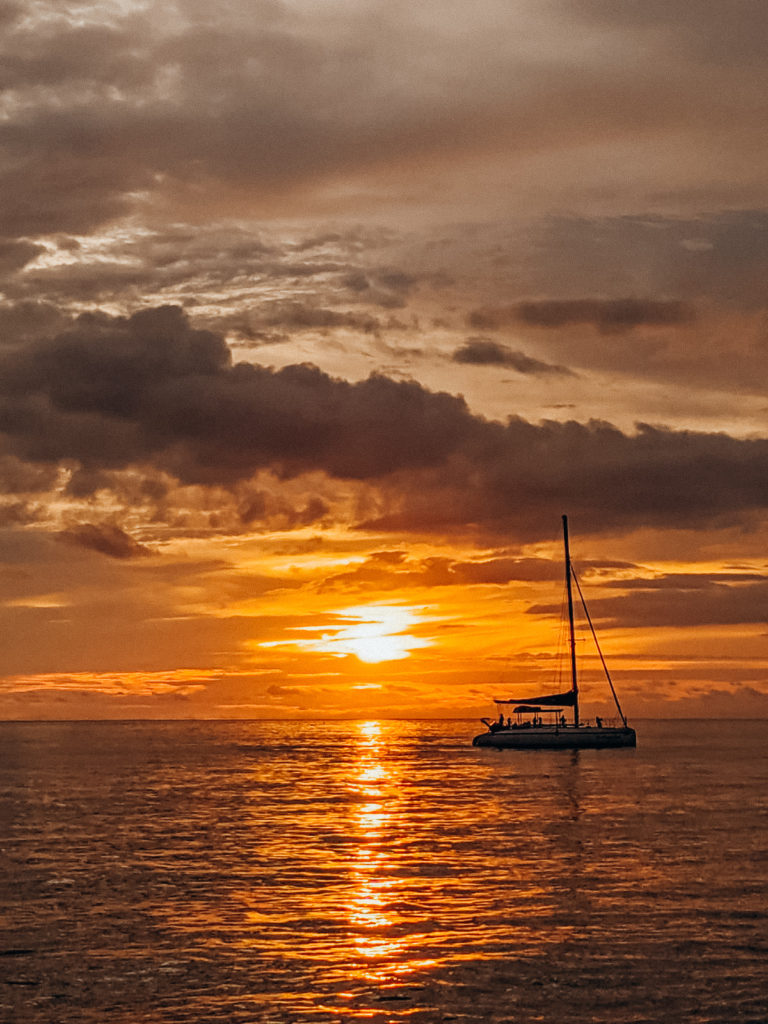
You can’t come to Tamarindo without doing a sunset catamaran trip. The sunsets here are legendary (especially in the wet season when there are often clouds) and it’s best to experience them from a boat. We took the Blue Dolphin Snorkel and Sunset tour, which was awesome because we spent the afternoon sailing to a beautiful spot to snorkel and paddlebaord/kayak, and then ate dinner and watched the sun go down from the catamaran.
Prices range from $80/person and up depending on the trip and trips usually leave from Tamarindo Beach, Playa del Coco and Papagayo.

One of the most adventurous things we did while staying in Costa Rica was rent an expedition rig from Nomad America and camp on the beach! They have a fleet of trucks, Landrover Defenders and other 4X4’s to fit your needs, but what makes them so awesome is that they come equipped with all your camping needs!
Roof top tent? Check. Stove? Check. Cooking essentials? Check. Shower? Check. These vehicles have everything you need, plus they come with a phone that has the iOverlander app to help you plan your route and camping spots! We spent 2 weeks touring the Guanacaste area, beaching camping near Nosara and Samara, and also in the mountains of Tenorio National Park.
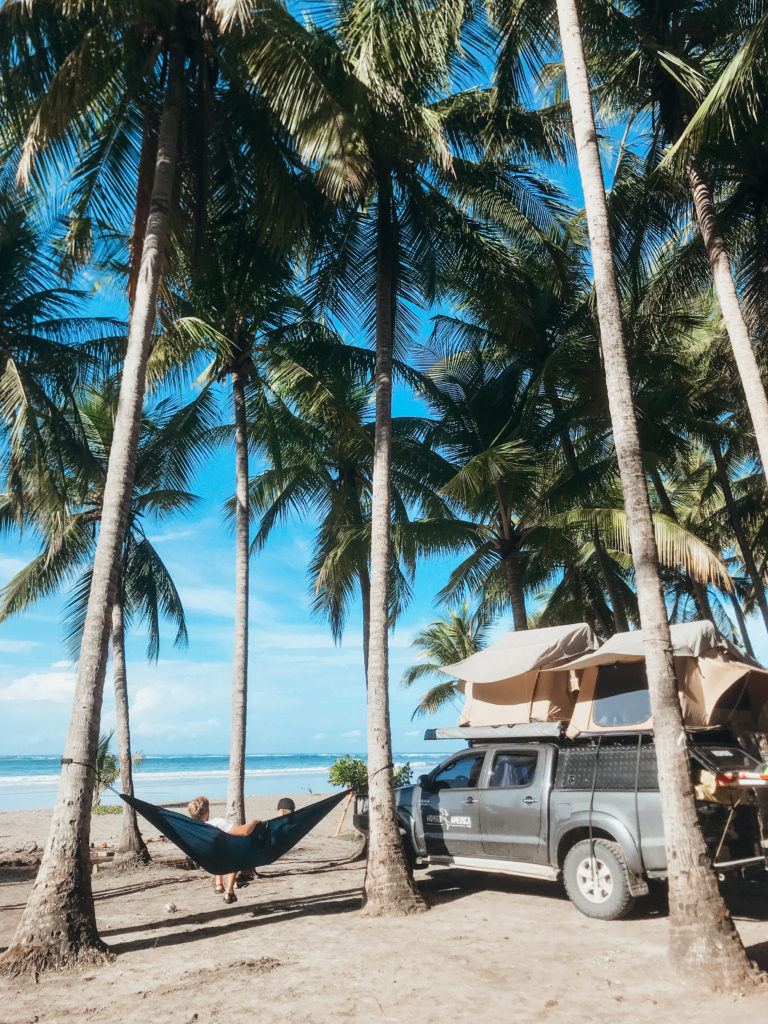
We loved that Nomad America thought of everything, they even included a 5 gallon jug of water, camping chairs and a machete (hey, you never know when you might need to crack open a coconut or trail blaze through the jungle!). These vehicles are built for the rugged roads of Costa Rica too–there was nowhere our truck couldn’t go. If you’re looking to get off-the-path, look no further than Nomad America!
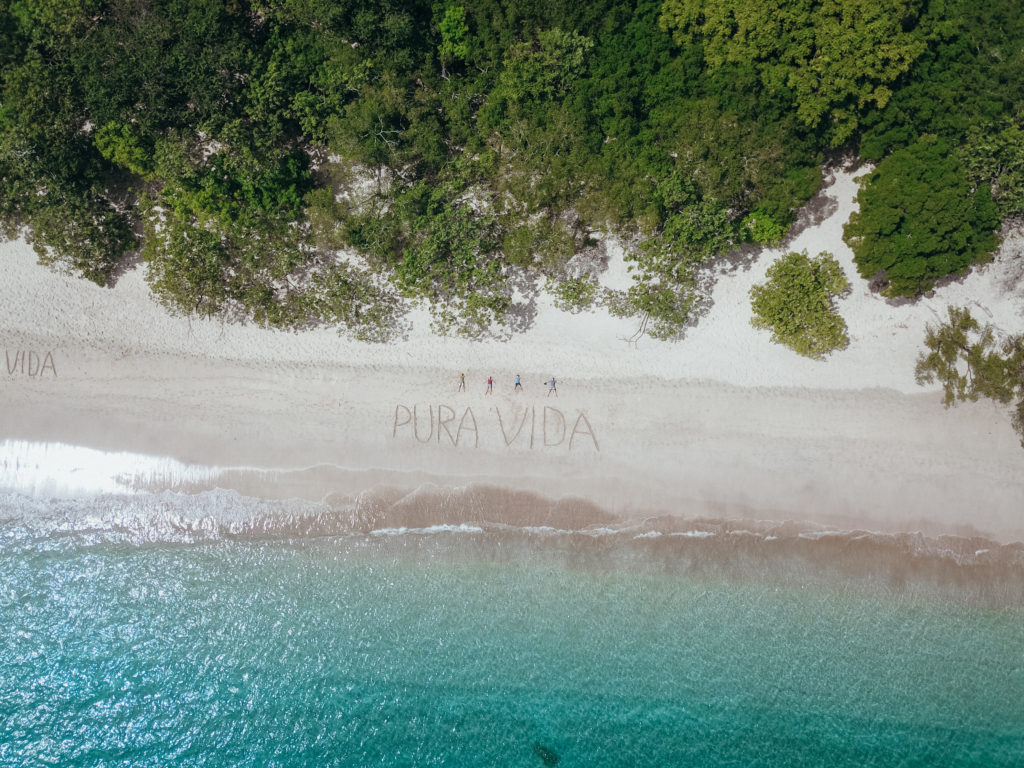
If you’re looking for more ideas and guides in planning your Costa Rica itinerary, make sure to check out the Ultimate Costa Rica Family Adventure Vacation and our 10 Day Itinerary in Costa Rica’s Southern Pacific Coast.